THE WINE MERCHANT.



Fourteen out of every 100 wines on the shelves of indie merchants do not come via wholesalers, survey shows
Despite the challenges of Brexit, 47% of independent wine merchants continue to directly import at least some of their wines – and nearly a third say they will increase this activity in the coming year, according to this year’s Wine Merchant reader survey.
The results show that around 14% of what’s on independents’ shelves is sourced directly – a lower figure than recorded in previous surveys, although perhaps higher than might have been expected
given post-Brexit complications, which have persuaded some indies to give up on imports.
Many participants in the survey say that importing their own wine gives them access to exclusive products and the ability to maximise margins. But for others, the paperwork and cash flow implications make importing more trouble than it’s worth. Just over a quarter of indies say they will continue to source all their wines from UK suppliers.
Last month The Wine Merchant hosted a webinar which offered advice to indies who want to explore importing. Merchants who took part, with experience of shipping their own wines, agreed that the key to successful importing was finding a good freight forwarder to handle the admin.
• The second instalment of this year’s survey results begins on page 21; a report on the direct importing webinar starts on page 50.

46 edinburgh round table
The first instalment of this year’s indie summit in the Scots capital
60 focus on french wine
David Williams takes a look at how the key regions have been faring
79 Q&A: katie JONES
You can take the girl out of Ashby de la Zouch …

In March, The Wine Merchant flew to Patagonia in the company of three independents where we visited Otronia’s estate – probably the most southerly commercial vineyards on the planet – while the vintage was under way.
The trip was a prize for indies who took part in an Otronia and Argento sales promotion. It also included a visit to Argento’s vineyards in Mendoza – as well as some horse riding and quad biking in between times. Look out for a full report in our May edition.




Kirsty McEwan has secured her first bricks-and-mortar premises in Edinburgh and will open the doors at the end of this month.
McEwan launched her online shop, Bludge, in 2021 but always planned to have a physical store. Her name may be familiar as her CV includes stints at Scottish indies Valhalla’s Goat, Aitken Wines and WineKraft.
McEwan’s most recent role, or “non sidehustle”, has been the sales and distribution manager for charcuterie company East Coast Cured and as it has relocated to a new factory, she has taken on its previous shop space at Restalrig Road in Leith.
“It’s not a massive shop,” she says, “but there is a little room underneath and hopefully that will become a tasting room.”
Does this move mean she’ll be revising her range? “Oh 100%,” says McEwan. “I pretty much only use Boutinot and top up here and there, but there are definitely some people that I want to work with. I’m very keen to take on North South,
1. What white grape occasionally makes an appearance in Côte Rôtie reds?
2. Which English-born winemaker founded Marlborough winery Greywacke in 2009?
3. What did Abraham Perold invent in South Africa in 1924?
4. Which still-existing UK wine merchant’s first shop opened nine years before the French Revolution?
5. In winemaking, what does MOG mean?
Answers on page 54

particularly their Portuguese range.
“It was a retail shop before, so there were already a lot of things in place that I can use, but I will have to invest in some more shelving.”
McEwan says she already does some wholesaling, and she’ll continue running Bludge online too, but she is now able to run the entire business from her new retail premises.
Bottle Bar & Shop in Catford closed last month. During almost seven years of trading, owners Xhulio Sina and Natalie John have built a following for their handcrafted batch cocktails.
The couple hope to resurface at a new site in south east London but for now the focus is on direct sales and supplying trade customers.
“Our site in Catford was too big and so the cost were too high, hence we decided to move online and wholesale only, for now, ” says Sina.
“We are still looking for a smaller site within Catford, so it is not farewell.”
Novel Wines in Bath closed at the end of March but continues to sell online and focus on growing its reputation as a supplier of “off-the-beaten-path wines”.
The business, which specialises in wines from central and eastern Europe, was founded by Ben Franks and Gyorgy Zsiga in 2016. Franks stepped down from Novel Wines last year to work full-time at The Canned Wine Company, which he cofounded with Simon Rollings.
Novel director Will Hill says the shop closure was “a big decision, but a positive step forward in the greater Novel picture”.
• There has been a changing of the guard at Bradmans Wine Cellar in Derbyshire, founded by father-and-son team John and Tom Morris in 2018. John has stepped back from the hybrid operation, which is now solely in the hands of Tom. Former England Test cricketer John says he is enjoying working on “some sporting contracts” now he’s no longer running the business, which has sites in Duffield and Matlock.

After a year of trading in Broadstairs, No 1 Oscar Road has moved from its eponymous address to a boutique hotel in the Kent town.
Co-owner Alex Prymaka explains that the Oscar Road premises are owned by the restaurant Stark which is reclaiming the site to run events and pop-ups, despite her best efforts to renegotiate the lease.
The retailer was able to enjoy the Easter weekend trade before shutting up shop and regrouping ready for the next chapter.
From May, Belvidere Place will be the new home for Prymaka and her team. Operating a wine business within a hotel is something that’s familiar for her and her partner Josh.
“Josh and I used to work at The Old Bridge in Huntingdon – that’s where we met,” says Prymaka, “so we’ve worked in this kind of setting before. We loved working with John [Hoskins MW] and he opened up so many possibilities for us and our careers.
“I think Belvidere Place is very similar to The Old Bridge: the way it’s been decorated, the attention to detail. We’re really excited to make the move. We’ve already got a private party booked, so we’ll hit the ground running.”
A slight rebrand will be in order, under the banner Oscars at Belvidere Place, a solution that allows Prymaka to retain the identity of her business, while working in conjunction with another.
“We’ll still offer the retail side of things although the focus will really be on the bar and events and we’ll see how the space is used by the customers,” says Prymaka.
“There’s so much happening in Broadstairs right now; a lot of exciting things going on. We’re looking forward to setting up the bar and getting everything just right during that transition period, ready for a busy summer.”

Corkscrew in St Helier, Jersey, has been bought by Randalls Jersey, which owns 19 pubs on the island as well as a newly branded retail division, 1823 Cellar.
The group already has a wine shop in St Brelade, on the west of the island.
Corkscrew was launched just over two decades ago by Ian Rayson and Ruth Wakely, and Randalls sales director Flo Aranda says it has built a reputation on the island “for having things that you cannot find anywhere else”.
He adds: “We will make some changes and put our wines in there, but I like the fact that it’s quite quirky.
“There will also be some stuff that we’re going to keep because it’s what made them what they are.”
The wine range at 1823 Cellar is from a combination of suppliers, plus some directly-imported wines, mainly from Muscadet, Bordeaux and the Loire Valley.
Aranda says: “When the dust settles, we’ll definitely be hosting events in the shop. We have a couple of wine dinners booked with one of our suppliers.”
The rebranding will include some subtle nods to the shop’s past. “I do like the nostalgia attached to it,” says Aranda. “There’s a couple of shields outside the shop that say Corkscrew on them, and I’m going to keep them as a bit of a homage to Ruth and Ian.”
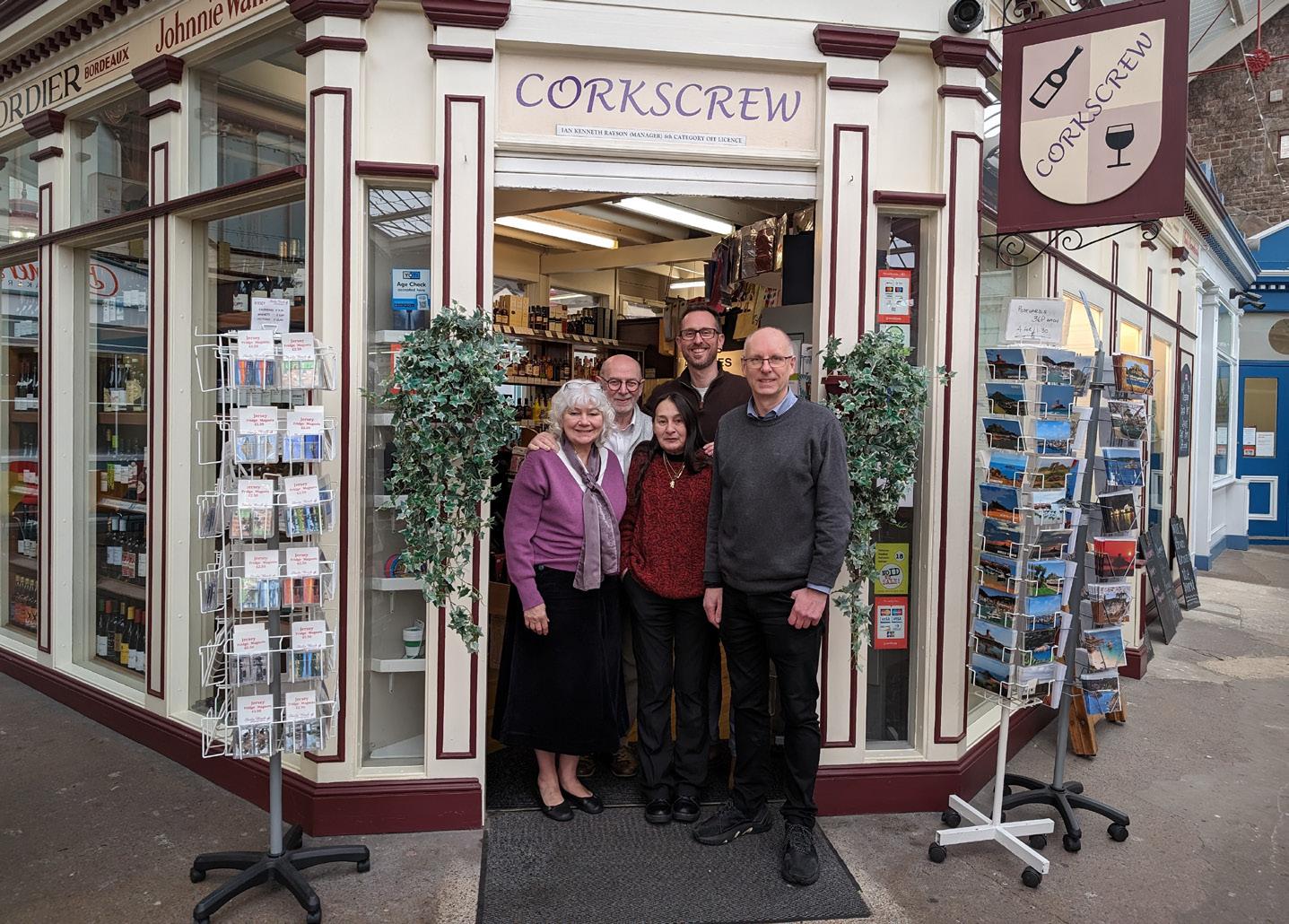

Matt Thomas’s Vinoramica business started out in 2017 with a shop in Waltham Forest, north London. Since relocating across the road, he’s planning a future with more events, more direct importing and even more retail.
“I’d always set out to open a shop and although that was the focus for me and our first site was very small, I used to open it as a bar in the evenings,” he says.
“I was fairly certain that at some point I’d have to move to a larger premises and I’d had my eye on the site over the road for a while. When it came on the rental market and I saw the agent showing someone round, a shudder went down my spine and I thought: I can’t have someone else moving in there, that’s our place.”
Acting on his gut and without much further thought, Thomas signed on the dotted line and admits he “probably spent the next year regretting it”. It was July 2020 so, not being allowed to open for on-trade sales, he felt the pressure was off. He spruced up the extensive garden and created a welcoming space for returning customers.
“For about a year and a half we had two sites and it was fine,” he explains. “But financially it didn’t really stack up. It was stressful because it was quite hard to staff and I spent a lot of time just walking from one side of the road to the other.”
Consolidating the business by giving up the first shop at the beginning of

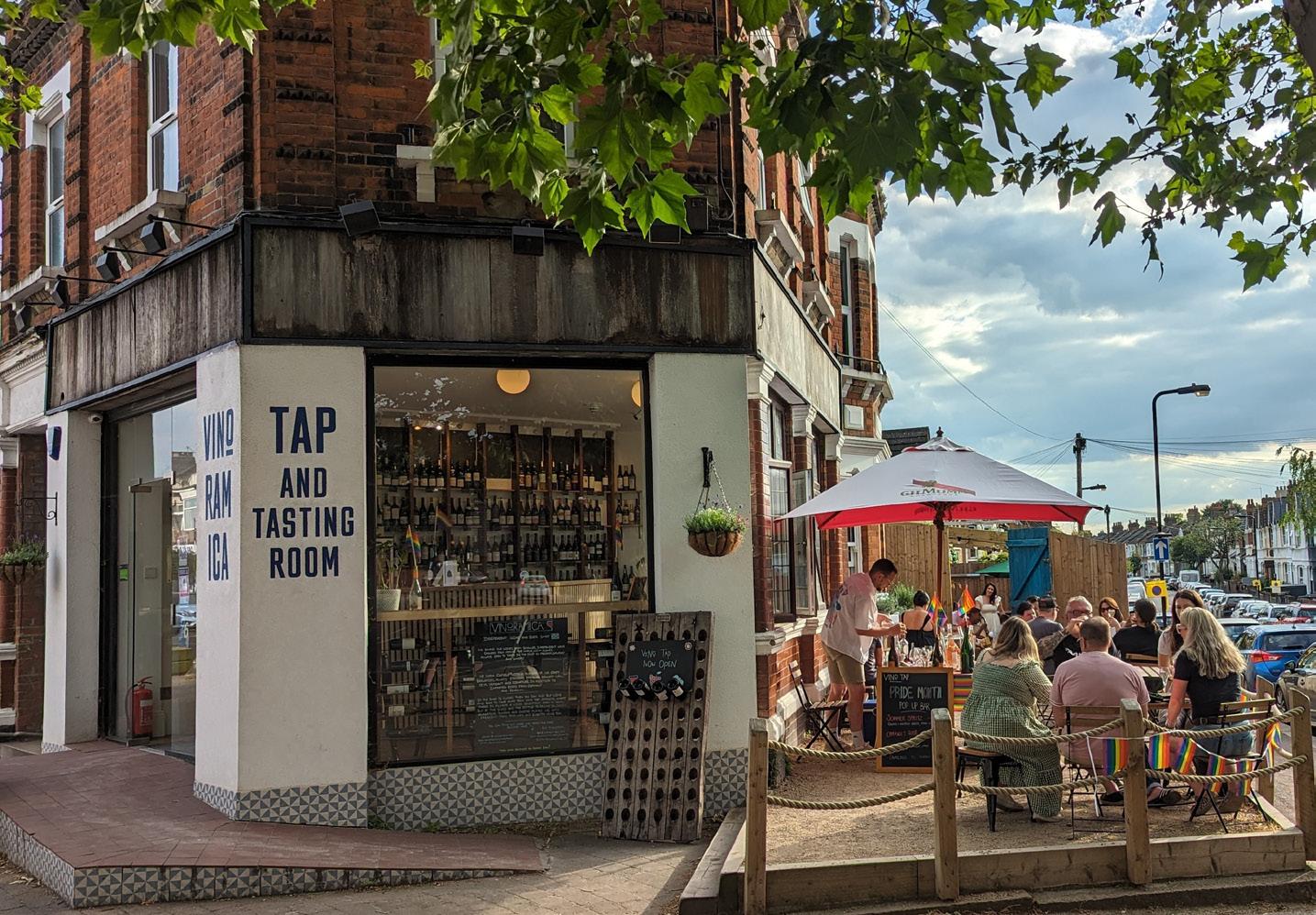
The new site is in “a great location, right on a corner”
2023, Thomas says any regrets he had concerning the new site are far behind him.
“It’s in a great location, it’s got huge windows and a lot of visibility as it’s right on a corner. It was built as a pub in the early 1900s, so it has a cellar, which hadn’t been used since World War II. It’s also got a fair amount of outdoor space – room for 40 covers in the garden and another 40 on the terrace.
“There’s a nice division between the front and the back of the shop. The rear area of the bar is very much like a tasting and events room that people can book out for parties, and the front looks a lot more like a shop. It was in my mind from the beginning that the front would be unmistakably retail.”
With manager Craig Buckmaster running the bar side of things (“he’s indispensable, he’s so much better at all that than I am,”) Thomas says this year he intends to increase the events.
“I try to say yes to most of the community things. There’s a monthly arts and creative club and we open up to them, and there’s also an art trail. We’ve had artists come in and do workshops and we have at least a couple of works from local
artists on the walls.
“There are usually two or three park events a year and we will have a stall there. I feel we are a bit of a community hub. We have local food businesses come in and do food pop-ups, and visiting chefs for supper clubs. We can comfortably fit 30 people seated inside.”
“There’s a lot more potential for the shop,” he adds. “In terms of space, other than moving a couple of fridges around and adding some more shelves, there’s not a lot I can do to increase the retail area, but I can improve it and lay it out a bit better.
“We’re working on a new website and hope that will bring more retail customers in and increase demand for local deliveries. There are so many little residential areas that we barely deliver to at all.”
Thomas says the other thing he’ll be thinking about in the coming months is making more of the VinoTap branding he’s introduced.
“We’ll see, but I think Vinoramica will remain the business and website name, for e-commerce and delivery. VinoTap is the very much our physical space; the bar and if people are coming to the shop for faceto-face sales.”
Matt Thomas (By @andras_ridovics)Corc in Barry is on the move to the High Street of the south Wales town.
It’s been a year since Nick Lawrence and Emily Weaver opened their shop in an old railway carriage in a retail area known as The Goodsheds, near Barry Docks.
Weaver says the move to the new location is “less about the space and more about the autonomy” it will give them to run future tastings and host winemakers.
The couple always intended that tastings and events would be a big part of the business, but discovered quite early on that the limited availability of communal spaces at The Goodsheds restricted their ability to host events.
Operating between the two shops while licensing was ironed out, the couple

managed to hold a couple of events at the new premises before opening fully earlier this month, not far from the original shop.
According to Weaver, the shopping area “has had a bit of a dip in the last few years”. She adds: “It suffered a bit over Covid but it’s always managed to retain its core.
“There’s a butcher, a deli and a couple of boutique shops, which all seem to have been there forever, and a few businesses that started off in The Goodsheds have now moved and are populating the High Street.”
In addition to having a cellar, the new premises offers three distinct sections for retail, tasting and back of house.
“The middle space is our tasting room,” explains Weaver. “It’s dark green, so when you walk through from the shop, it feels like stepping in to a very different place. We’ve got a table in there which seats 10. It’s all very vintage, with low lighting and velvet curtains.”

In contrast, the retail space at the front is painted bright white but – with the addition of seating made up of vintage finds on Facebook Marketplace, a coffee machine and a baby grand piano – it will be full of personality.
“Eventually the cellar will become our second tasting room,” Weaver adds. “It needs a bit of work doing, but maybe for our bougier events, you get invited into it.”
Weaver says that had the business model been solely retail they wouldn't have moved so quickly, but she feels the markup to be made on drinking-in is too good to ignore. “It makes such a difference to our margins and our income stream by having wines by the glass and tasting events,” she explains. “And it’s the added value: we’re selling the experience.
“Moving so soon has been a bit of a risk, but a risk we had to take in order not to stagnate where we were.”
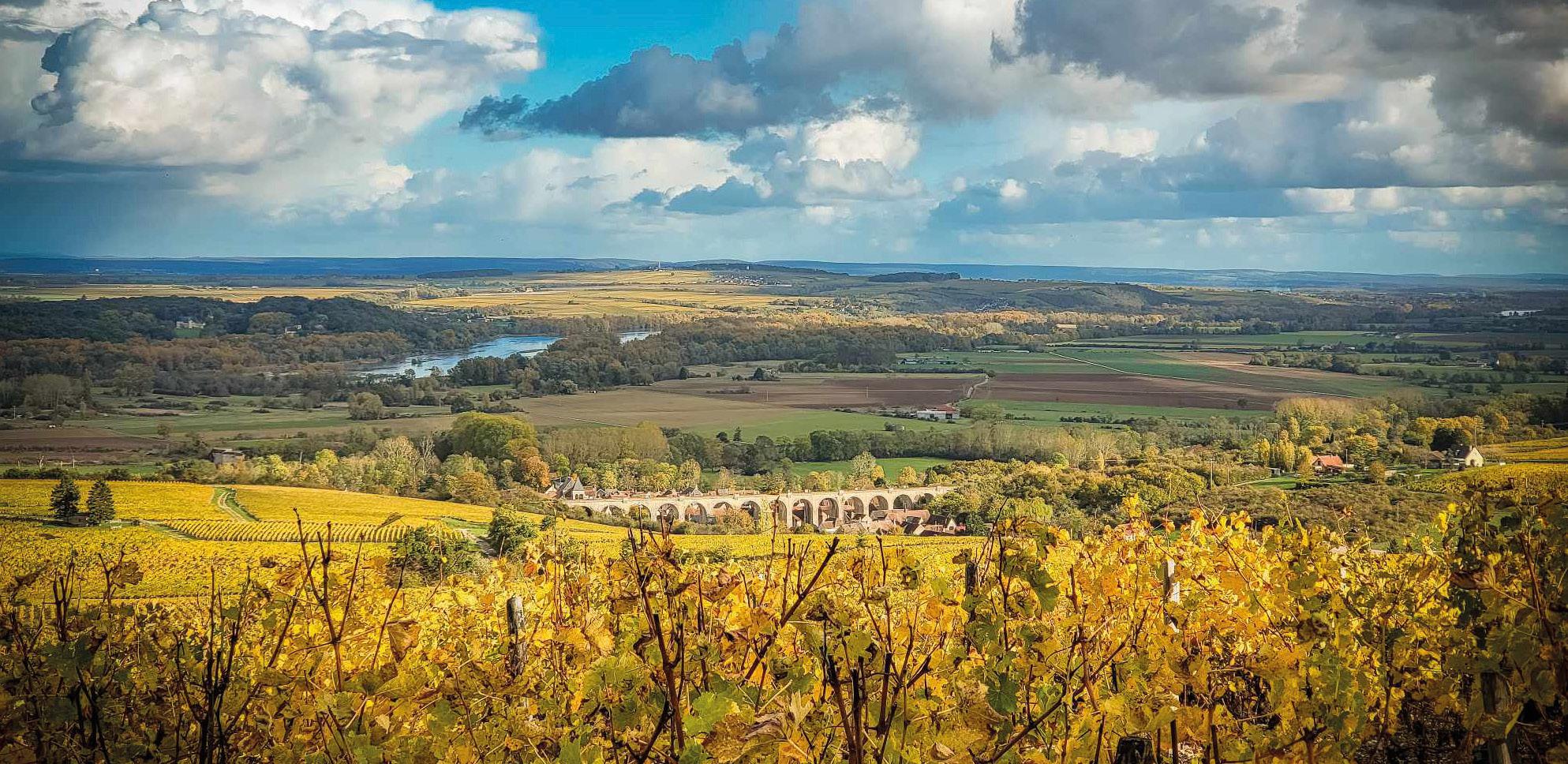



Deeply rooted in the heart of Sancerre, the history of Joseph Mellot spans 500 years and many generations of the family.
Today, the company is headed by Catherine Corbeau-Mellot with her sons Adrien and Armand by her side, crafting sustainable wines from Central Loire and beyond.
To find out more about their sustainable and organic range, please contact Hatch Mansfield at hatchmansfield.com

Wine adulteration is nothing new. And sometimes punters enjoy the additives
Long, long ago, in the late 1970s and early 1980s, I remember seeing auslese and beerenauslese at a fraction of the price you might expect.
When you looked closely at the gothic label you would realise that it was Austrian and not German. That was perfectly
normal at the time, and these wines had been around for at least a decade.
In 1985, the Austrian wine industry was destroyed by the “antifreeze” scandal. It was driven by the insatiable demand of (mainly German) supermarkets for sweet wine at unfeasible prices.
But it wasn’t antifreeze. It was diethylene glycol, not ethylene glycol: still illegal and still toxic, but not quite so deadly. What caused all the bother was a tabloid journalist wilfully misunderstanding the chemistry and giving it a word everyone knew. That put it on front pages all over the world. (Amusingly, the Australian wine industry also took a hit.)
It was much the same as an unknown journalist called Boris something-or-other reporting on the EU and moving from the inside pages to the front by talking rubbish about bendy bananas. That eventually led to the downfall of the UK, but that’s another story.
I am aware of the detail of the scandal because I’ve just read Vintage Crime by Rebecca Gibb MW. It is well worth the read, even if it does tend to explain every little thing a dozen times for the target American readership. It is well researched and very readable despite that.
Anyone not involved in the wine trade
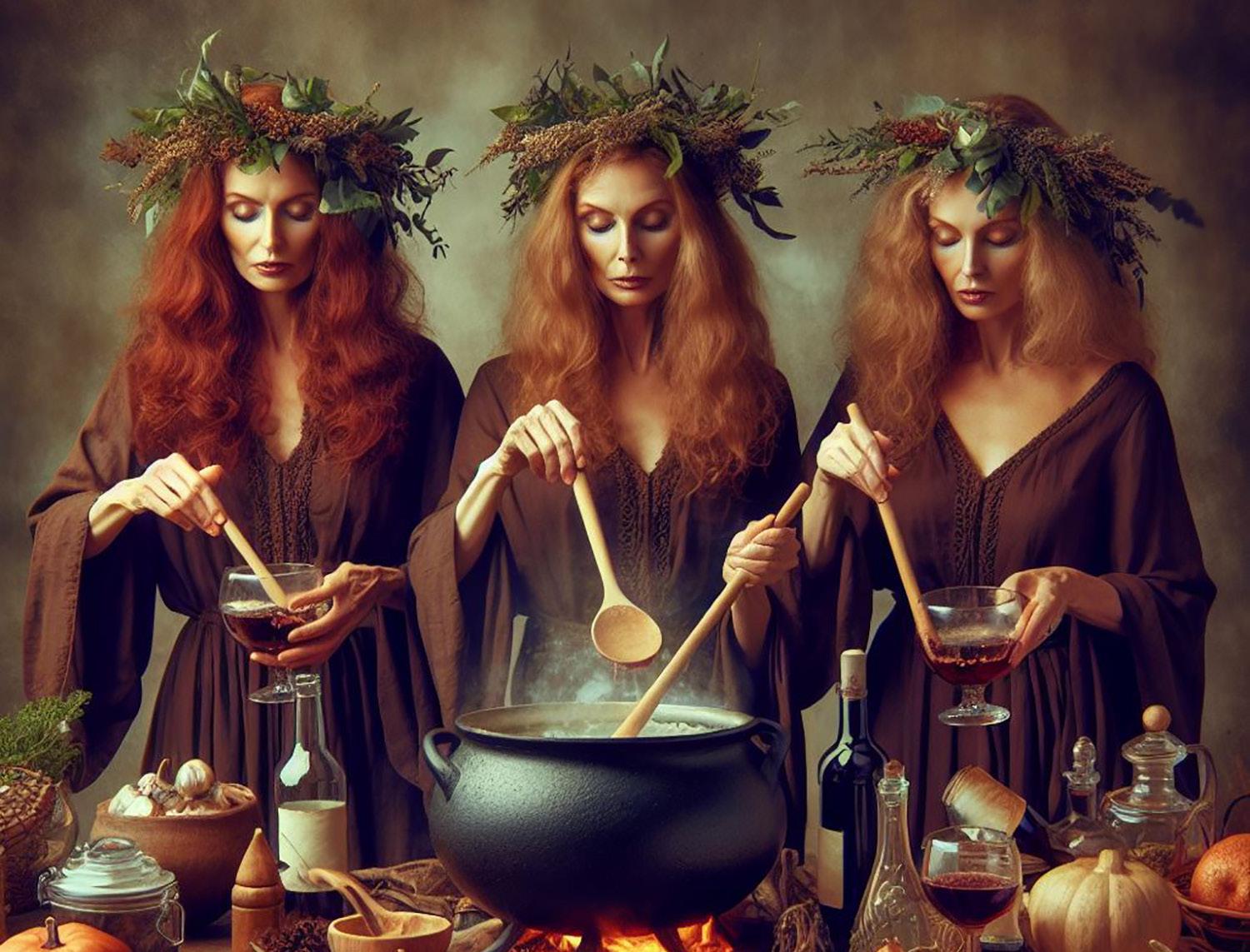
reading the book would probably sign the pledge and never drink again. Gibb details instances of wine being messed with from Roman times to the modern day. Happily (or maybe not) it seldom gets anywhere near the front pages of the mainstream media.
She mentions that the Italian methanol scandal, which did actually kill a large number of people, may have really blown up had Chernobyl not blown up at the same time.
he had acquired with his new French passport and rolled his eyes. I asked what the problem was, and he pointed out that the tanker was registered in Bordeaux. Plus ca change.
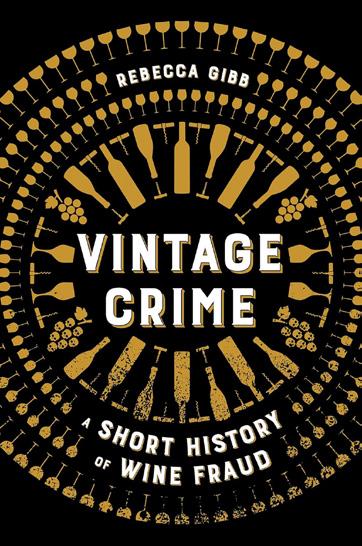
People had been poisoned by lead for centuries because it sweetened otherwise undrinkable wines – and strong, sweet wines had always been favoured because they didn’t turn to vinegar quite so quickly. Anyone today complaining about “added sulphur” should think themselves very lucky they didn’t go the same way as Beethoven (possibly).
Vintage Crime: A Short History of Wine Fraud
by
Rebecca Gibbis published by The University of California Press
Now here’s the thing that struck me: some of their customers preferred the merchants’ concoctions to the real thing.
This led me to take another look at The Park in Avonmouth, Bristol. This is the massive bottling plant originally built to bottle Accolade’s wines and now processing around a quarter of all the wines drunk in the UK. It bottles things like Hardy’s Stamp, I Heart, Jam Shed and 19 Crimes, along with award winners from the likes of Kylie Minogue. The UK supermarkets have an insatiable demand for big jammy red wines and sweet fizz at unfeasible prices.

Bin there, done that Dafydd Morris’s Bin Gate campaign to get a dilapidated bin removed from outside his Cheers shop in Swansea has paid off. Dafydd’s videos featuring Barbie (aka Margot Robbie) and Catherine Zeta Jones photoshopped on top of the increasingly manky bin soon got the attention of Mumbles town council, which apparently asked him to stop posting. He was rewarded with a new bin after a week-long series of Instagram posts.
It would appear that the main reason for adulteration and – using a word Gibb uses frequently – “amelioration” of wine was that it was sold in bulk to merchants who would tinker with it before bottling and selling it.
For some it was pure greed. For others it was to make a wine more palatable to their customers. They would frequently take wine like Burgundy and add a good measure of Algerian red, glucose and even blueberries to make it more drinkable, particularly in a thin, cold year. The move towards estate bottling largely got rid of this. But of course a lot still goes through negociants, so the problem has never completely gone away.
The book reports a more recent scandal in Bordeaux where a prestigious negociant was tried for taking in large amounts of wine from Languedoc and passing the blend off as decent claret. That case should have put an end to the practice. A few years after it happened, I was driving through Languedoc with Daniel Lambert. We stopped to let a huge tanker out of a winery. Daniel deployed the Gallic shrug
The Park boasts a “recipe creation lab” led by its “beverage blending manager” and “to bring the recipes to life we have a stateof-the-art, high-speed beverage blending facility, capable of combining multiple ingredients to provide a perfectly blended product, with accurate targeting of abv throughout”.
As temperatures rise, so does the abv of many real wines. The Park, however can easily take advantage of current excise bands and knock out a wine at 11% abv, and probably in a pint bottle too.
It is not fraudulent, and it probably keeps within legal additive limits. But isn’t this what estate bottling and appellation systems were introduced to combat?
The sad thing is that many drinkers appear to prefer these concoctions to the real thing.
Luckily, there are over a thousand independent wine shops in the UK selling the equivalent of red squirrels for those people who are aware that the grey squirrel is a new world, furry-tailed, tree rat imposter which has been allowed to dominate the habitat.
David Perry is the owner of Shaftesbury Wines in Dorset
A worrying story reaches our ears of a revered wine writer attending a consumer event and being invited by the organisers to sample various wines. He’s encouraged to try a Spanish white, but still has the remains of a red in his glass, so the assistant helpfully pours it away and gives it a slosh of water. Before that too can be discarded, our hero raises the glass to his lips and takes a swig. “Now that is a marvellous Albariño,” he declares earnestly, before stumbling on to his next distraction.
No liquid, we’re liquidating
Pushy sales people making a nuisance of themselves at one Midlands independent have forced the owner to resort to extreme measures. “Now, when they ring me, I tell them I’m really sorry but we’re going bust,” our indie friend admits.
The Good Wine Shop’s new premises in St Margarets, south west London, was unceremoniously disconnected from the electricity supply by Yu Energy recently, leaving Mark Wrigglesworth’s team unable to open for several hours and turning customers away. It was reconnected (for a fee) just in time for a ticketed tasting event but Mark is not amused. “Poor internal communication at Yu Energy is probably the cause of this,” he says, “but the fact that we, the customer, are just collateral damage from their organisational incompetence is really rather disturbing.”
Scottish master of wine Norrel Robertson is the brains behind this heady and intriguing Calatayud wine, which blends in a small portion of Viognier in a Rhône stylee. It’s bold, fumey and tannic, requiring some time and thought on the part of the drinker. And then, the violets, black fruit and cinnamon start to dance.
RRP: £29.54 ABV: 14.5%
Walker & Wodehouse (020 7449 1665) walkerwodehousewines.com
Forcada is a variety that pre-dates phylloxera, encouraged back into Penedès viticulture by Torres, and blended here with Xarel-lo. It’s a successful experiment, yielding an aromatic and pretty wine with a little bit of leesy grip and lots of zippy fruit flavours. It tastes like summer has already arrived.
RRP: £19.99 ABV: 12.5%
Fells (01442 870900) fells.co.uk
For many of us, the perfect Cabernet would show elegance rather than greenness, and big, juicy flavours though not over-extracted fruit. This Maipo Alto wine, from a vineyard at 700m altitude where nights can be cold, hits the bullseye, and all for £20. Gorgeous ripe cherry and cassis flavours and a cooling freshness.
RRP: £20 ABV: 14.5%
Vinicon (07920 195183) vinicon.co.uk
Another Mullineux masterpiece, crafted mainly from Chenin Blanc, but with Semillon Gris, Clairette Blanche, Grenache Blanc, Viognier and Verdelho all contributing. Whole-bunch pressing, barrel fermentation, malolactic and French oak ageing adds even more richness and texture – and luxury.
RRP: £33.49
ABV: 14.5%
Liberty Wines (020 7720 5350) libertywines.co.uk




Made from 100% Carricante, grown on the southern slopes of the volcano and fermented in a combination of oak barrels and stainless steel. In a world of identikit whites, it’s got a personality that’s hard to pin down: a herbal nose, perhaps some patisserie aromas, and then some more tropical flavours on the palate before the stony, mineral finish.
RRP: £54.20 ABV: 12.5%
Hatch Mansfield (01344 871800) hatchmansfield.com
Gerd Stepp was born into a winemaking family and worked at Oddbins, and as an M&S buyer, before returning to his Pfalz roots. In appearance and texture, this is classic, delicate, precise German Pinot. And yet there’s a Riesling-like aromatic quality, too, dovetailing improbably with the pomegranate and red apple notes.
RRP: £19.50 ABV: 13%
Ucopia Wines (01435 517080) ucopiawines.co.uk
From Molise, in southern Italy, comes this instantly appealing Falanghina. Extended lees contact and batonnage has added extra depth to the floral and citrus characters, and the finish is gloriously saline. But there’s something else that eludes us. As fans of banana Angel Delight, we’re tempted to say it’s that.
RRP: £20.75 ABV: 13%
Hallgarten & Novum Wines (01582 722538) hnwines.co.uk
This Sicilian producer can always be relied upon to deliver maximum flavour at modest price points, and so it proves here with this fresh and fruity red. It’s from a clone native to the Cortese vineyard, and it creates a racy, pale, strawberry-infused wine that locals serve slightly chilled, with fish. Sounds perfect.
RRP: £14.49
ABV: 13%
North South Wines (020 3871 9210) northsouthwines.co.uk







31 Days of German Riesling is a month-long campaign which runs throughout July, the perfect time of year to celebrate and showcase Riesling’s naturally light, elegant and accessible styles.
Now in its 13th year, the campaign has inspired many creative promotions from wine merchants as well as wine bars and restaurants all over the UK to celebrate the versatility of Germany’s star variety.
Wines of Germany continues to build on the momentum created by successful campaigns in previous years, by offering new ways to help and support merchants deliver the best events they can.
As part of a new initiative this year, participating retailers will be offered a virtual staff training session with an experienced German wine educator to help teach staff about the varieties of German Riesling and enable them to talk confidently to customers about their German offering.
Merchants will also have access to the following:
• Promotion and support on social media and the Wines of Germany website for activities, including features on the events page of the consumer hub – a virtual, educational resource all about German Riesling, which signposts all the ways consumers can get involved with 31 Days, and highlights participants’ events.
Merchants might also want to flex their presentation skills with a new challenge entitled Fridge Door Takeover. The most inventive, extensive fridge display will win a case of German white wines. Encourage customers to reach for a perfectly chilled Riesling by using the hashtag #FridgeDoorWines.

• Support with hosting their own launch party, offering £75 grants for samples
• £1,000 towards new German listings for the winning campaign
• £500 towards new German listings for the runner up
• Digital assets and eye-catching POS to be used in shops, online and on social media to advertise the campaign
• POS packs will include tote bags, tissue paper, window stickers and new posters (while stock lasts)
With over 125 outlets signing up last year, Wines of Germany was impressed with the high-quality campaigns that featured expanded ranges of German Riesling and led to an average uplift in sales of 349% for all participants.
Nobody knows what customers want better than merchants themselves, so each business is free to run a campaign as creatively and as imaginatively as it likes.
The only requirements are that participants offer German Riesling, two of which must be dry, from at least three German producers, and that the promotion is carried out for at least one week during the month of July.
Please read the participant guidelines when signing up. Visit winesofgermany.co.uk or contact
germanwine@thisisphipps.com

Jamie Lyons has been part of the team at Ake & Humphris for almost 18 months and there are almost as many reasons that Paul Auty, the company’s sales manager, gave us when asked “what makes Jamie a Rising Star?”
“He is a joy to hang out with,” says Paul. “He has a puppy-like enthusiasm for being at work. Honestly –think Hungarian Vizsla!
“Jamie is a true team player and fully mindful that the output of the team is greater than the sum of its parts. He’s willing to turn his hand to anything, irrespective of his experience level and he’s hugely motivated to discover new experiences in the glass. He really does soak up knowledge and product information like a sponge.”
Paul also describes Jamie as having “no fear” in the sense that he is “confident to walk into the unknown”, a useful quality when it comes to leading tastings for the first time.
“He loves pouring and sharing wine with people,” adds Paul. “He delivers our tastings with verve. He shows great empathy as a salesperson and delivers great service. He has made a visible impact on sales and the development of the business.”
Jamie’s journey into wine started when he trained as a chef aged 19. “I went through all my chef qualifications and I worked under some very nice people,” he says.
“The menus were all very fresh and seasonal, working with local produce, but we didn’t have an in-house sommelier so every time we designed a menu, the head chef brought in his sommelier friend and he would pair the wines.
“It was at a time when I didn’t take alcohol too seriously, but seeing how the flavours could change between food and wine gave me a different perspective on wine especially. How it can actually enhance a meal really piqued my interest in wine.”
After “chefing for a while”, Jamie tried a few desk jobs but realised they weren’t for him. “I hated it,” he admits. “I can’t sit at a desk, and the nine to five thing just isn’t for me.”
There’s only so much time a creative person can be buried by spreadsheets, so Jamie began investigating
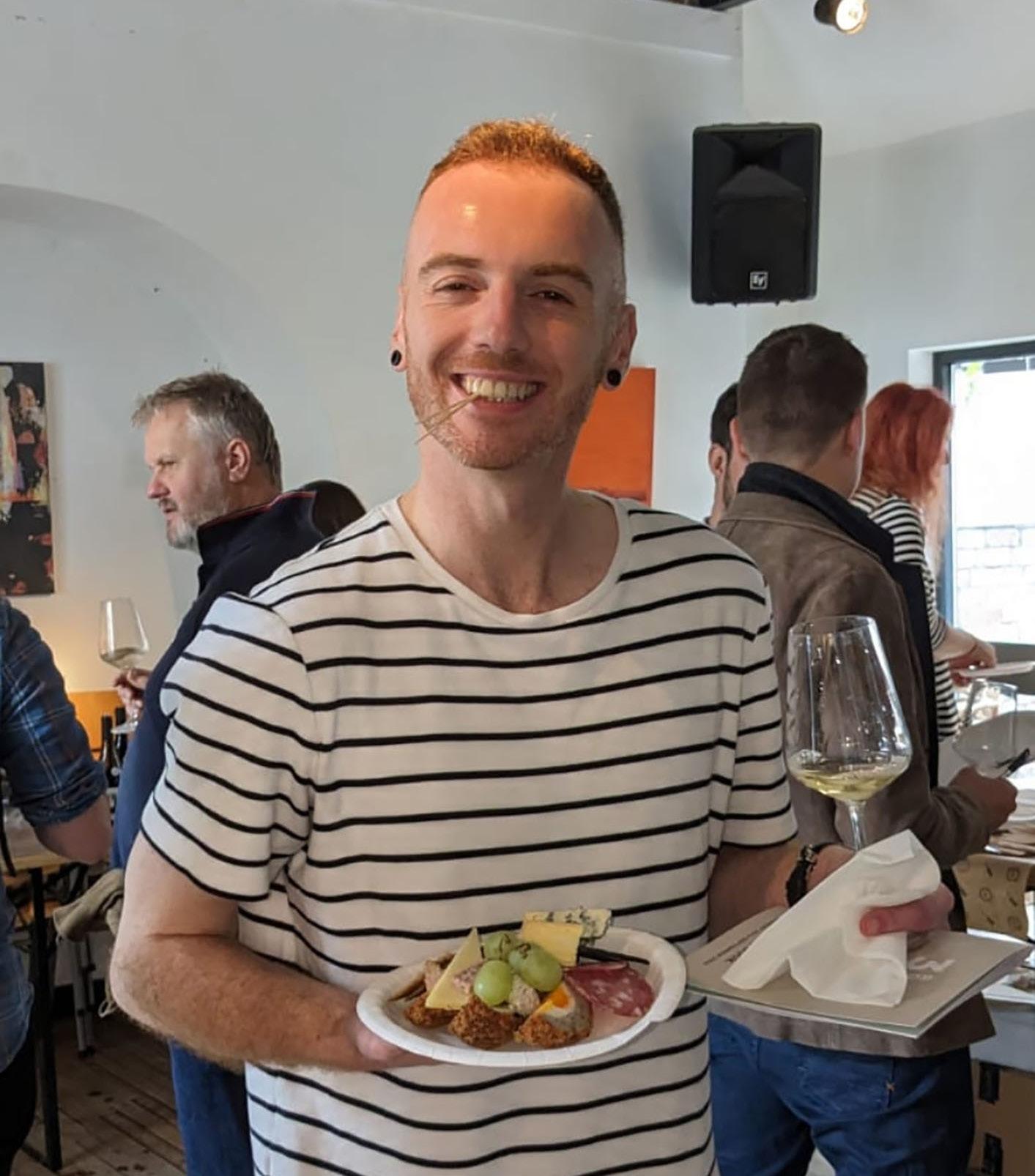
the viability of running his own pop-up restaurant. He decided it was time to learn about wine and enrolled in an online course during lockdown.
“I really, really got into it and thought, I’m just gonna work in wine. It’s such a vast subject with endless possibilities, and that really appeals to me. There are so few career paths where you can actually go into work every day and be continually learning. There’s so much knowledge there about the different grapes and soils and everything that contributes towards what’s in the wine glass.
“I’ve been quite lucky working here because they’ve trusted me quite a lot to go off and make the right pairings for tastings and do my research.”
Jamie has been along to many trade tastingsand would welcome the opportunity to go on a trip. “Everywhere is really interesting: Spain, Italy … I had a lovely Vermentino from Tuscany recently, and I do love Txakoli. I love how they serve it in bars up in the Basque country, pouring it from shoulder height. I don’t think I’ll try that at my tastings … it might not all end up in the glass.”
Jamie wins a magnum of Fels am Wagram Weissburgunder 2021 made by Weinhof Waldschütz courtesy of Alpine Wines
If you’d like to nominate a Rising Star, email claire@winemerchantmag.com

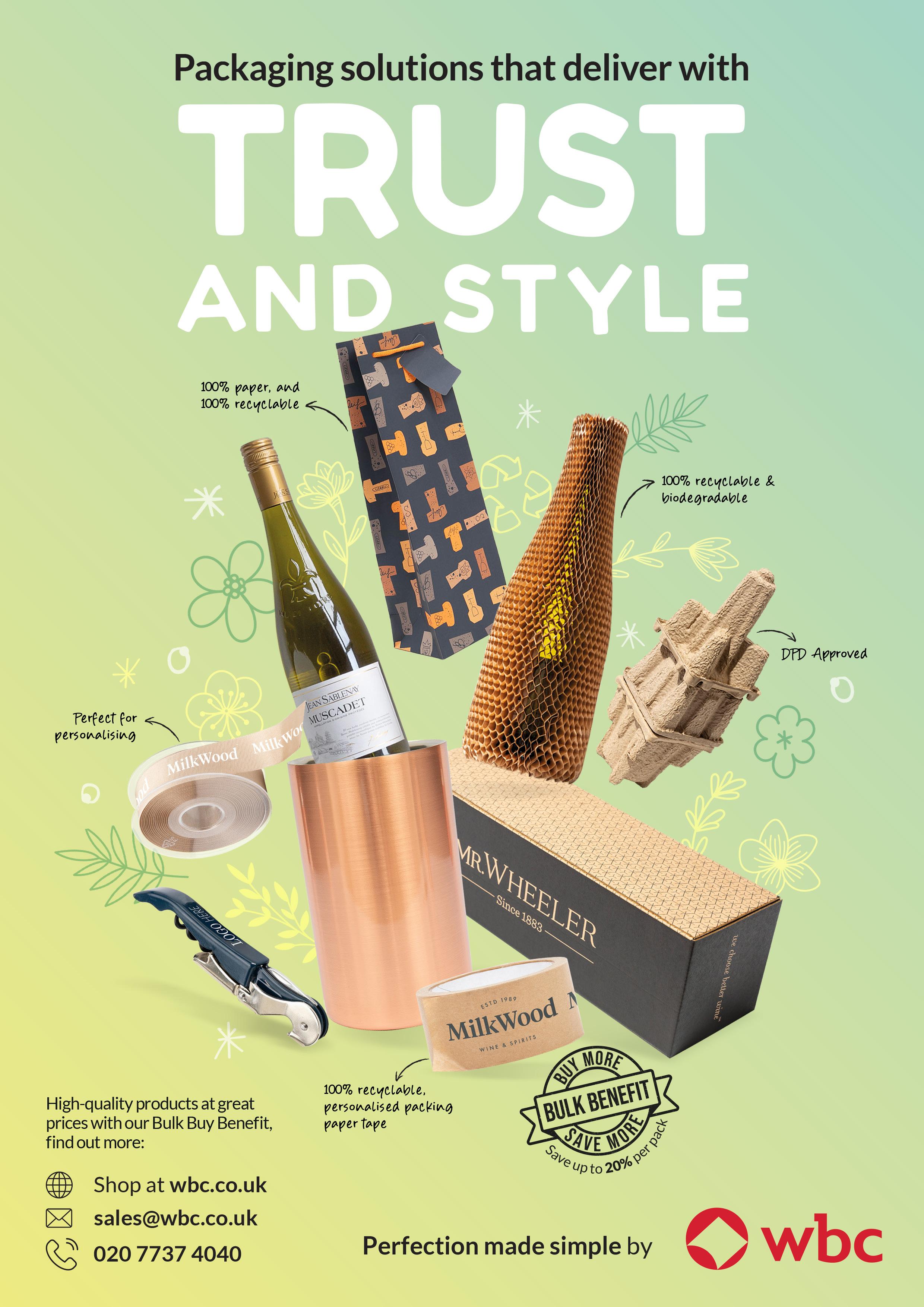

customers we could do without
... I admit it was hard at first, but in a weird way not as hard as I thought it was going to be, and after I’d got through that first weekend of January, I found I wasn’t missing alcohol at all … friends came round for dinner on the third Saturday of the month and I was on the Diet Cokes all night, not a problem … and I was waking up without a headache, I had more energy, my skin looked better … and so when the 31st came along I thought, sod it, let’s keep this going for a few more weeks – let’s call it dry February! I started running again, playing the odd game of squash ... no lager and lime in the bar afterwards, just slimline tonic … and then it just kinda rolled into March … cancelled my wine club subscription – as you know ... started volunteering at the local food bank, met this absolutely wonderful woman there who’s got me into rock climbing and is teaching me sign language … and then to top it all I won £250,000 on the freaking premium bonds this month … and to think, only a few weeks ago I’d have wasted most of that on my wine cellar …

That craft project you keep talking about is never going to happen, and you know it.

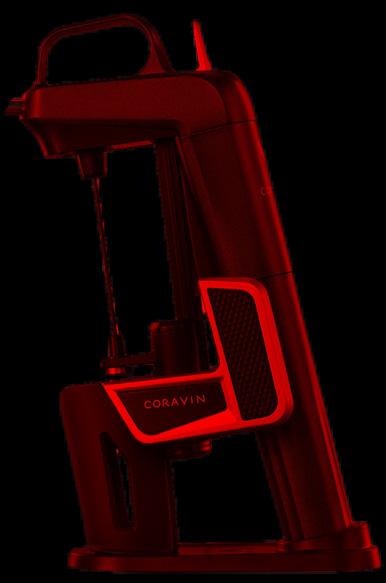
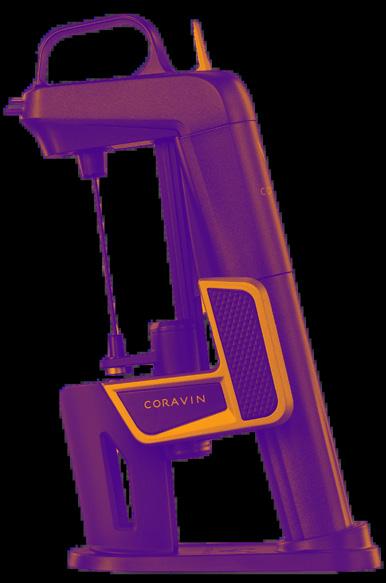





Five independents who took part in The Wine Merchant’s reader survey have each won a Coravin, courtesy of our sponsor Hatch Mansfield. Their names were selected at random from the 200-plus entries we received this year.
Congratulations


In a nutshell: A shelf full of cookery books provides inspiration for Rob’s customers as well as adding to the comfortable and welcoming atmosphere that he’s tried to create in the shop.
“We are just two doors up from a very good local butcher, and people might come in here with dinner on their mind and they’re looking for a wine to have with it.
“We opened last autumn, and we’ve had a really good winter and a strong Christmas, so we are going to have a reset and go hybrid at the end of this month. We’ll start with about 15 seats and put in a bar and a window counter. Once people can sit down and have a glass of wine with us, I think we’ll see them browsing through the books even more.”
Have you gone for a particular style of cookery book?
“Not at all. Some are quite modern and others are quite nostalgic. I started off by bringing in some old favourites from my own collection, and I added to that with some second-hand finds, but as time has gone on, customers have started to donate their favourite cookery books too. We’ve got about 40 books but my vision is to have loads. The more the merrier because I think it’s cool.”
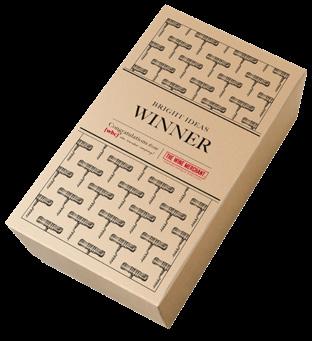

Chanctonbury Wines, Steyning, West Sussex


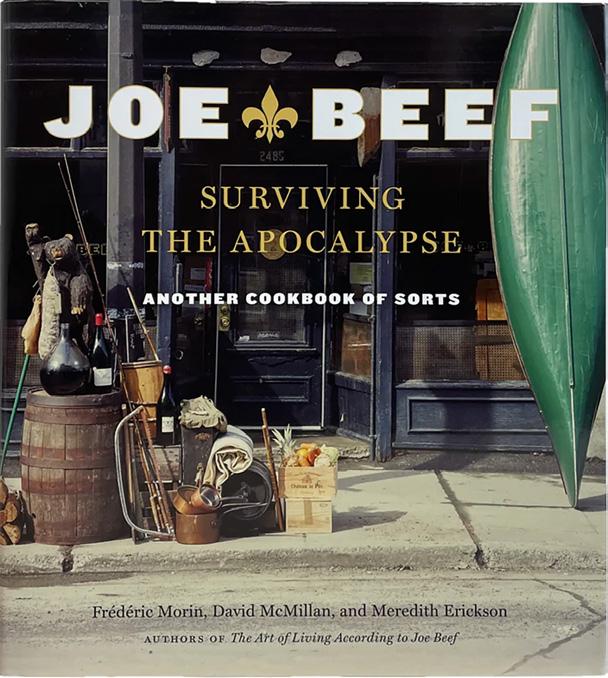
A useful conversation starter.
“What’s wonderful about having a wide range of books from different chefs and writers is that’s it not always about looking for a particular thing you want to cook, it’s more about the feel. I might think: ‘I really fancy cooking a Simon Hopkinson dish’ because there’s a definite feel to those dishes and a joy to those recipes and this translates to choosing wine as well.
“For example, if a customer comes in and says they want a Pinot Noir, as a merchant you think, ‘OK, that’s fine, but what are we actually talking about here?’ It’s about a character or a concept more than specifics. Cookery books can help capture that.”
They look good too.
“It’s all about building a nice space. We’ve got a record player as well now as we’ve been collaborating with the local record shop and done some tastings with them. It all helps to make the shop feel welcoming and encourage conversation.”
You also have some gastronomic treats. “We sell colossal amounts from the deli, especially the charcuterie and that will ramp up once we have our bar area up and running as we will be serving small plates of cheese and charcuterie. We’d like to move more items like tinned fish. It looks nice and people find it interesting.”
Rob wins a WBC gift box containing some premium drinks and a box of chocolates.
Tell us about a bright idea that’s worked for you and you too could win a prize.
Email claire@winemerchantmag.com

Louisa Walls
John Dory Wine Shop & Tasting Room, Folkestone
Favourite wine on my list
One of my favourites is Domaine le Sollier Les Linthes, which is a Syrah/ Grenache blend from a lesser-known appellation in the southern Rhone: Duché d’Uzès. It’s a cracking wine and such good value. It’s lovely to be able to sell fantastic wines from places people haven’t heard of.
Favourite wine and food match
Last Christmas we came to the end of a case of 2009 Doisy-Daëne Sauternes. We savoured the last bottle with a Vacherin Mont d’Or cheese. Heaven!
Favourite wine trip
A 2011 trip to California. My husband and I basically pretended we were in Sideways for 10 days. He proposed to me over a bottle of 2006 Kongsgaard The Judge Chardonnay, which was utterly sensational.
Favourite wine trade person
Phil Weeks from Lea & Sandeman is a complete joy to be around. He introduces us to new wines so thoughtfully. Ruth Spivey is another fabulous person to be connected to: warm, funny, knowledgeable. And if there’s one winemaker I would look forward to having lunch with it’s Vincent Avril of Clos des Papes.
Favourite wine shop
Les Caves du Forum in Reims is a regular pit stop. A treasure trove of grower Champagnes and mature bottles from great French estates.
Majestic Wine is in advanced discussions to acquire Vagabond Wines, which has filed a notice of its intention to appoint administrators.
The deal would add approximately 12 wine bars to Majestic’s portfolio, alongside an urban winery at Battersea.
Vagabond was launched in 2010 by Stephen Finch and offers wine lovers the chance to order more than 100 wines by the glass from self-pouring machines. Retail Gazette, March 20

Alsace winegrowers are set to approve two new bottle shapes.
Since 1955, the region’s official wine bottle shape has been the tall, thin “flute d’Alsace”. The proposed new bottles are known as Bourgeoise and Renaissance and closer to a classic Burgundy shape.
Wine-Searcher, March 24
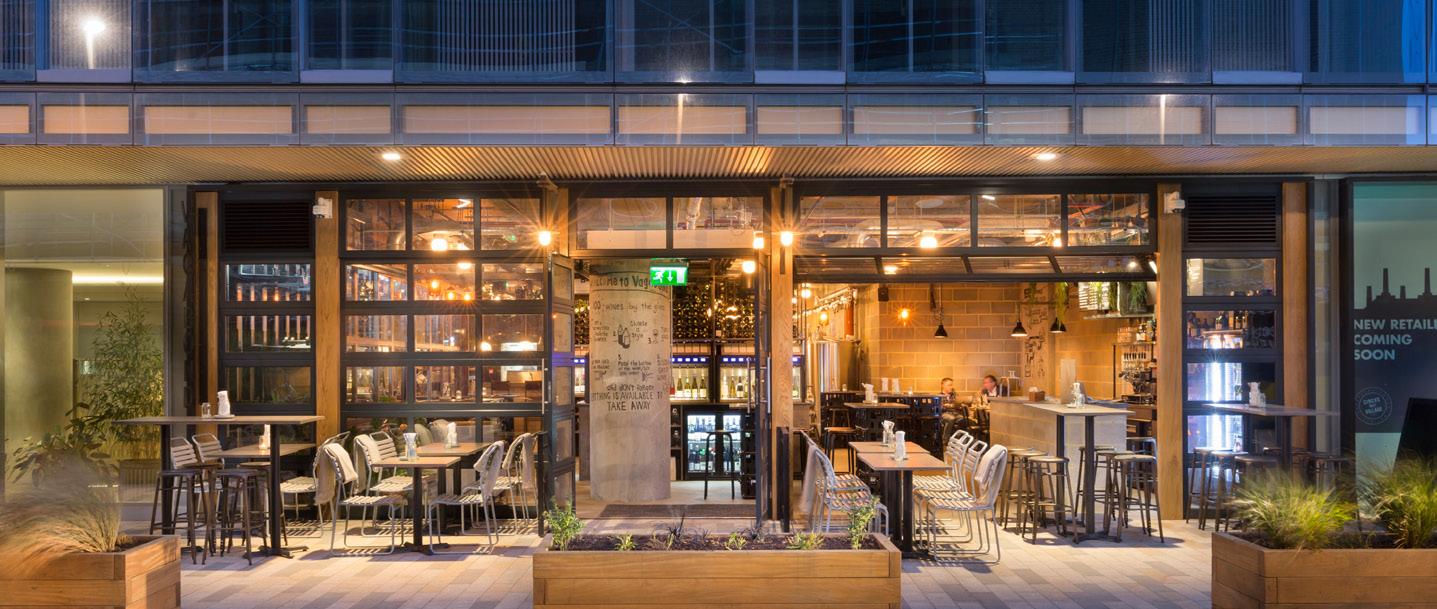
Russian leaders will consider the latest initiative of Association of Winegrowers & Winemakers of Russia to impose duties of up to 200% on the imports of wine from so-called “unfriendly” countries, including NATO states.
According to Alexey Plotnikov, executive director of AVVR, the association has also proposed to cancel the preferential regime for wine imports from Georgia.
A quota may also be set for cafés and restaurants so at least 50% of their wine lists are domestic product, and those drinks must also appear at the top of the menus.
The Drinks Business, March 21
Sommelier Van Doren Chan suggests that only a limited selection of British Columbia’s wines will hit retail shelves in the coming years while vineyards and wineries recover from a litany of climate-related hits, resulting in two years of crop losses.
Growers have experienced recordbreaking heat, along with wildfires resulting in smoke damage. There was a destructive cold snap in 2022, followed by another deep freeze at the beginning of this year, which is estimated to have caused up to 99% crop loss across the province, wiping out the vintage.
The Canadian Press, March 11
Château Latour 2017 was released on March 19 at around £4,800 per 12-bottle case in bond.
Latour 2017 also becomes the first growth estate’s youngest grand vin on the market. In 2012 Latour announced it was leaving Bordeaux’s en primeur system, preferring to age its wines for several years prior to release. This year would ordinarily have seen the release of the 2016 vintage. Decanter, March 20
Twelve-bottle cases of wine are being auctioned off for £20 after a Sheffield company ceased trading.
Hallamshire Wines, of Penistone Road, Grenoside, has folded after 30 years and stock is being sold pending the appointment of liquidators.
Hallamshire Wines was set up in 1994 and run by Richard and Julie Ibbotson, their daughters Emma and Charlotte, and Jamie Christian.
Sheffield Star, March 25
Laithwaites Wine is the new partner of the World Snooker Tour.
Laithwaites will engage with fans at the upcoming Johnstone’s Paint Tour Championship in Manchester, the Cazoo World Championship in Sheffield and through digital channels, to offer exclusive experiences, discounts and prizes.
Laithwaites will also sponsor WST’s official podcast.
World Snooker Tour, March 22


�I really wish I had studied maths a bit harder, because if I had, I may have been more able to understand the utterly ridiculous new duty rates introduced by the Tory idiots who have done their level best to make being a wine merchant so difficult. Mind you, my lack of mathematic ability doesn’t hamper me from counting (on my hands) the number of months we have left before they are booted out and a new government comes in, who will hopefully start to listen to us and address our concerns.”

Marc Hough
Cork of the North, Manchester
�The one subject I’ve always regretted not taking more seriously at school is French. My shop has always been heavily French biased, and I try and go out to France to visit a winemaker at least once a year. I’ve got to the stage where a mix of English, basic French and hand signals combined just about gets me understood.”
Jon Scorse
Mr Scorse Gourmet Deli & Wines, Truro

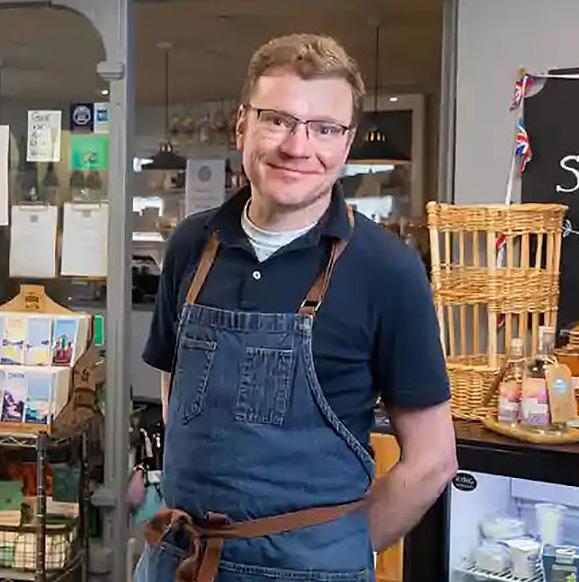


�I have no regrets about my grounding. Throughout my schooling I pursued art and design and went on to study surface pattern design at uni. Prior to opening Bottle Chop in 2021 I was a stylist, designer and finally creative director for an interior design business. This experience obviously doesn’t scream hospitality, but it has given me the skills to create a warm, welcoming and unique environment in the shop and a strong identity for our customers. We truly believe that the combination of these things is what keeps our customers coming back.”
Gemma Williams
Bottle Chop Wine & Deli, Leeds
�I was always very good at sport at school, so the resilience I learned from the ruck in rugby, and tennis for keeping balls in the air, has come in handy in this industry. Being a little bit dyslexic, I didn’t enjoy English much, but I definitely knew what a vine looked like from biology, which proved to be more important. Geography has always stood me in good stead, obviously, for the travel involved, and maths for making sure I’m earning a living. So, I think I’ve done pretty well overall and wouldn’t change much.”
Martin
PlattsH Champagne winner H Just Fine Wines, Lyme Regis

Champagne Gosset
The oldest wine house in Champagne: Äy 1584



the tortured poets department Republic records

April’s album of the month was going to be A la Sala by Khruangbin. Three Texan multi-instrumentalists who drop ultra-cool, smooth winebar vibes, BUT THEN! Taylor Swift announced a new album. Do I have a Taylor Swift story? Of course I do! It’s 2015 and the BBC Big Weekend, Norwich. A free event, with MASSIVE acts playing half a mile from my house, including Muse, Foo Fighters ... and Taylor Swift. Come the day of ticket registration I and all my friends log on, press refresh again and again and not ONE of us gets tickets. So I end up the other side of the fence, in a graveyard, separated from Taylor by no more than 20 feet of fence and some dead people. Fast forward 10 years and it seems fantastical that this billionaire played such an event, now selling out multiple nights at the biggest venues in the world, for hundreds of pounds a ticket that will allegedly boost GDP by almost 1%. The Tortured Poets Department is rumoured to be about Joe Alwyn, with whom she wrote her lockdown albums (Evermore and Folklore), and brought her music to a new audience. This album promises more carefully crafted, sometimes fragile songs, that wheedle their way into your soul. Taylor has branded this her “lifeline” record, a product of imperative songwriting, and it features guests Post Malone and Florence and the Machine. With more multiplecoloured formats (and one bonus track per special edition), it can only further boost the vinyl revival. Do check out Khruangbin though!
Swansea indie ND John Wine Merchants has long invested in its window displays, but the recent involvement of artist Carys Griffiths is taking the company’s creativity to new levels.
“ND John has always done window concepts – it’s a big thing in Swansea,” explains manager Chris James.
“We have these huge windows which span the entire front of the shop. Sometimes we choose a seasonal theme or we advertise the producers and importers that we want to champion.
“Bodega del Fin del Mundo is a producer we’ve worked with since the mid-noughties and, as we wholesale across south Wales, those wines are in bars and restaurants everywhere, so they have kind of a cult following around here.”
The Fin del Mundo window was designed and created by Carys Griffiths, who is Chris’s partner. A freelance photographer, with a background in art, design and scenic painting, her murals can be seen in bars and coffee shops around the town.
“This is the third window Carys has done for us and it’s proved to be a huge hit online and in the community,” says Chris.
“While she’s creating and painting the display, lots of people stop and watch. The next window we do, we’re going to ask a few locals to bring their children in so Carys can show them how to paint and they can have their own little section. It will be a really interactive experience for our regulars who come in as a family.”
 Steve Tattam is owner of Winyl, a wine and record shop in Manningtree, Essex
Above, the finished display and, opposite, artist Carys Griffiths at work
Steve Tattam is owner of Winyl, a wine and record shop in Manningtree, Essex
Above, the finished display and, opposite, artist Carys Griffiths at work

Are you looking for some new inspiration for your shelves for 2024? Les Grands Chais de France’s (GCF) team have announced the launch of their GCF Roadshow; bringing specialist wines from around the world directly to independent wine stores.
The GCF Roadshow will see three tours with each week focusing on a different area of specialism from within the GCF portfolio: South Africa in April, Alsace and Savoie in May and Burgundy in June.
Retailers are invited to book in a visit from the team which will include an expert from each region, to offer dedicated insight and recommend options that suit specific customer demands and localised trends unique to reach retailer.
Special offers will be available for each roadshow and GCF can deliver duty paid from 20 cases of six mixed from a choice of over 1,000 wines.
“Our consolidation model allows independent retailers to order with flexibility and choice offering experimentation, adventure and scale of price point to drive local custom,” says Chris Davies, head of on-trade and independents at GCF. “Scale enables us to be specialists. It is a unique position to be in,” he adds.
Their first roadshow will see South African brand Neethlingshof (pictured) tour the UK from April 8-12.
While Neethlingshof is a recentlyacquired estate from GCF (2022), the winery in Stellenbosch was established more than 300 years ago and boasts some of the best restored and preserved traditional Cape Dutch buildings across 272 hectares of estate.
Since 2003 Neethlingshof has intensified the biodiversity-orientated strategy it follows in its farming practices and established a much-improved balance between farming and the natural world. In recognition of the estate’s commitment to eco-sustainability, with 172 hectares given over to conservation, it has won WWF Champion Conservation status.
The winery has been led by winemaker De Wet Viljoen since 2003. In his view, “if the wine does not have a distinguishable character, there is no point in bottling the wine under a Neethlingshof label”.

Published in association with Les Grand Chais de France
He strives for complexity in his wine and for balance between fruit, structure and wood; to create a deeply satisfying taste experience, every time.
May’s roadshow will focus on Alsace and Savoie. With GCF’s HQ based in the region, it is very much the heartland of the company. With the Arthur Metz brand celebrating its 120th birthday this year, it is the perfect time for GCF to show off this fantastic producer of distinctive crémants, delicate reds and intense whites.
Arthur Metz has 85 hectares of vineyards that are in the process of being converted into organic farming, producing 15 Alsatian Grands Crus wines from different terroirs and grape varieties from the region.
Winemaker Floriane Dilligent oversees the team and her focus is on creating a distinctive style of wine that has been built up over the decades. She works on a parcel-by-parcel basis to preserve the
identity of each terroir. Floriane works rigorously on the freshness and acidity of the wines, especially the sweet and syrupy wines, to preserve their balance.
The final roadshow running from June 17 to 21 is all about Burgundy with GCF’s Moillard-Grivot brand. This gem, with plantings in all the key appellations of the region, is a sleeping giant. The second biggest purchaser of wine at the prestigious Hospices de Beaune each year, it produces wines from 16 Grands Crus and 96 Premiers Crus in the region, as well as making Crémant de Bourgogne from its 350 hectares of vineyards.
South Africa Roadshow: April 8-12
Alsace & Savoie Roadshow: May 13-17
Burgundy Roadshow: June 17-21
To book your visit from the team please contact chris.davies@lgcf.fr

If my customers refuse to laugh at my jokes, I might have to stick to science

Ifeel deflated. I had a great story to tell at a wine tasting last month, with great opportunities for some punning. I’d spent half the afternoon chuckling over it and when it came to it, not a titter in the room. If tumbleweed had been in the building it would have blown through the tasting room as silence fell. I guess I can now sleep easy at night knowing that my backup career as a stand-up comedian is not viable.
Being a scientist by birth (there are a lot of mathematicians in my family, we are an absolute hoot at gatherings as you can, thankfully, only imagine) I never really expected the art of wine to be the lifesustaining part of me that it is. I should be interested in the chemistry of wine and I
the land and the people.
For all the beauty, I also love the dark side of the wine trade, the weird scandals. I spent a long time trying to avoid telling these stories. Who really wants to hear about the time a group of Barbera producers poisoned a bunch of people by adding methanol to their wines? Fans of true crime dramas, it seems, which is apparently everyone.
It turns out that, far from scaring people away, this makes people sit up and listen. Thinking about it, who is that interested in an in-depth analysis of soil types when there’s a chance to hear “that one thing they don’t want you to know”? (Actually, I’m hoping that the answer to that question is the Wine Club, seeing as this is the subject of our current six-week tasting series).
Italy has a wealth of ridiculous stories, from how the Pecorino grape got its name (several tales) to why the Chianti Classico symbol is a black cockerel. I have received a standing ovation for that one before. I acted the hell out of it.
Sam not. I am in awe of its ability to produce magic, but I’d rather continue to believe that it is exactly that.
When you consider wine as an art form there is also a performative aspect to it. Be that the names and labels of wines, that carefully-struck pose with faraway eyes in the middle of the vineyard or the
stories of
I have received a standing ovation before for telling the story of why the Chianti Classico symbol is a black cockerel
o, what nugget of information fell flat? This is the story of an Italian DOC called Est! Est!! Est!!! di Montefiascone. Yes, exclamation marks and all, that is the name. This is so called thanks to a German dignitary (history is somewhat vague on his position) who was travelling to Rome. Interested in the wines he could try on his travels, he sent his servant ahead to mark up inns that were serving good wine with Est! (“it is” as in “it is good”). Well, our man gets to Montefiascone and he really liked the wine. You can guess the rest. A good story, right? The icing on the cake is the name of this dignitary – Johannes Defuk. I had a whole piece planned about “what Defuk … did next”. I’d imagined a son, Walt, but the rapt attention of everyone in the room, keen on knowing what Defuk happened did next stopped me in my tracks. I guess my inner performer has become a bit lairy again. Time to stop feeding her internet conspiracies and let the scientist back out of her box.
Cat Brandwood is the owner of Toscanaccio in Winchester


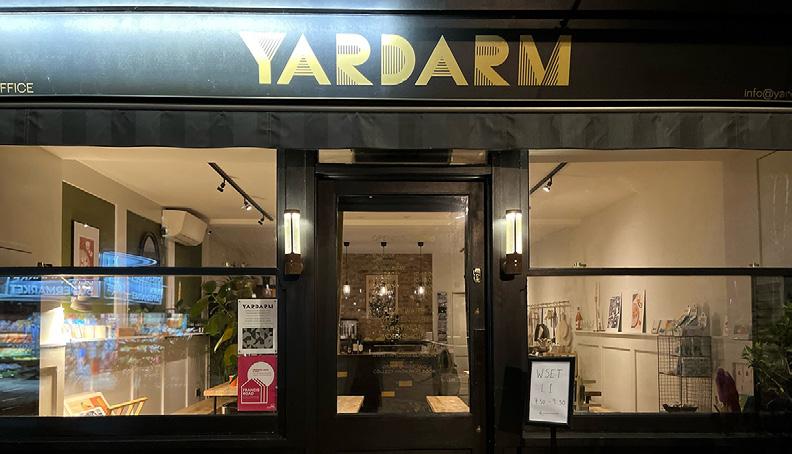
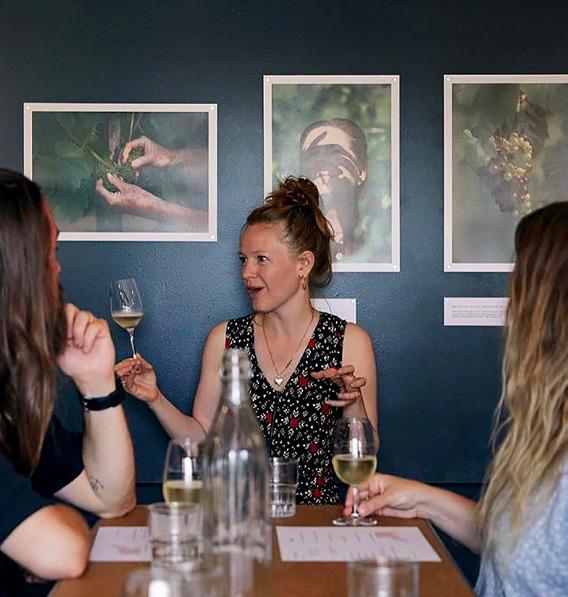

Yardarm in Leyton has branched out from wine and coffee to WSET courses and kitchenware
By Claire HarriesEliza and Dan Parkes are continually evolving their space to reflect the everchanging retail landscape.
Almost a decade since its arrival in Leyton, Yardarm has been a wine and coffee haven, with a generous side order of artisan bread and deli items. Expanding into the neighbouring unit has allowed the couple to diversify their retail offering to include homeware products (everything from scented hand wash to ravioli cutters). It also provides Eliza with enough room to teach WSET classes, in addition to hosting events including pottery and fermentation workshops.
“I hate talking about the pandemic now, but I feel like we learned a lot of stuff as shopkeepers during that time,” says Eliza.
“We learned that our spaces which we felt were permanent suddenly sort of weren’t, and Dan and I have just responded to that.
“We’re not a huge site, but with the space that we do have, I think we’ve always tried to keep that element of flexibility, even pre-pandemic. Our customers joke: ‘what are they doing now?’”
Yardarm has always had a hospitality element to it since it opened in 2015. Two years later, when Eliza and Dan acquired the site next door, they added a restaurant, which also served as a teaching and tasting space, until it had to close during lockdown.
Instead of re-opening the restaurant, the couple looked to their wider interests for inspiration.
“I grew up in Cornwall with potters for parents, and Dan’s got two brothers who are chefs, so we know good cookware: knives, pottery – it’s all part

of our family landscape,” Eliza says. “We get to showcase some of the stuff that we we’ve used over the years, like good wine accessories and glassware.
“We knew we’d use the space for casual tastings as well as my WSET courses, but there’s not enough demand for these things during the day, so having the homeware allows us to be open and welcoming during the day.”
With the three distinct operational areas (the original shop and bar, the tasting room and the garden) Dan and Eliza ensure that customers can enjoy a drink even if there’s an event or a class in progress.
“To close a space to your regular customers in order to run a private event feels divisive,” says Eliza. “We want people to be welcomed whenever they come in. As soon as we could afford to, we put a retractable awning over half the garden so that people could go out there when it was raining, but be warm enough.”
The sheltered, south-facing garden is now home to olive trees and a thriving vine. “It’s a Regent. We planted it in 2016, and chose it because it was hardy, but now it’s really interesting to see how much more recognisable it is as a grape variety being grown in the UK today.
“Dan and I have hospitality backgrounds. We enjoy that side of the business, so we were never going to go in and be interested in just retail,” explains Eliza.
“We get excited by stuff. We get excited by ideas, we get excited by our customers, we get excited by asking ourselves, ‘where can we go with it next?’”

In Orkney, and across the wine trade, we’re a community of storytellers
Iwrite this on March 20, which is World Storytelling Day, “a worldwide celebration of oral narratives”. The jollification dates back to 1991, when our Scandinavian neighbours in Sweden launched Alla Berättares Dag. The idea swiftly spread around the globe, wherever stories are told and treasured. Which is, of course, everywhere.
It’s certainly true here in Orkney. We were a poor and under-educated region for 400 years, between our severance from the Norse kingdoms in 1472, and our connection to the British Empire via steam ships and railways in the mid-19th century. At that point, Britain’s appetite for good Orkney beef brought money our way, and with it literacy, a middle class, and our family’s wine shop. But until that late point oral storytelling flourished, because very few folk had the ability to read or write.
The passing down of complex stories through purely oral routes died out as Orkney entered modernity. But modernity – in the shape of autodidact folklorists like Walter Traill Dennison and Ernest Marwick – also rescued dozens of stories from oblivion. Now new generations of storytellers learn from those written records as well as from fragments of memory from family and friends, and elaborate their own versions of these
We don’t sell wine by saying it was harvested at 25 degrees Brix

gripping, millennia-old narratives.
The tale of the Nuckelavee, for instance, a monstrous creature, half-man, half-horse, and wholly malevolent. The Nuckelavee was motivated by nothing less than pure hatred towards humankind, and was remorseless in his pursuit of solitary islanders wending their way home after a night at the inn. There was only one substance that could thwart his attacks: like rough whisky, the Nuckelavee could be tamed by a splash of fresh water.
Then there were the Finfolk, strange and threatening creatures who during the winter lived in a glittering undersea city called Finfolkaheem, and in a lush but invisible Orkney island called Hildaland during the summer. At first glance they looked human, but then you realised their flowing garments were actually flapping fins.
Another story was of an enormous ghost sailing ship. If you boarded the stern as a youngster, by the time you walked to the bow you would be an old grey-haired man. My version of that would be of a sprightly 30-something fellow walking in the door of
a wine shop, who, by the time he makes it behind the counter, finds himself bald and bone-sore.
Which reminds me, what has all this got to do with 21st century wine merchanting? It’s obvious: we’re all in the storytelling business. We don’t hand-sell wine by saying, “this lovely bottle was harvested at 25 degrees Brix, and – you’re going to love this – the pH is 3.2!” Rather we talk about the winemaker’s family and their long love affair with the land. We spin yarns about the land itself – its minerality, its microbiome, its rough wooing by the sun and wind. We love a hero: a lowly cowherd or investment banker, who quits the safety of their career to battle with pruning shears and amphorae before emerging triumphant, clutching a 90-point wine from a previously non-existent terroir.
Ah, terroir. That’s a good story in itself.
I don’t mean any of us does this cynically. It’s part of the toolkit we have for trying to communicate in words the nature of an elusive sensory experience. Some wield those tools more skilfully than others. I remember one visiting winemaker hosting a dinner for us. “The grapes were picked at 6.15am,” he said, “then loaded into plastic crates. Some crates carried eight kilos of grapes but others carried six kilos. The field technologist used a digital refractometer to …”
And the diners rose as one: “Sit down and shut up! Just let us drink the wine!”
They didn’t really, but they all wanted to. So when I sell that domaine’s wines now I tell the same story but in a different way. Something like: “The grape pickers rise before dawn. Picture them, marching through the rows of vines, their breath in clouds in the cold morning air. But the grapes are chilly too in the morning, which means the flavours in your glass will be crisp and fresh and fruity. Perfect with a piece of grilled fish or – what’s that? You’re having mussels? Amazing! The vineyard was once part of an ancient ocean, and decomposing shells give the wine its distinct … minerality. It’s a perfect match!”
And they all live happily ever after.
Duncan McLean is proprietor of Kirkness & Gorie, Kirkwall
James Manson, Hatch Mansfield’s director of regional sales, gives his take on this year’s Wine Merchant reader survey results, focusing on what independents say about trade tastings and the wine-producing countries they find most interesting
When it comes to trade tastings, it’s absolutely clear that there is a diverse set of needs out there for independents.
Some merchants are saying they like to come to London, while others are saying they can’t get there: it’s too expensive or inconvenient. There are people who argue there should be more tastings regionally and others who say, “I want suppliers to come and see me with samples”. Some merchants are reporting that Zoom tastings work really well for them. What we need to do as a business – and what I’d argue we already do – is provide multiple solutions.
For instance, we have our London Hatch portfolio tasting; we collaborate in the Northern Lights event in Leeds; and then there’s the All Points North tasting in Edinburgh that Hatch organises. So we cover three major cities, fairly evenly spaced out around the UK.
There are loads of great indies out there who, for various reasons, can’t get to our tastings, so we’ll take the tasting to them. We will talk to them and work out what things are interesting, and turn up with some samples to taste with them individually. More often than not, we’ll leave the samples so they can taste with colleagues or customers and work out
what they’re going to put on their list. It was interesting to see what merchants feel about the London Wine Fair. At Hatch, we firmly believe that the UK wine trade needs a big, centralised event, and we’ve been actively encouraging other agents to get back on board to try and make this a proper event again. For us, it’s always been successful.
We offer bursaries for travel, and we’ll often do that for any of our tastings. And we have access to tickets for the wine fair to share with our independent customers.
It was perhaps no surprise to see Portugal top the league table of most interesting countries. It offers great value and there are loads of interesting regions. It’s an extremely diverse offering from north to south, and there’s plenty of new stuff – or at least it’s new to the UK consumer and the UK industry. And the value proposition is really good.
We knew we had to bring Portugal into our portfolio, because we could just see this happening, seeing the survey and talking to our customers. We were fortunate enough to get involved with Esporão, just at the time that they needed a new agent. They’ve got three separate wineries: one in the Vinho Verde, Quinta
“There are loads of great indies out there who, for various reasons, can’t get to our tastings, so we’ll take the tasting to them”
do Ameal; one in the Douro, Quinta dos Murças; and Herdade do Esporão in the south. It’s a diverse offering of really excellent, unusual and interesting wines. It was absolutely what we’d been looking for and it’s actually been one of our most successful launches in the sector.
I was slightly surprised to see Languedoc-Roussillon so high on the list, at number six. But then we’ve had a lot of success with the Domaine de Bila-Haut wines from Chapoutier, which are fantastic Côtes du Roussillon entry-point wines in red and white styles.
I remember trying them for the first time, when we took on the agency. I was expecting the wines to be classically warm-climate, quite big, a bit ripe. But they had an elegance about them that I wasn't expecting, and great value for money.
England and Wales are doing very well, too, which is nice to see. We’re releasing Domaine Evremond in September, our joint English sparkling wine venture with Champagne
Taittinger, and the focus is going to be prestige on-trade and independent retailers.

Our second, and final, instalment of our reader survey coverage reveals that, although indies are sourcing less wine direct from producers than before, many see it as a crucial part of what they do
“Part of the fun of being an independent is getting out there and finding some wines that are unique to you, and I think that customers like that. It gives you a point of difference.”
Simon Smith, The Solent Cellar, Lymington
“We have imported our entire range of wines ourselves for the past 27 years. It works for us and differentiates our range.”
David Motion, The Winery, London
“We are a single-site shop so can only import wines which are really popular: Pouilly-Fumé, Provence rosé, Côtes du Rhone etc. We need to be able to shift 600 bottles in a year at minimum. If we can find the right product, like our Provence rosé, it is really worth it, as you can make much larger margins. Otherwise it’s not worth the hassle.”
Leo Bruton-Simmonds, The Salusbury Winestore, west London
“It’s fun to do, it preserves and encourages good personal relationships that were strained by Brexit, and it’s great to have wines and beers that nobody else has.”
Euan McNicoll, McNicoll & Cairnie, Dundee
“Buying direct supports important wholesale accounts where continuity of range is required, and the same products also suit our retail business.”
Guy Dickerson, The Secret Cellar, Forest Row, East Sussex
“Most of the UK suppliers I use have increased their prices considerably. Most of the producers I buy from in Europe and South Africa have only increased their prices marginally.”
Channel Islands merchant
“We want to present a unique range as much as possible. I feel it is an obligation to our customers to showcase something different from the next store. Dealing directly with the producer also gives you an ability to feed on their enthusiasm and funnel it through to the consumer.”
John Chapman, The Oxford Wine Company
“Importing wines direct – particularly house Champagne and the most popular wine styles like Pinot Grigio and Montepulciano d’Abruzzo – has been a key factor in us achieving sweet spots for retail and wholesale pricing. These exclusive SKUs also give us an important point of difference versus other shops.”
“It’s too risky for us. The volumes involved and the cash flow issues it creates mean it’s just not something we do. If I had a bigger wholesale business, then it may be considered. As it stands, it just isn’t something we need to do.”
North Yorkshire merchant

Alex Griem, Chilled & Tannin, Cardiff
“We are good at managing our cash flow, and the opportunity for increased margin is too good to pass up with the challenges we are facing.”
Nat Carpentier, Dalling & Co, Kings Langley
“Our best-selling products are wines we buy direct. I suspect volumes will increase this year.”
Shane Slater, Sheldon’s Wine Cellars, Shipston-on-Stour
“Since Brexit we had put the break on importing direct because of the costs incurred. However, after all the price hikes in 2023, I think we have become slightly numb to increased costs, and shipping middle-ground wine to retail at below £15 is looking more doable.”
Nick Underwood, Underwoods, Stratford-upon-Avon
“The increased logistics and admin costs associated with shipping disincentivises bringing in only one pallet, unless the wines are premium – it makes shipping entry-level wines very uncompetitive unless you take five pallets. We will focus more on the mid-range and premium wines in 2024.”
South London merchant
“Our volumes are simply too small to consider buying direct from producers.”
Essex merchant
“It’s less complicated buying from suppliers. Especially as my company is a specialist business which only sells organic and vegan wines.”
Somerset merchant
“We will significantly reduce the amount of wine we source directly. Unfortunately it is taking longer to turn around orders, even though the wines are mainly for our restaurant trade. Increased duty has had a larger impact on cash flow.”
Hampshire merchant
“We deal directly with one excellent producer in the Languedoc. There is no other access to their wines, and they have a very loyal following. Other than for this producer, I find it much easier to buy from UK agents – my little brain struggles with the lead time.”
Rob Hoult, Hoults Wine Merchants, Huddersfield
You can still get the wines you want –if you plan ahead, argue some merchants
Our survey shows that 47% of independents import at least some of their own wine. Indeed, 14 out of every 100 bottles found on indies’ shelves have been sourced this way.
That’s actually the lowest figure we’ve recorded since the survey began. Although there’s usually some small fluctuation from year to year, there seems to be a slight downward trend in direct sourcing.
Yet, as the table above illustrates, almost a third of respondents plan more direct imports in the coming year.
Independents still seem to prefer formal rather than loose arrangements for their joint buying activities. Though, as the graph shows, the gap between the two has narrowed a little.
When asked to repond to the statement “I will source some of my wines this year as part of a formal buying group”, 19% agreed strongly.
But overall, 65% do not expect to buy as part of a formal group, and 67% have effectively ruled out informal alliances.
Overall, 13% of respondents expect to buy jointly with other merchants more than they did in the preceding year, one way or another.
Based on 186 responses
Many indies struggle to recruit and retain, but others say the solution is fair pay, decent training – and perks
Most of the challenges facing independent merchants have been discussed at length. But one of the hardest jobs of all – recruiting and retaining decent staff – is given far less airtime.
In this year’s reader survey, we invited merchants to spell out just how big an issue it is to put a team together – or, in the case of smaller shops, simply to bring in some useful part-time help.
The responses vary from the blunt “nightmare” to cheerful reports of impressive new recruits and happy, motivated teams that have remained intact for years.
First, the despair. “It’s difficult,” says one Derbyshire merchant. “It’s hard to employ decent staff. Young people don’t appear to want to work.”
Cat Brandwood, of Toscanaccio in Winchester adds: “What an absolute nightmare the last few years have been for recruitment. Attracting quality staff has been a real problem and I’ve been incredibly lucky that the rest of the team have been so helpful and supportive.”
Andrew Morris, of Cheers in Swansea, says: “Recruiting staff has been very difficult for the past two years. We have retained those we finally employed, but finding the right person has been difficult.”
In south London, another merchant reports: “Staff will be the biggest challenge in 2024. With the minimum wage, the cost now is huge, and the cost-of-living crisis doesn’t help.”
Leo Bruton-Simmonds, of The Salusbury Winestore in west London, says it’s “hard to find good people who are knowledgeable and confident to talk about
wine straight off the bat”.
He adds: “You can find competent people, but as an independent we really want people with a good base of wine knowledge, and it is always hard to find this, across all levels of staff. Keeping good people is difficult in a singlesite shop where upwards movement is not easy.”
That point is expanded on by a Cheshire merchant, who says: “Retaining good staff is difficult, because as a small business you rely on them to help grow the business to offer them career progression. If the business is too small to allow them to progress very far, they will inevitably leave for a larger company.”
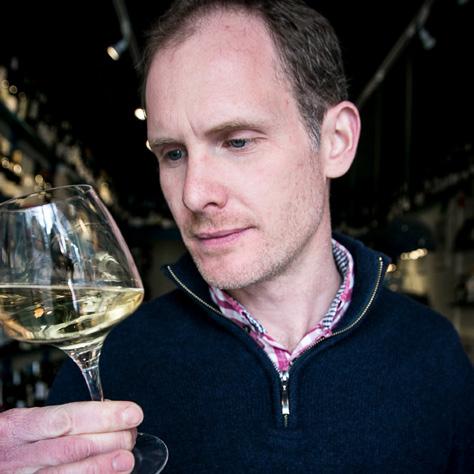
not found it too difficult in recruiting goodquality people, although we have a far higher proportion of staff doing just one or two shifts a week, working around other jobs and family commitments.
“While it can make rota management a little trickier at times, it certainly has its advantages.”
Marc Hough, of Cork of the North in Manchester, says his business “doesn’t have problems recruiting or retaining staff”.
An indie in the capital says: “The situation improved as the year went on, but it’s still very difficult to find the quality of people with the right skills in London.”
The responses show that, despite the challenges, there are sometimes ways of increasing your chances of finding, and holding on to, the right people.
Matt Thomas, of Vinoramica in Highams Park, east London, says: “We’ve
He explains: “The key is to make sure we pay them a decent, fair salary. You give them the odd well-deserved perk. And they feel valued by having a say in decisions about the range and operational matters.”
Training staff is crucial, according to several respondents.
“We’ve found it difficult to recruit locally, so have increased our reliance on parttime staff and have looked beyond the wine trade,” says Simon Smith, of The Solent Cellar in Lymington. “As a result
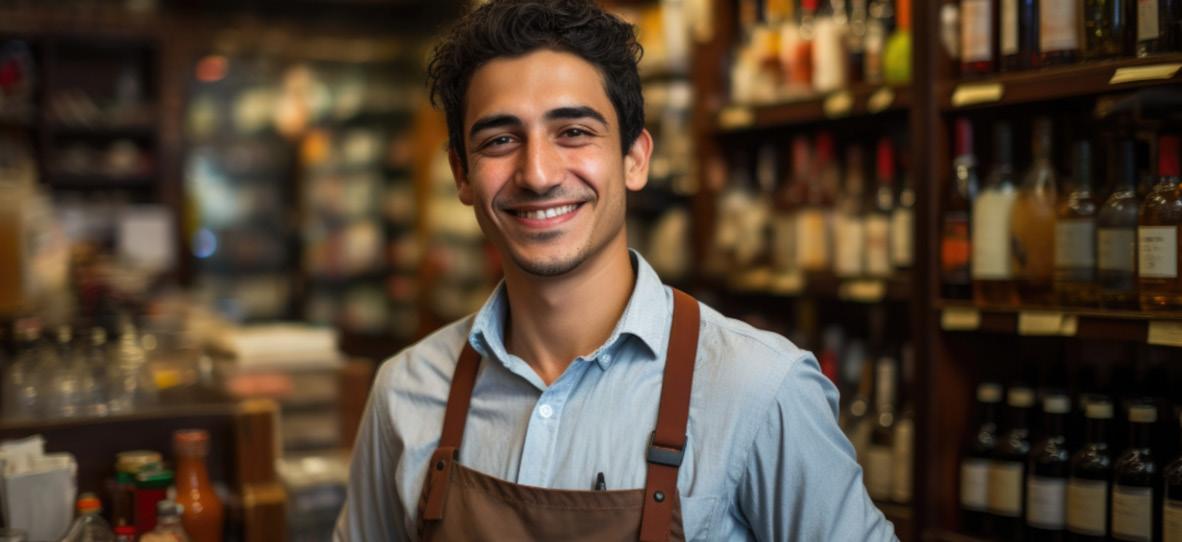
we’ve found some good people and built some flexibility into the business. We are investing in their training, and have been helped by Hatch and their WSET scholarship programme.”
According to Alexandre Bal, of Authentique in west London, “2023 was easier than 2022, but it’s still challenging to find the right profile with good matching background”. But he adds: “We recruited very good employees that we trained inhouse. Towards the end of 2023, and now the beginning of 2024, it seems that it’s becoming easier to find better people. It feels that the market is changing and we are at a turning point.”
Bob McDonald, of Salut Wines in Manchester, says: “2023 was a great year for us in terms of recruiting and, more importantly, retaining good staff.
“As we are predominantly a bar, we introduced a discretionary 10% service charge on our drink-in sales – all table service – in late 2022, and one of the drivers behind this was retaining better staff members. 2023 really proved that this paid off.
“We also have lots of ongoing training and tastings with the team, and offer WSET Level 2 and 3 as standard for anyone who is interested.”
Andrew Imrie, of KWM Wines & Spirits in Newry, Northern Ireland, says: “We’re lucky to have a good core of staff who have been with us for quite some time and our turnover is very low, so we don’t have to recruit very often at all.
“But when we do, we try and get the best all-round person then train them over time, the way we want, even if they have little experience in wine to begin with.”
You can still get the wines you want –if you plan ahead, argue some merchants
How important are these categories to you?
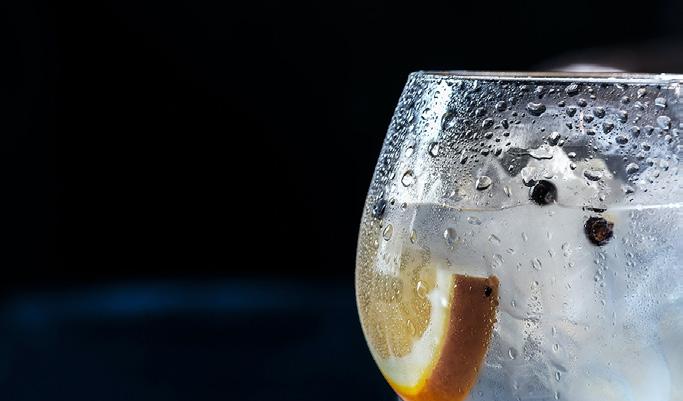
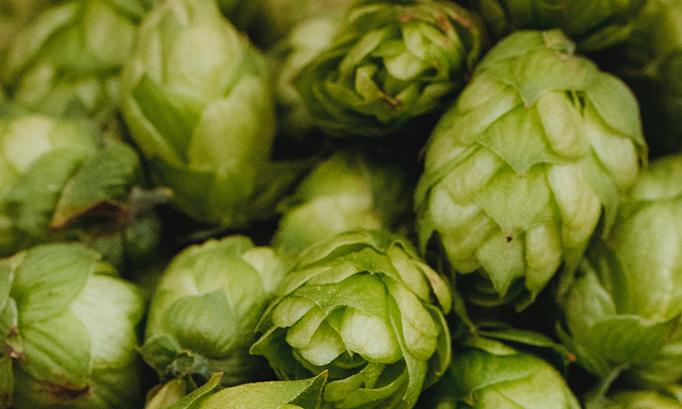
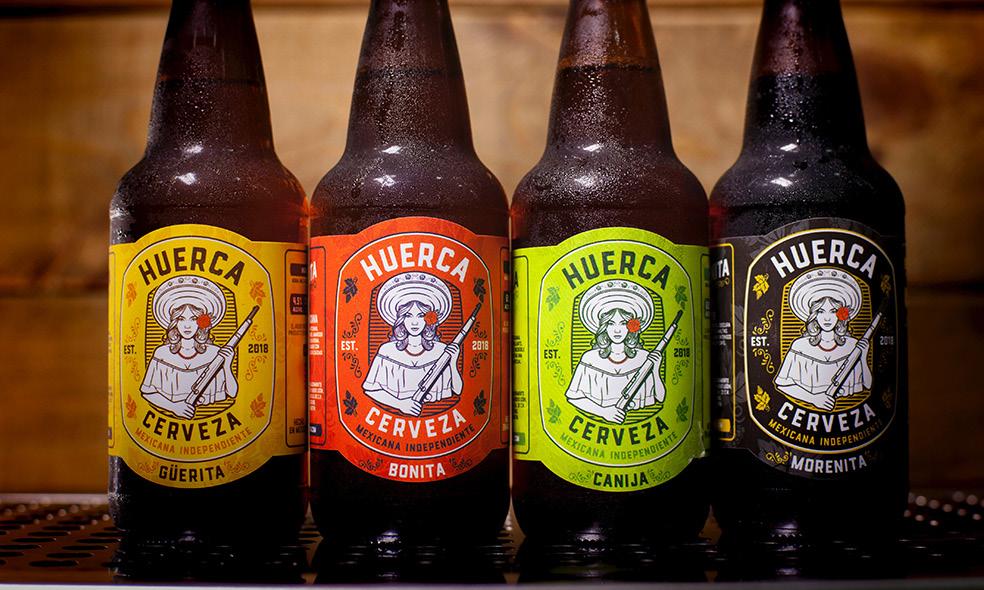
Slightly

Up
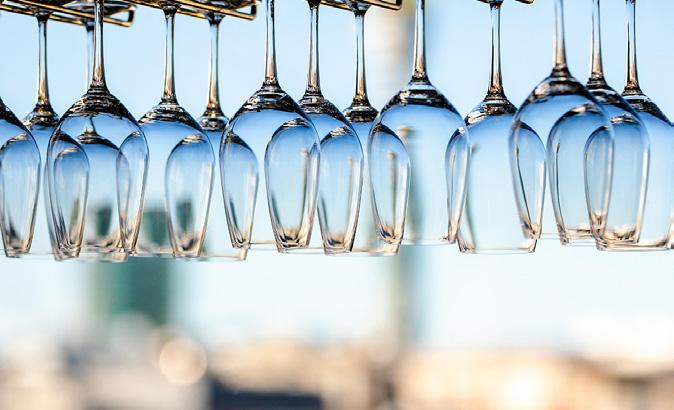
Down
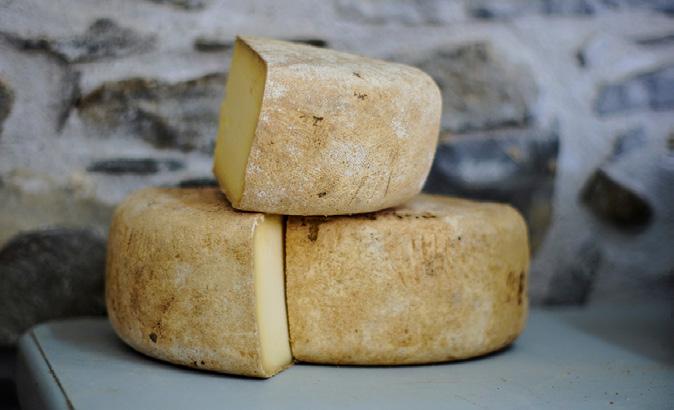
For
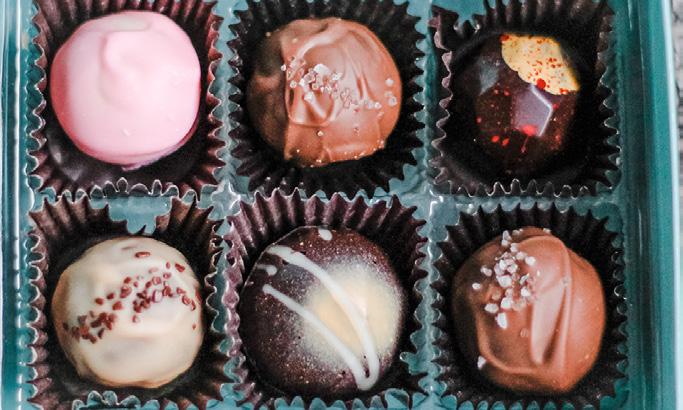
Based on 186

fairly important.) Wine accessories
Based on 189 responses
A slight fall on the 65% recorded last year, and well behind 2022’s figure of 74%. (19% say very important; 44% fairly important.) This figure has edged down in recent years, but for most it’s still a core category. (17% say very important; 35% fairly important.) British craft beer up from 25% in 2023, though a long way behind the 33% recorded in 2021. (7% say very important; 19% fairly important.) the third year in a row, 22% of indies say deli is an important element of their business. (9% say very important.) from 17% last year, this is a useful niche category for some indies. (2% say very important; 17% fairly important.) An identical result to last year, and in keeping with most recent surveys. (4% say very important; 11% fairly important.) from 13% last time. For most, it’s a category with little commercial appeal. (2% say very important; 6% fairly important.) A category that makes sense in theory, but which most indies struggle to monetise. (0% say very important; 4%daniel illsley ran away from showbusiness to pursue a career he ended up finding far more fulfilling. there are now three theatre of wine stores in london, and more could be on the way
by graham holterIf you were meeting Daniel Illsley for the first time, you’d probably guess that he is or was an actor. There’s a thespian lilt in the voice, a theatrical flourish to his storytelling, a love of the word “fabulous”.
His hair is neatly cropped, his frame lean and spry, and he’s bemoaning the poor quality of John Lewis dressing gowns. As we chat in the splendid surroundings of his emporium in Greenwich, it’s possible to imagine a scenario in which the topic of the interview is a triumphant opening night at The Old Vic or Donmar Warehouse. But we’re here to talk wine, a career choice that he came to find far more nourishing than acting, which left him disillusioned. We’re joined by his son Tom, who studied to be a theologian and entered the business in 2014.
“I’d been working in theatre and TV and so on, on both sides of it,” Daniel says, betraying no
sense that he found any of these things remotely glamorous. “Mainly acting, but also writing and directing and doing all that kind of stuff. Slogging my guts out to constantly return to point zero.”
Things came to a head when he was fired from a repertory contract in Leeds, where he’d been working alongside Ian McKellen and Clare Higgins. The roster of productions included Chekhov’s The Seagull – “I mean, god, yawn … some bloody Noel Coward play or something, and then a bit of Shakespeare. It did not go well.”
He clashed with the director. “I got pulled up in front of the board and they sacked me. And I said, well, you’re gonna have to pay me for three months. So I walked away with 10 grand, which was great, and I didn’t actually have to do the show. So although it was such a humiliating thing, being thrown into the gutter, I was also extremely relieved because I really didn’t want to do it.”
Daniel’s theatrical CV includes a play that was written for him called Persons Unknown, which he performed at Glasgow’s Citizens Theatre in 1995. I tell him that I’ve also checked out his TV and film credits on IMDb.
His eyes twinkle. “You can go and watch one of my Bill episodes,” he suggests.
I say I’m more intrigued by his character Crazy Man in Street in a 1996 short. I was hoping to somehow shoehorn it into the headline.
He chuckles drily. “You’re about right,” he says. “But I think you’ll only be telling people what they already know.”

How did you get involved in wine?
I was walking past Oddbins in Greenwich one day. I’d always admired their window displays. They were looking for staff and I thought, I’ll just go in and do their windows. So I went in and I got hired straightaway. My first manager was called Sarah and she was absolutely fabulous. It was just like a lightbulb moment. You know, it was so exciting. I can still remember learning the grapes of Valpolicella in the first five seconds.
How much did you know about wine when you walked in?
Nothing. I knew how to drink it. Because in the theatre, you spend a lot of time chatting up older people and letting them buy you dinner. Drinking lots of Champagne and stuff.
I used to go into Oddbins in Glasgow. There were three Oddbins stores; a fabulous one on Byres Road with the snobbiest staff you can possibly imagine. They all had classics or chemical engineering degrees. There were huge windows and high shelves and they used to have one of those ladders you see in libraries. Absolutely fabulously glamorous. Bloody marvellous.
So I was familiar with the shops. I think for a lot of people, especially people like me that didn’t grow up with wine, that really opened the door. And of course, in those days, we were drinking all the great Australian wines, when they were still incredibly cheap. Oddbins was never associated with French wines, apart from Languedoc, I suppose, which they did do quite well. But it was mainly new world. Italy was also quite strong. And Steve Daniel went mad for Greek wines. That was exciting as well, but it was a disaster, I think, from a commercial point of view.
How did your Oddbins career progress?
I became the assistant manager in, like, five minutes. I was in my early 30s already; I didn’t have time to mess around. I was just eating it up. I was reading everything; I kept winning prizes – trips here, there and everywhere – and I became obsessed. I’m much less like that now, but in those days I was. I became the manager after eight months, I think.
During that period, I met my first business partner, who was a quantum physicist who was doing his PhD. He was down in Exeter, working
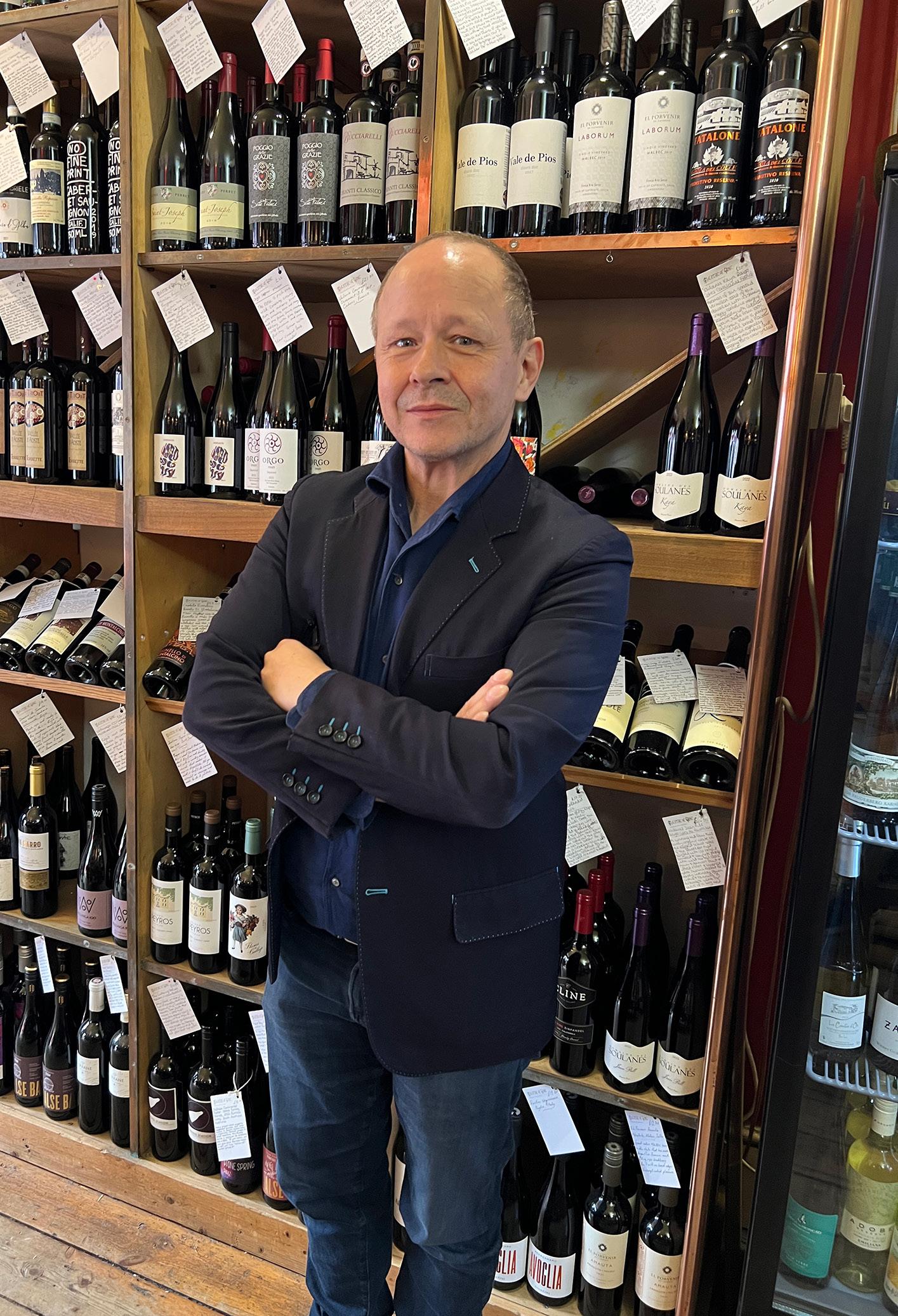
as a part-time van driver for Oddbins while also tinkering with quarks.
“I knew nothing about
wine
but I knew
how to drink it. In the theatre, you spend a lot of time chatting up older people and letting them buy you dinner”
His wife had graduated as a teacher, and she wanted to come to London to work. So they moved to London and he ended up as my assistant manager. He was very geeky about wine and we had such a successful shop. Fabulous window displays; we built the customer base; ran tastings; started a wine club … I just did everything to get people excited about wine.
His wife said: “Why are you doing this for them? You should be doing it for yourselves. You two should open a business.” Of course, I didn’t have a pot to piss in. He came from a good family and there was a bit of money sloshing around.
Then they closed that Oddbins shop, because the rents went up so much. I mean, it went from
like £18,000 to £40,000, and Oddbins just had no appetite for that. So I ended up being transferred to a much higher turnover shop, in Canary Wharf, which was actually very useful for me in terms of planning this business. Because suddenly I was making friends with people in investment banking.
How did you find this site for the original Theatre of Wine, back in 2002?
It had been an office equipment supplier in the days when people wanted Xerox machines and fax machines and stuff. At one point, the value of a photocopier was so great that people used to just drive through the front window and shove stuff in the back of a van and drive off. That was east Greenwich in those days, which is why this has got the security measures of Fort Knox. So that’s quite useful.
People said, you can’t go down to that end of Greenwich, it’s really Rotten Row, it’d be a failure. But we walked in here, and I thought: this is supposed to be a wine shop. It’s got wooden floors, it’s got beautiful high ceilings, it’s got a cellar, it’s got shutters, and it was at the right price. We just knew it was right. I mean, it was just such an instinctive feeling.
What was your vision for the place?
That it would be like walking into like The Old Curiosity Shop or some sort of beautiful antiquarian bookshop. My partner at that time put this fabulous curtain there; he created a lot of the kind of artistic, aesthetic language that was very vital to what we were doing. We wanted it to almost be like walking into a sort of museum. Finding these amazing artefacts.
We were definitely going to do everything that was totally non-high street at that point. The high street was becoming very homogenised: Majestic was churning out two bottles of New Zealand Sauvignon Blanc for six quid or what have you. We wanted to do the absolute opposite of that. We wanted to be archaeologists of wine.
What kind of wine?
We wanted to get into Greece. We wanted to have Madeira. We wanted sherries. We wanted desperately unfashionable German Riesling. And we wanted to really capture the sort of spirit of excitement that was going on in wine at that time: the big rise of artisanal producers, small producers,
Father and son: Tom joined the business in 2014

organic and biodynamic, all that stuff. We were absolutely passionate about all this.
Did you know where you were going to get that wine?
No, I had to figure it out. We used to buy at auctions; we used to buy crazy old shit. And then we started doing tastings every week. It started with literally five or six people around the table and soon you couldn’t get tickets for love nor money. People would phone us up and berate us. “Is it something I’ve done? Do you not like me?” It got really quite personal.
Tasting seems like a central tenet of what you’re all about.
“You can’t talk about things in terms of alcohol, volatile acidity and sulphur levels. I mean, you might as well go and work for ICI”
Without the tasting, it’s pointless. People need to taste the wines; I need to taste them; the team needs to taste them, in order to learn – in order to develop their palates, their repertoire, their knowledge. Their curiosity.
I never had any interest in wine education. WSET: couldn’t give a toss about it. For me, it’s trying to put something that is not only subjective, but so multifaceted, into this sort of little box. That doesn’t really work for me.
The fundamental thing was not only to break away from this idea of snobbery and privilege, but actually to talk about the magic and the mystery.
You can’t talk about things in terms of alcohol, volatile acidity and sulphur levels. I mean, you might as well go and work for ICI. It’s of no interest to anybody.
There’s a danger we can take wine seriously when actually it’s just a branch of the entertainment industry. Absolutely. It’s a way of escaping the dull drudgery of life.
Tom: But it does become a higher pleasure as well. It’s emotional. It’s all very well understanding what the parts are. But they don’t actually explain why it’s interesting.
How soon was it before you started making money?
It was such a graft. It was such hard work. We didn’t pay ourselves, I think, for six months. Mates got involved to build everything. I painted the sign myself. We used to do double entry bookkeeping. I mean, it really was like Black Books, and I had quite a reputation for being forthright.
It’s a good story now, but at the time, was it scary?
It was terrifying. I mean, just before opening was like the biggest first night of your life, stomachchurningly scary. It was just determination and belief, being absolutely sure we were doing the
“Just before opening was like the biggest first night of your life, stomachchurningly scary”
right thing. But it really took a toll.
Then things sort of improved. But after that, quite quickly, my business partner realised that having a shop is a constant responsibility. And I really believe that retailing is an art. It has to be consistent. You must open on time, you must always present a professional face in the shop. I think he wanted to go back to his physics thing.
And then you brought someone else on board? Well, there was a bit of an interregnum sort of moment. I had a friend, Paul Barker, who was an ex-tax inspector, who’d gone into wine. I said, I need someone like you, I need a manager. So he came, and that was just like being thrown a lifeline. He did a few years, which was great.
We had an incredibly geeky wine-mad customer who worked for Majestic in Chislehurst. He occasionally drove the van – I just think he liked to get out and about, and he loved to potter around other people's wine shops. Jon Jackson.
One day, I just had this kind of impulse. I thought, I’m going to see if he wants to come and join me in this business. I just caught him at the right moment. He became my partner. He invested and he really put his neck on the line. He really believed in me. We’re so different, but very complementary. He’s just been a wonderful support and I’m very proud of our relationship.

Then you opened a second shop, in Tufnell Park. Having put your heart and soul into Greenwich, how could you possibly be as personally invested in another branch?
Jon was very clear with me. He said, it needs to operate without you doing everything. So I had to learn how to do that. It took me a very long time to actually be able to sleep properly at night. It was a challenge for my innate sort of insecurity.
How did you choose Tufnell Park?
It’s as simple as this: is it big and is it cheap? There were no wine shops around there. It was well located for the Tube. But it was really one of the most difficult openings. I’d never want to go through anything as painful as that again. The landlord was absolutely ghastly.
It turned into the most beautiful shop, but it was absolutely a dump. We spent a lot of money on the interior that time. We had great builders. It’s got Vivienne Westwood wallpaper, which you can’t
“I
think a lot of people stopped shipping after Brexit, but
we
went further and imported more” even get anymore. It’s absolutely beautiful. And a new table that was built by David Whitely.
How much autonomy do managers have in terms of what goes on the shelves of individual branches?
The problem for a lot of businesses at this point is: how am I going to find the right staff? Was that a challenge?
I think it’s more of a challenge now than it was then, to be honest. There seemed to be a lot more people running around that wanted to change their lives. We still find the best people are the ones that want to get out of the rat race.
Then Leytonstone came a few years after that. Five years after that. It was another act of madness, but it’s actually turned into a really lovely shop, I must say. I really enjoy going to visit it. I think the area’s taken quite a lot longer to evolve than it might have done. But then, in the economic conditions we’re in at the moment, I don’t think that’s any surprise.
Have you stayed adventurous with the wine range, or has it settled into a sort of pattern?
The big thing for us was becoming a much bigger importer of wines ourselves. I think we were very pioneering in that sense, because a lot of people would find that just too much work and too much strain. But I always wanted to have a direct connection with the project; I wanted to go and find things.
I also wanted to work with restaurants and to have a wholesale business. The Thai restaurant in Greenwich that I’d serviced during Oddbins opened an account with us right at the beginning.
Then we started shipping, and we continued to build. I think a lot of people stopped shipping after Brexit, but we went further and imported more. We really work on building great wholesale relationships with some very important accounts. And that’s still a direction that we’re going in.
You encourage your team to appear on social media and you send them on trips and to events. It feels like you give people trust and let them take responsibility, which can be a hard thing to do.
Not with the right people. I think it’s vital to invest in them, to send them to places, get them out there.
If they want to do WSET, great, let’s support them, if that’s what makes them happy, if that’s what gives them the next part of their own journey.
Daniel is ready to open more branches if the right sites present themselves
Tom: We’ve changed that recently and given everyone a lot more autonomy. What’s the worst that can happen? You give it a whirl; you suck it and see.
We meet regularly as a group and go through the list, and axe things and put things on, say what we like and what we don’t like and ask: where are the holes? I think everyone feels that if they go to a tasting and they really like something, they can stick it on the shelves and give it a whirl.
It makes our lives easier, and it makes the range more exciting. You shouldn’t be trying to do everything yourself. You’ve got to trust people. It’s so much more interesting to be working with people who are having opinions.
Are there any violent clashes of opinion?
Tom: Violent? No. But I had a moment. Alex in Leytonstone very merrily wrote to me saying, “hey, I’d like to get some samples of this canned wine”. And I wrote a kind of cri de coeur that canned wine was the end of civilisation and the worst thing in the world. After about an hour, I said to my wife: “I think I’ve just sent a really bonkers email.” The next day I said to Alex: “I’m really sorry mate, I overreacted.” He said: “No, I liked it – you’ve got to have principles.”

Is your hatred of canned wine a hill you’re prepared to die on?
Tom: My feeling is if they put it in a litre can, I’d be open to it. But if you put it in a mini, it’s evidently a single-serve that’s designed to be drunk as you walk along. It’s yobbery. You know, it’s horrible. It’s every bit as horrible as people at Oxford wearing tailcoats, smashing glasses of Champagne. I think it’s bullshit.
How do you think the independent wine trade has evolved since 2002?
Hybrids have become the dominant model. But for me, that doesn’t work as a retail entity. I don’t think you can really have a nice experience finding a lovely bottle of wine where there’s people chattering away, drinking. So you can say that you’re a wine shop with a bar in it, but you’re not – you’re actually going to be a bar. It’s as simple as that, unfortunately, unless you had a property that had enough space. I think that Vinoteca probably tried to do that at King’s Cross, where there was actually a store.
Are you looking at stores number four and five? Yeah, definitely. We’ll hold on at the moment. But we’ve definitely got our eyes open.
What locations are you considering?
Tom: Obviously it will be more convenient to have them near one of the other shops. But at the moment, it’s not the sort of environment where you want to take big risks. So I think you would have to see the place and say, well, that’s nailed on, I think that’s gonna really be a winner.
Where is future growth coming from? Retailing or wholesaling?
I think they’re very complementary to each other. One feeds off the other, in a way, because the more retail space you have, the more you can import, and the better prices that you can offer.
We’d like to develop a way of working with more merchants, because we ship so much wine. We’re developing a very flexible pricing model, where you can have in-bond things, you can agglomerate things across the range at half-pallet or pallet rates, and then it can really start to be quite competitive.
I mean, restaurants are great, and we love to work with restaurants, but it’s quite high maintenance. So if we can cut out some of that cost

The Tufnell Park store: originally a dump but now beautiful
by working more directly with merchants who know what they want, and work in bigger quantities, and try and be as competitive as possible, that’s definitely an area that we want to grow.
You’ve experienced economic ups and downs. How does the current situation compare to other downturns you've been through?
The world situation is so grim at the moment. I definitely think there is an extra layer of doomish anxiety. When the going gets tough, the tough get going. And I think London’s the kind of city that works quite well when things are quite difficult. Just manage your expectations. We didn’t go into this business to get rich, right?
“I don’t think you can really have a nice experience finding a lovely bottle of wine where there’s people chattering away, drinking”
Does it change the way you buy? Are you looking for less expensive wines?
We’re always looking for inexpensive wines. That’s a real challenge, especially with the bloody duty situation. Fiasco.
But I think it doesn’t matter what a wine costs, it’s just got to be the right price for what it is. It’s always got to be an excellent experience at the price point –and it must have something to say.

Following last month’s Wine Merchant survey revelations, David Williams has some ideas for anyone who’s wondering how to make trade tastings more successful
Among the many juicy titbits in the smorgasbord of insight that is the annual The Wine Merchant reader survey is a fascinating, to me, bit of feedback on independent merchants’ attitudes to trade tastings.
As eagle-eyed readers of last month’s edition will have spotted, the headline news on the subject this year is that independents aren’t going to trade tastings as much as they used to. Four in 10 respondents said they attended fewer events than they had in 2022.
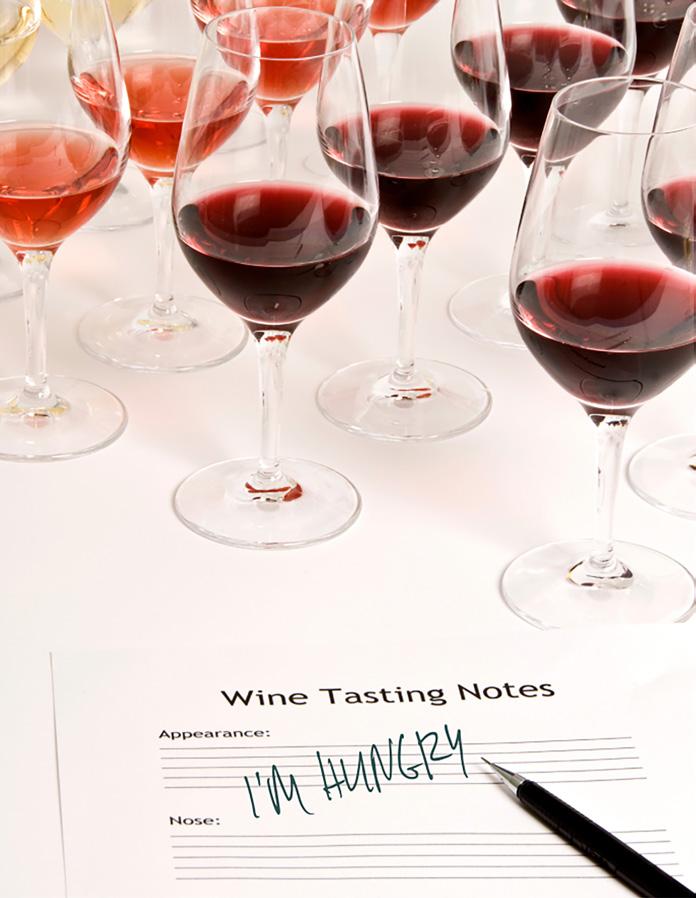
Those numbers don’t tell the full story. As the report makes clear, 8% of respondents attended “far more” tastings, and a further 13% “slightly more”, while 38% of respondents said their attendance was neither up nor down. And clearly, some kinds of events (single-supplier events in London; multi-supplier events outside London) are more popular with independents than others.
All the same, taken together, these findings are hardly a ringing endorsement for a mode of doing business that has always been assumed to be essential for both importers and producers on the one hand, and buyers and press on the other.
The data inevitably prompted me to reflect on my own attitude to tastings, and, like many in the trade, the first thing I realised is that I’ve come to take them for granted over the years. In part that’s because there are just so many of the damn things: a quick glance at the WSTA’s events diary shows that, on the day I’m writing this piece, I could have gone to nine very different tastings in London alone.
The sheer volume of tastings gives me a more or less constant FOMO feeling: a dizzying sense that, though I often taste hundreds of wines in a week, I’m barely
scratching the surface of what’s possible and available, that awful greetings card slogan “so many wines, so little time” forever pulsing away in lurid comic sans at the back of my mind.
But it also makes me – us – a little blasé and difficult to please. The tasting circuit is basically a buyer’s (or attendees’) market. And when there is so much competition for the attention and time of what is a finite pool of potential tasters (each of whom has a finite and, it seems, dwindling pool of time to devote to events), any event must have a compelling reason to draw in a crowd in the first place, if it is to succeed.
For a single supplier, that might be the promise of novelty: new releases, new agencies, a particularly exciting new vintage.
Or it might be something “value added”: a masterclass or four, the presence of some celebrated winemakers, the assurance that visitors will have access to parts of the portfolio that a standard sales call or sample run just won’t reach.
But – a handful of big-name suppliers aside – no tasting host can assume that it’s enough to simply send out the invites and

set up the trestle tables and wait for the punters to roll in.
If an event does succeed in attracting a healthy crowd (and I’ve been to more than a few events this tasting season where it’s felt like three was the crowd), the next issue is hanging onto it, both on the day itself and for any repeat event next year. This is by no means easy, although there are some fairly simple things that event organisers can do and, just as importantly, not do, to help their chances of having a successful event.
First, they should make it as easy as possible for those of us who want to taste wine to do just that. That means providing plenty of opportunities for free-pouring (a
The slogan ‘so many wines, so little time’ pulses away in my mind in lurid comic sans
free-pour table of highlights or a particular theme is the first thing I look for at a tasting). It also means keeping any sales talk and background information to an absolute minimum unless the taster has asked a question. There are hundreds of wines at most trade tastings, but tasters won’t be able to try more than a couple of dozen if every pour is accompanied by a five-minute disquisition on skin contact or a very particular type of schist.
Food, too, is essential. It doesn’t have to be free. But easy on-site access to some form of sustenance seems a bare minimum of courtesy – and the only way to ensure attendees devote more than a couple of hours to an event.
Finally, there is the question of numbers. And it’s here where organisers have to balance the twin competing purposes of a trade tasting. On the one hand, you want enough space in the room to enable attendees to taste as easily and
comfortably as possible, so that they come away with as many wines they wish to buy (or, in my case, write about) as possible. There are some tasters who are able to make coherent tasting notes while jostling their way between table and spittoon through a five-deep crowd. But they are very much in the minority.
But if over-subscribing an event is one pitfall, most of us don’t really welcome the opposite.
The best tastings will have a tangible buzz, with punters excited about the wines, and happy to discuss them. Busy but not too busy is the best, if rather hard-to-define, scenario. An event where you can taste as many wines as you require and have the time and space to think about them. But an event that also understands that wine is a social drink, that the wine trade is a social place – and that sometimes, as Duncan Murray put it in his survey response, it’s just “nice to see people and get out of the shop”.
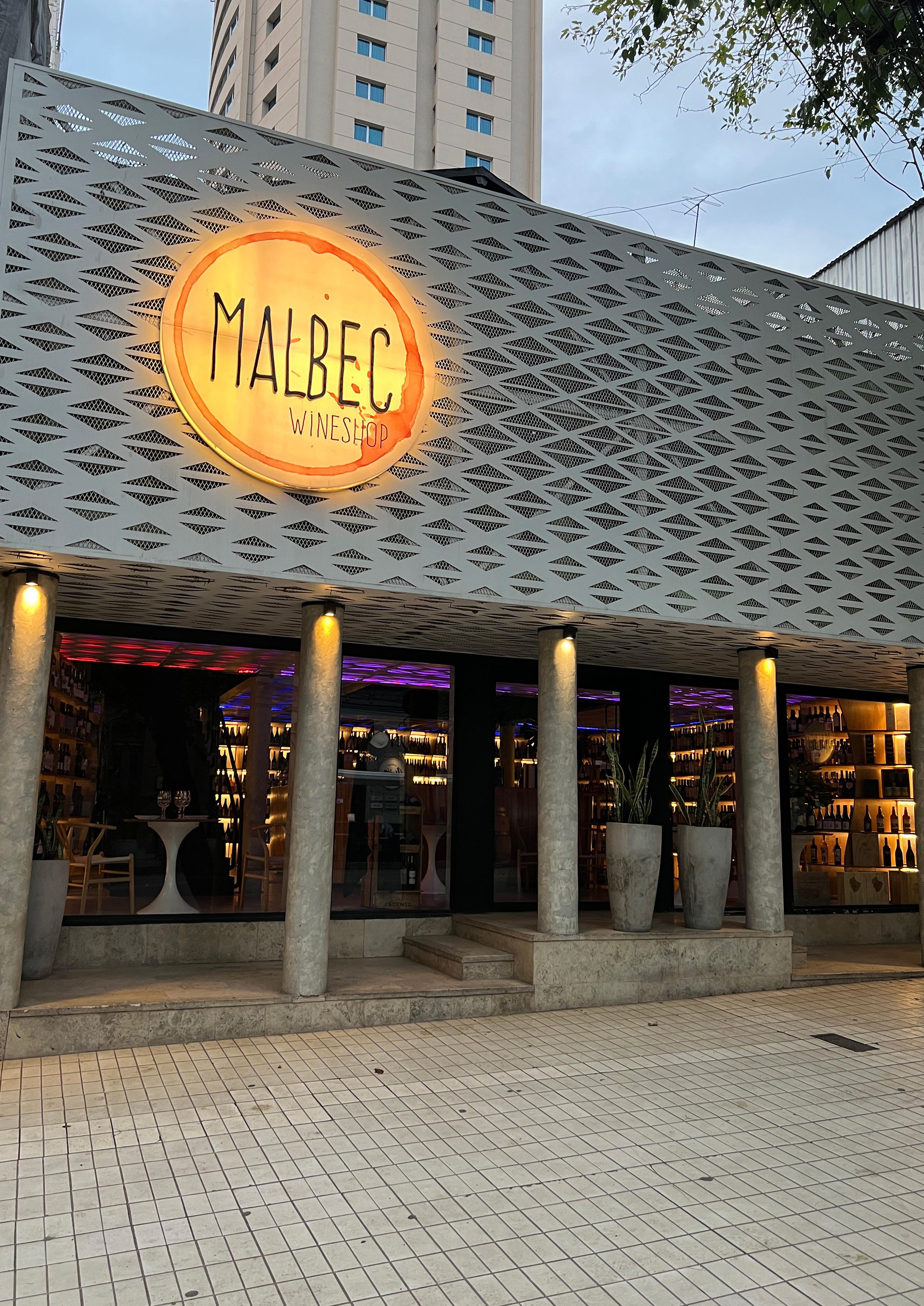 Wine shops of the world Malbec, Mendoza City, Argentina
Wine shops of the world Malbec, Mendoza City, Argentina
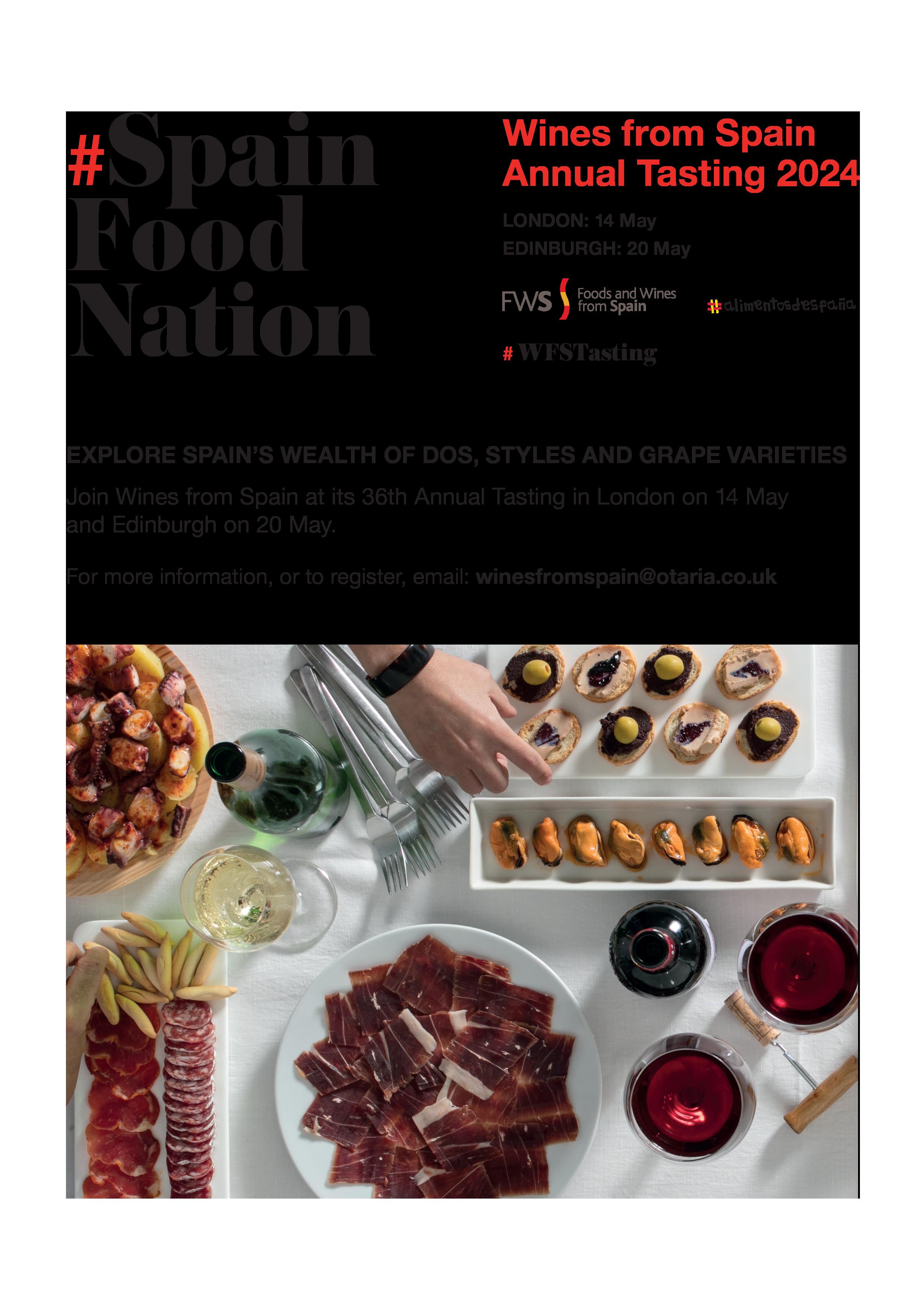

Wand two that are a bit higher end. We used to promote and focus on a different region every month. Now I just choose 40 wines that I feel are the best and represent the whole of Spain.
“I work with a small bodega in Rioja. They use the Beaujolais method to make one of their wines. It’s still quite full bodied but really fruity and fresh. I’ve given it to wine critics and journalists in Manchester and they’ve said, ‘that’s not a Rioja,’ and I love that.
“They also make a wine with lower alcohol. The grapes are grown at a higher altitude and it’s coming in at 12%. It’s Tempranillo but it reminds me of Pinot Noir. It’s so different.
“That’s what really excites me about Spain. There is so much variety and diversity.”
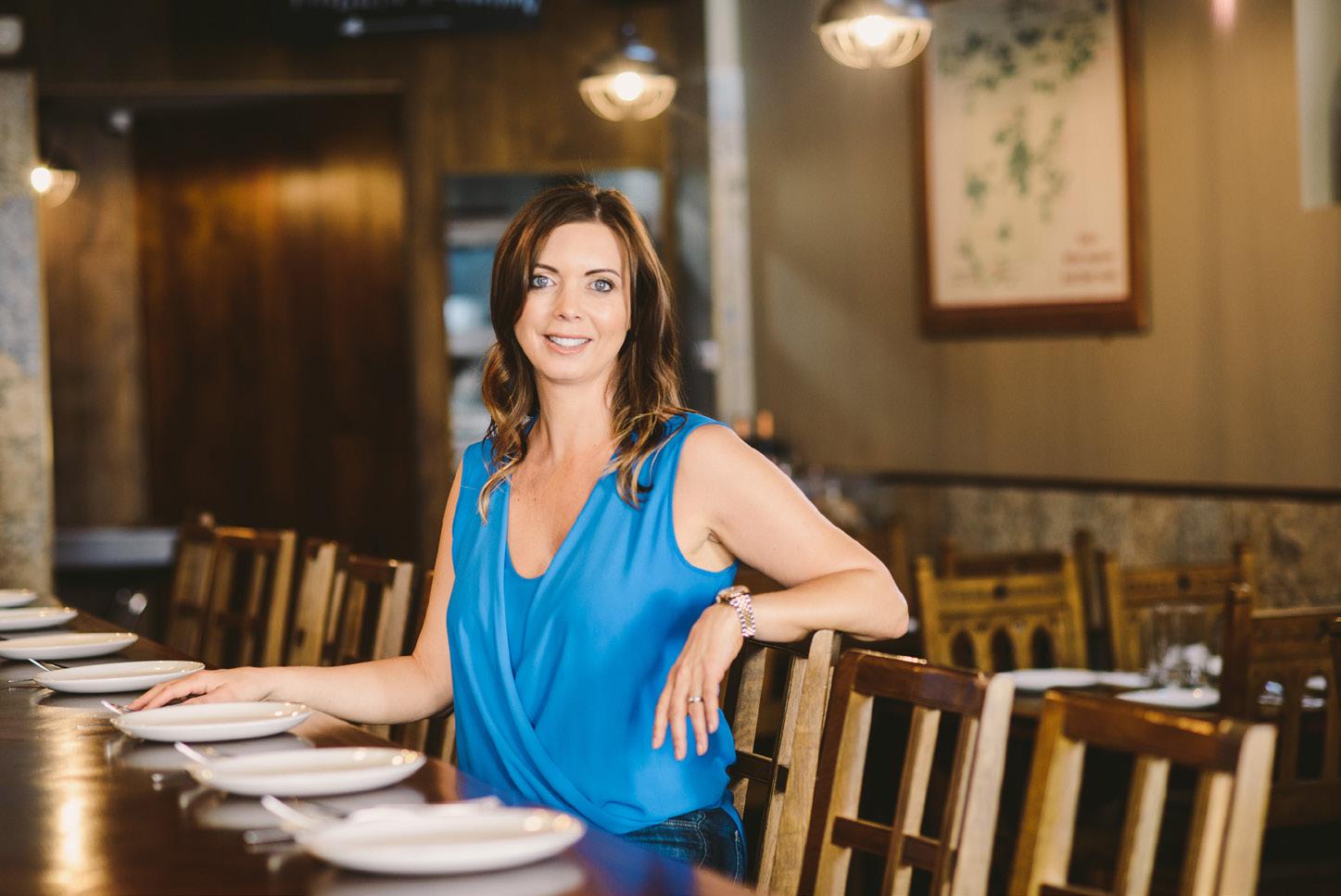
Next month’s Wines from Spain trade opportunity for independents to take one of the world’s most dynamic
ines from Spain invites the UK independent month.
It’s an opportunity to explore Spain’s which will come to life in London on May 14 and Edinburgh
Both events will give visitors the chance to taste currently available and to discover hot new releases.

Indies can access the tasting’s online catalogue to aimed at the independent trade.
Merchants can expect to find quality at a whole regions and consumer favourites, as well as explore more unusual wines.
Spain’s popularity with trade and consumers alike reader survey. Spain achieved a top three placing countries as well as the chart of the independent trade’s
Tuesday, May 14
10.30am-5pm, The Pelligon, 43 Bank Street, London
The tasting features a guided wine walk especially Williams – a whistlestop tasting tour of some of the should have on their radar. Educational masterclasses will also be part of the day’s programme. Lunch is provided by Ibérica.
Monday, May 20
10.30am- 5pm, The Balmoral, 1 Princes Street, EH2 2EQ
Exciting flights, themed tastings and masterclasses for a busy day of Spanish wine tasting in the Scottish Rose Murray Brown MW and accredited Spanish Wine Educator Miguel Crunia will host masterclasses focusing alternative varietals and “off the beaten track” wines.
To register for either date, email winesfromspain@otaria.co.uk
independent trade to attend its 36th Annual Tasting next
DOs, grape varieties and myriad styles, all of Edinburgh on May 20. taste the full range of modern Spanish wines releases.

to view the list of Spanish wines specifically range of price points. They can pick from classic explore lesser-known areas and producers to unearth
alike was confirmed in this year’s Wine Merchant in both the league table of most interesting trade’s biggest-selling countries of origin.
London E14 5NX especially for indies, led by David the wines all merchants masterclasses and tasting features
Street, Edinburgh masterclasses will make Scottish capital.
Wine focusing on wines. winesfromspain@otaria.co.uk trade tastings provide the perfect take stock of all that’s happening in dynamic wine-producing countries



“I have an obsession with Spanish wines and they make up about 30% of our range,”says Jaime.
“We’ve really grown this side of our portfolio over the last three years and we import about 50 wines from about 10 Spanish wineries.
“Spanish wines are really important at Vino Vero. They sell really well and the quality you get for the money you pay is quite unique.
“Regions like Rioja and Ribera del Duero do really well for us, and grapes like Tempranillo. We also work with producers from Galicia, La Mancha, Catalunya … so it’s pretty spread out and it’s a mix between well-known regions and some quite obscure ones.
“We really focus on indigenous varieties – we are seeing that people are interested in lesser-known grapes. Maturana Tinta and Maturana Blanca from Rioja are interesting. We also focus on organic farming, and small, artisanal, family-run wineries.
“One of the other great things about Spain right now is that there are lots of younger winemakers coming back to their family regions to try and reclaim the vineyards and bring back forgotten grapes.
“These are all good selling points as my customers like to hear the stories behind the wines. I think the British fascination with Spain as a holiday destination definitely helps. There is a sense of familiarity with certain regions.”
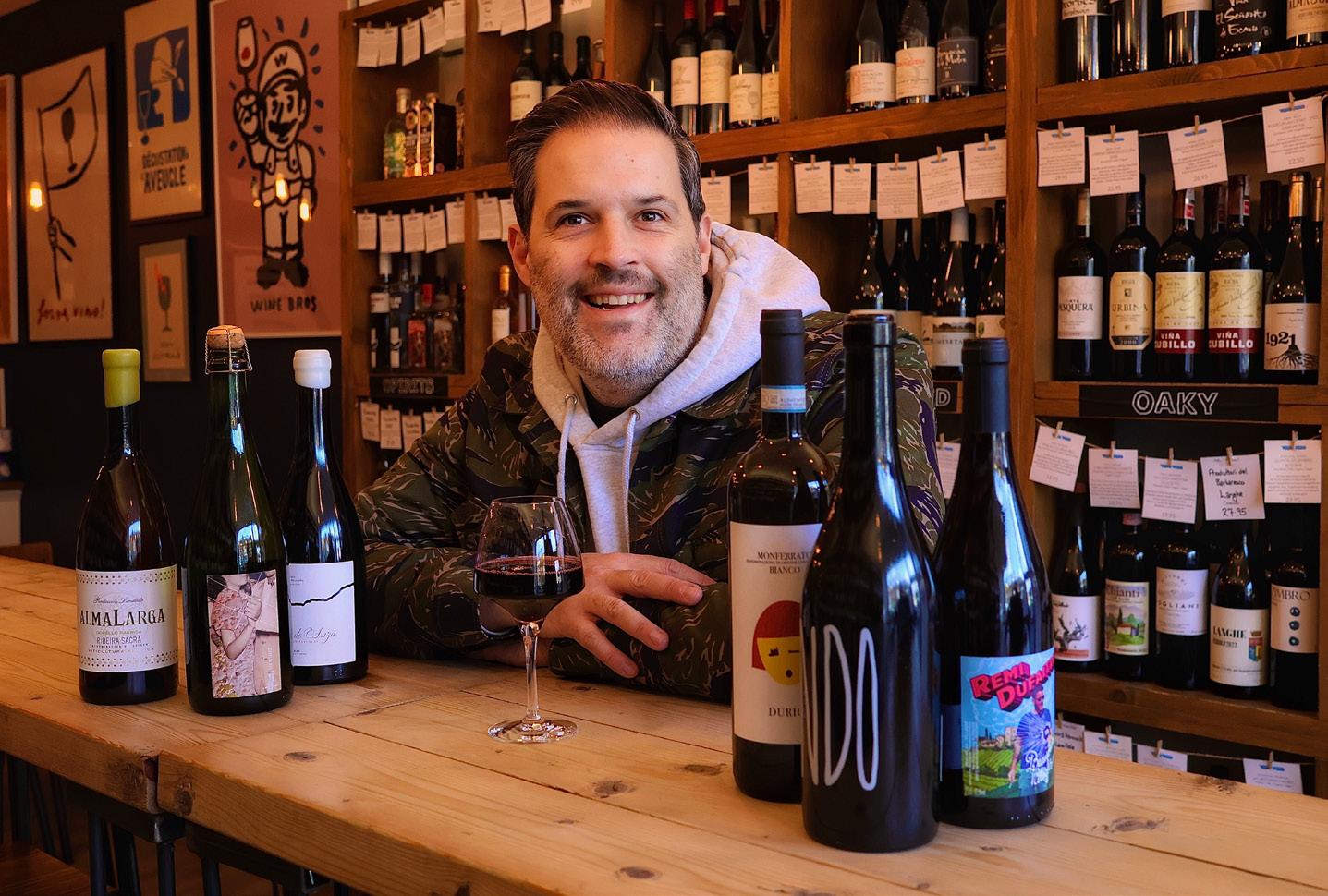
How do you make a truly memorable and distinctive topflight Champagne? That was the question posed by a very special event hosted by Champagne Laurent-Perrier in association with The Wine Merchant last month.
The Champagne Laurent-Perrier UK team welcomed an eager audience of independent wine merchants to the de-luxe surrounds of the Velvet Bar at the Corinthia Hotel in central London to explain how the house goes about making its range of fine Champagnes.
The day’s events took in a fascinatingly detailed presentation and tutored tasting of the house’s remarkable prestige cuvée, Grand Siècle, by brand ambassador David Hesketh MW, and a tasting of some of the other jewels of the Laurent-Perrier range.
Hesketh, who was the managing director of Laurent-Perrier UK for 20 years before taking up his current role, began his tutored tasting with an explanation of the thinking behind the pithy statement of intent that has inspired the making of Grand Siècle since the very beginning: “Recreating the perfect year”.
“That’s quite a bold and ambitious statement,” Hesketh admits, before tracing its origins to the years just after World War II when the hugely influential and widely respected Bernard de Nonancourt, then 28 years old, assumed control of the house from his mother, who had acquired it in 1939.
“These were hard times, and he wanted to put the house back on the map,” Hesketh explains. And the best way to do that, de Nonancourt believed, was by developing a truly special prestige cuvée.
“He knew he didn’t have to rush,” Hesketh adds. And so, at the beginning, before producing or releasing anything, “he simply observed the different vintages. He wanted a wine capable of long ageing on the lees and after disgorgement that could take on complexity, depth, aromatics on the nose and palate as it evolved, but would also keep its vibrancy and freshness.”

David Hesketh MW leads a tutored tasting in which he explains how this revered Champagne three vintage wines together to produce its famous Grand Siècle cuvée.
At that time, prestige cuvée was synonymous with vintage. But de Nonancourt soon concluded that no single vintage could offer up all the qualities that he wanted for his flagship wine. The only way to come close to “recreating the perfect year” in a single wine was, rather, to break with the classic prestige cuvée recipe and to blend three vintages together.
That idea has been the fundamental element of Grand Siècle ever since. “A vintage has three phases: young, middle aged and old,” Hesketh says. De Nonancourt, and his successors, have always tried “to contain those three dimensions in a single wine”.
Not that vintage isn’t “very, very important,” he says. “Vintage is the key to Grand Siècle as it’s made from three
declared vintages,” Hesketh says, adding that the most important criterion when assessing whether a vintage might have the honour of inclusion in an iteration of Grand

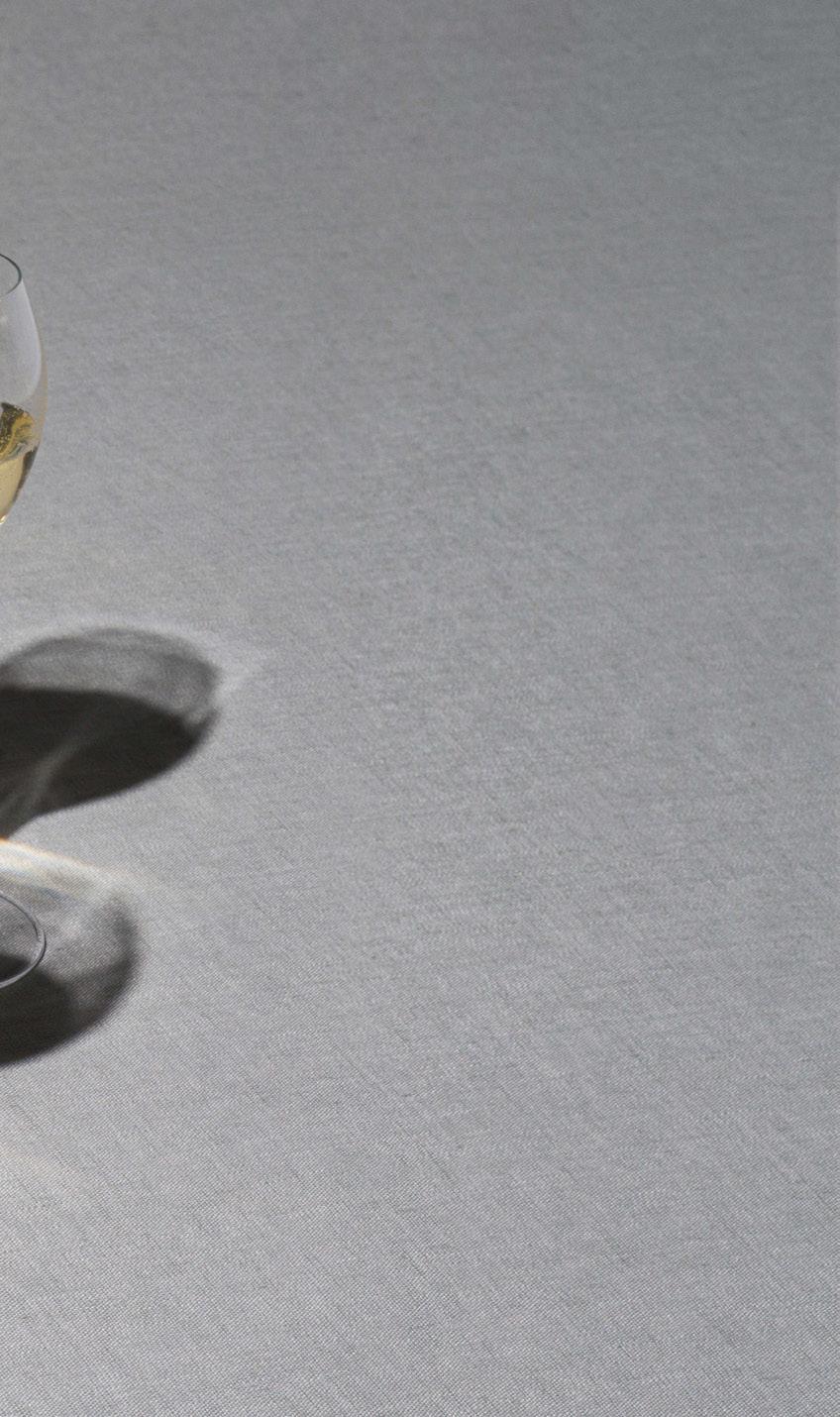
house ‘recreates the perfect year’ by blending In association with Laurent-Perrier UK
years have been included, and better able to appreciate the intricacies of the blending process.
For the latest, 26th iteration, one of two shown at the London event (the other being the 23rd iteration from magnum), Hesketh says the process began with the harvest of the first component, from 2007, which after its first fermentation was declared as a vintage in early 2008, with the wines set aside in stainless steel tanks.
The same happened with the 2008 vintage (declared in January 2009) and the 2012 vintage (declared in January 2013). “Then there was a final tasting in June 2013 where we asked, ‘are we really going to make a Grand Siècle?’” Hesketh says.
In the final blend, the youngest wine is always the most dominant: for the 26th iteration, for example, the balance is 65% 2012, 25% 2008 and 10% 2007, while the 23rd is 65% 2006, 20% 2004 and 15% 2002.
representation from a core group of six grands crus: three Chardonnay (Avize for “freshness”, Cramant for “roundness” and Le Mesnil for “precision and minerality”), and three for Pinot Noir (Ambonay, Bouzy, and Tours-sur-Marne). Chardonnay leads the blend (it’s 58% of both the 26th and 23rd iterations), and the Pinot, in Hesketh’s words, is there to provide “generosity of fruit. They give a structure but are not overly dominant or aggressive – the grand cru (Aÿ) which we use in the vintage wines is not used in the Grand Siècle because it would be too dominant.”
The result is a wine which, as Hesketh points out, is “very well suited to food. We often have dinners where the Grand Siècle is paired with food to show it off – it’s like a white wine that is Burgundian in style”.
Siècle is “whether it has a life ahead of it as a component within Grand Siècle”. The exacting standards set by LaurentPerrier means that the house has far fewer declared vintages to choose from than most. It has declared 30 vintages between 1950 and 2012, some way behind the 49 declared across the region in the same period. Of those 30, only two – 1981 and 2000 – have failed to make the cut for inclusion in an iteration of Grand Siècle. That said, Hesketh reveals that a tasting of recent disgorgement of a “delicious” magnum of the 2000 suggests the vintage is much better than had been originally thought.
Until recently, Hesketh says, the composition of each iteration of Grand Siècle was known only internally. Since 2019, however, the house has sought to bring greater transparency, and consumers are now able to know precisely which
“They bring together 40 to 70 parcels of wine,” Hesketh says, “which are then blended before having their second fermentation in bottle before an extended period – a minimum of 10 years for the bottle, and considerably more for the magnum – of lees ageing.”
The wines are disgorged “according to commercial demand”, which means, as Hesketh says, that “as you go through the life of an iteration [or that of one of Laurent-Perrier’s vintage wines], it has more age and development.”
One further benefit of Laurent-Perrier’s policy of greater transparency has been to shed new light on another essential ingredient of Grand Siècle’s exceptional finesse and longevity: the vineyards from where the Chardonnay and Pinot Noir grapes are sourced.
For each edition, fruit from a maximum of 11 grands crus (there are 17 in total in Champagne) is included, although some iterations (such as the 26, which uses eight grands crus) will feature fewer.
No matter the iteration, there is always
Much the same can be said about the full range of wines produced at Champagne Laurent-Perrier, with “freshness” “elegance” and “gastronomic” among the terms used most frequently by the independent merchants in attendance at the London event.
As well as the two editions of Grand Siècle, tasters also got to sample the top-selling La Cuvée Brut NV and the independents’ favourite Cuvée Rosé, the zero-dosage Blanc de Blancs Brut Nature NV, and three Laurent-Perrier vintages: 2015, 2012 and 2008. Together, they provided a fascinating insight into this most fastidious of Champagne houses, a range of memorable and distinctive fine Champagnes of which Grand Siècle is the truly remarkable peak.
• What the merchants said – see overleaf.


Our guests give their feedback on a memorable Laurent-Perrier masterclass
Alex Prymaka, No 1 Oscar Road / Kent Food & Wine, Broadstairs
It was really just great tasting all of Laurent-Perrier in one go. In my shop, everyone goes for the rosé, but you don’t see the others, so it was really great to try them all together. They’re really different and really interesting. The 26th Grand Siècle was just delicious while the 23rd was more serious and made me think a bit more. It was also great to understand a bit more about Laurent-Perrier: it’s so famous
as a house, but you don’t necessarily learn about the details and the history.
Liam Plowman, Wild + Lees, south London
I really enjoyed this event. The history is fascinating. And it was so interesting to taste the different wines. The profiles of each of them are very different to the Champagnes I’m used to: they’ve got high acidity and freshness. They’re gastronomic,
not wedding-reception Champagnes: they’re more for a platter of oysters. I’ve had Champagne and food many, many times, but these are made really thoughtfully and are particularly designed to work with food, rather than being simply quaffable.
Robin Eadon, Dulwich Vintners, south London
This was the first time for me seeing Laurent-Perrier all in one place and broken down in a really interesting way. It’s great to hear the history and the behind-thescenes information, and the whole profile of Laurent-Perrier. It was very good to see the subtle differences between the different wines. I enjoyed the 2015 in its relative youth, and the 26th iteration of Grand Siècle was very impressive. It’s really interesting to see how, when one vintage drops off, another takes over.
Greg Andrews, D Vine Cellars, south London
You don’t get to hear the back story of Laurent-Perrier so often, and it now makes a lot more sense why it occupies the position it does. The Grand Siècle 26th iteration was the highlight for me, and not just now but looking into the crystal ball. The 23rd is a wine geek’s wine: it needs a bit of time to pull together.
Riaz Syed, Stonewines, north London
The wines are just so clean and fresh – they’ve got something that is unique. They go for the freshness of style, they’re not bothered about that earthiness and meatiness you get in some older Champagnes. I really liked the zero-sugar Blanc de Blancs. I suppose you expect a large Champagne house to do different editions, but this is something really interesting and different. They’re willing to take a risk and I really like that. It’s great to see.

It’s not been a great year on the PR front for Marston’s. First, it announced it would stop using the unique Burton Union system of wooden barrels and pipes for ale brewing, thought to be the last on the planet.
Then it took the unusual step of deciding to sell keg beer in its pubs through the handpumps traditionally used to dispense cask-conditioned ale, using the description “fresh ale”.
Marston’s has tried to appease its critics by pledging to put the label “breweryconditioned beer” on the pump clip, but it’s a purely cosmetic step with no technical benefit to beer quality.
It’s difficult to see it as anything other than a cynical move to deceive members of the beer-drinking public into thinking they’re drinking “live beer” when they’re not.
There are still people knocking around who will remember a time when Marston’s was seen as a credible alternative to the mass-produced beers of the big brewers. Now, having formed a UK alliance with Carlsberg and subsequently closing its Jennings, Ringwood and Wychwood breweries, Marston’s both is and behaves like a big brewer.
The Union system retirement is being
Bitterness is a fundamental element in the flavour profile of virtually all beer
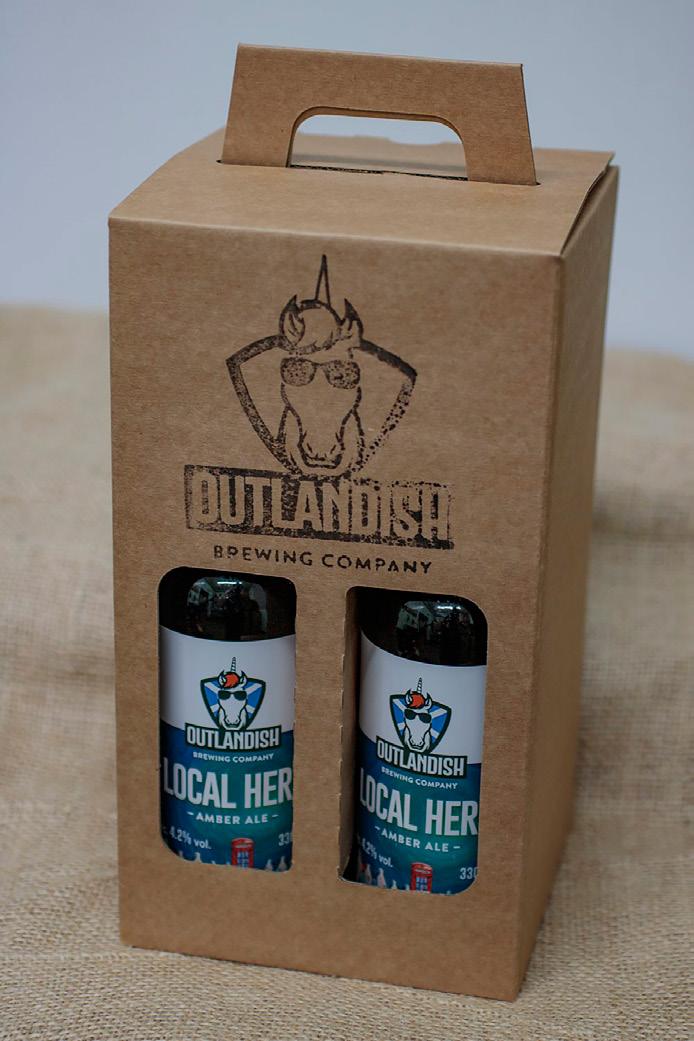

blamed on low sales of cask ale, making it no longer viable. It was used to make Marston’s Pedigree, and even then to brew just a proportion of its output, which was blended with quantities of the beer made in stainless steel vats.
Obviously, there’s a balance to be found between preserving tradition and using outmoded and expensive systems that don’t justify their keep.
But one could argue that if Marston’s had shown more category leadership to keep the cask ale flame alive over the years then
real ale sales might not be in the parlous state they are.
Where Marston’s-Carlsberg beers are sold, it has been pushing a UK-brewed version of pale ale from Shipyard Brewing of Portland, Oregon, rather than the historic Pedigree in which its own brewing heritage is tied up.
Marston’s was the trailblazer among a clutch of regional brewers to abandon the term “bitter” in favour of amber ale, a marketing term designed to emit an idea of radiant loveliness rather than (air quotes) difficult flavours. The twofold madness in that reasoning, of course, is that bitterness is a fundamental element in the flavour profile of virtually all beer and that the popularity of craft beer among Millennials and Gen Zs has its origin story in insanely bitter IPAs from the States.
We might also observe at this juncture how bitter Italian aperitif and Negroni cocktails are two of the biggest spirits trends of the age.
Wadworth 6X, Woodforde’s Wherry, Sharp’s Doom Bar and Shepherd Neame’s Spitfire all followed Pedigree through the amber ale door.
Smaller British beers have also been guilty of shunning the term bitter, in favour of various takes on IPA and pale ale, presumably for the same misguided marketing reasons.
But there are signs that bitter, best bitter and, especially, extra special bitter, or ESB, are coming back into focus.
Burnt Mill Flow Country is a modern ESB with a robust fruity malt-loaf type character and a lingering soft bitter finish. Bitter as F*ck from Nottingham’s Black Iris is a collaboration with “Rotherhambased Sludge [?] band Swamp Coffin” which thankfully doesn’t live up to its stupidly overblown name. It would, in fact, be more accurately labelled as Generously Balanced Meeting of Malty Sweetness and Spicy Bitter Hops.
Lewes-based Harvey’s is one of the regionals that didn’t forsake the term bitter. Its Sussex Best isn’t to everyone’s taste but its nutty, earthy bitterness is an increasingly welcome antidote to the prevailing sweet and tropical pale ale styles of the day.

Graham Holter, The Wine Merchant: The obvious starting point is, how is business for everyone? Does it feel like a recession?
Andrew Wilson, Drinkmonger and Royal Mile Whiskies: I feel we’re on a broadly positive trend. I think we’re now back up to pre-pandemic levels. I would say broadly we are on the up.
Royal Mile Whiskies’ customer base is very tourist-heavy during the on-season, but plenty of locals shop with us during the off-season. Drinkmonger in Bruntsfield [south Edinburgh] relies more heavily on the local trade, with lots of loyal regulars. At Pitlochry, another Drinkmonger, that is reliant on tourism, just little changes can really throw things off there.
Douglas Williamson, Juniper Wine Café, Dunfermline: December was good but not nearly as good as November. We shut for two weeks in January, just to save wages, and it worked. We were up 20% in January on where we were last year, but that’s not difficult when you’re only open for two weeks. February will be up; it’s looking good.
Patrick Rohde, Aitken Wines and The Wine Press, Dundee: I’m not getting excited about the future right now. But we’ll be fine. We’re just ticking over and we’re busy. I’m lucky that both places are

Once again, The Wine Merchant and Hatch Mansfield invited six independent merchants to a panel discussion at the All Points North tasting in Edinburgh to discuss a range of topics affecting the trade.
Coverage begins here and continues in our May edition
fairly busy compared to other venues in Dundee.
We’re seeing a lot of young people coming in and becoming more and more curious. It’s really encouraging. If anything came out of Covid, I think everybody would probably agree, it’s that people are buying better; they’re drinking better.
The dream was always to close for a couple of weeks in January, but it’s never quite happened. My bar did shut for a week because that just makes sense and staff can catch up with holiday. We shut it for the second week of January because for the first week you still get some kind of business.
“The start of this year has been very hit and miss. The peaks and troughs are getting more pronounced”
Graeme Sutherland, WineKraft and Good Brothers, Edinburgh: There didn’t seem to be a peak trading day leading up to Christmas. And people were buying more in the mid-entry level than the high-end stuff.
Patrick Rohde: Same here. The really expensive luxury fine wines didn’t sell as much. We had enough sales, and we achieved where we wanted to get to, but there were no big spenders.
Graeme Sutherland: The start of this year has been very hit and miss. We closed the bar for two weeks in January but the shop stayed open for three or four days a week. What is evident is that the peaks and troughs are getting more pronounced, so it’s harder to budget going forward because we haven’t got the same continuity; it’s less predictable. But we are investing in potential new sites.
Mo O’Toole, Carruthers & Kent, Newcastle: We had a good start to the year. We always close the first week of January and the figures have been reasonably good for both January and February. What I find more interesting is Christmas. It’s the first different Christmas we’ve had in 15 years. We made our target financially, so that was OK. But it was an entirely different style of buying that happened this year. We didn’t get that rush that we
always get. There was fairly normal trade for the early bit of December but then it didn’t go up like it usually does for all of us – it didn’t go through the roof. From Black Friday onwards, that was the pattern.
We made our way, and it was OK. But for me this has signalled the beginning of the online pressure that we’re all going to feel as small indies postCovid, because people’s buying habits changed a lot during that time. So it’s even more important now for us to develop the different aspects of our business, like the events and the in-house drinking and stuff like that.

Graham Holter: Is anyone doing more than 10% of their turnover online?
Patrick Rohde: It’s heading that way. Online is big for us and that’s kind of keeping our head above water. I’m not overly comfortable with it, I don’t like selling that way, but I’m finding it a necessary evil just now. The funny thing is that I would suggest about 60%-70% of my online is going to the south east of England. I could pin it down to having
“People are saying ‘amazing, a shop, with people’. And they quite like it if you’re slightly rude to them, because they’re actually dealing with a person”
lower overheads than a London wine merchant, for example, and we did invest a wee bit on the website. I have got a member of staff pretty much dedicated to it: not full-time, but we’re trying to keep on top of it, because we need the revenue, just like we need events.
Phoebe Weller: I think the online retailers have really smartened up and tightened up. Even in the last six months you see this kind of full-frontal attack from online. We’ve just canned our online completely. We’ll do sales through our website, but I want to speak to you before we package something up. We treat our online presence like a teaser.
Graeme Sutherland: With online, even if you don’t concentrate on it, it will give you exposure to people you’d have never been in contact with. But you have to invest so much time in the upkeep of a website and really, coming out of lockdown, what we see is people wanting experiential shopping. Even though the online retailers have sharpened up, they can’t give you the experience.
Phoebe Weller: And that’s what we’ve got; people coming into a space and saying, “amazing, a shop, with people”. And they quite like it if you’re slightly rude to them, because they’re actually dealing with a person and not a bot.
Douglas Williamson: I don’t hold enough stock of anything or have the packing space to do online. We encourage people to come to us through our website and we deliver locally.
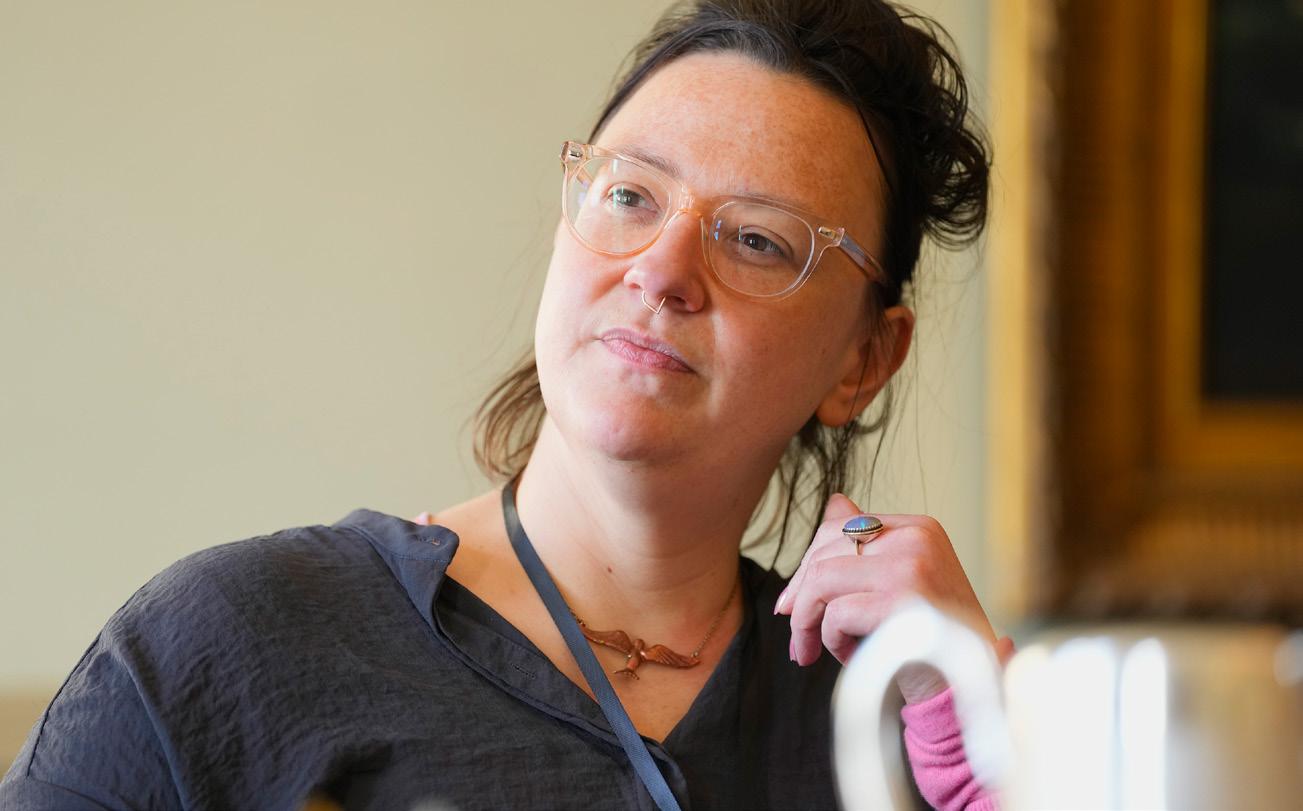
Graham Holter: And your online offering can only be as good as your courier …
Phoebe Weller: That’s why we stopped. We were sending expensive whisky to people, limited editions, that invariably got smashed or lost or stolen. What’s the point?
Graeme Sutherland: It was amazing, having Pulpsafe boxes, which you think are indestructible, and they come back looking like a rugby ball. I mean, they’ve just literally been thrown around. We’re having to really pick and choose who we work with, courier wise, and it’s costing us a lot more money to work with better ones.
Graham Holter: Who are the best ones?
Phoebe Weller: When we do Springbank releases we use Diamond Dispatch, because it’s one guy who charges 30 quid. I’m pretty sure it’s one guy going down in a van, delivering it and coming back.
Graeme Sutherland: My brother, who owns the Little Rascal bar, swears by APC because he’s never had a broken bottle. But in six months I’ve had about 40% of my deliveries smashed.
Patrick Rohde: We use a combination of UPC and DHL. We were using DPD but not anymore as we were getting between 8% and 10% returns.
Douglas Williamson: If it doesn’t get in the back of my car, it doesn’t get delivered.
Andrew Wilson: Domestically we use DPD and because we operate on a larger scale, mainly because of the spirits, we’ve got an account manager. We’ve also got two members of staff who look after customer service and shipping full time. Internationally it’s a much messier story.
Graham Holter: Do you think for the online consumer it’s all about keeping the price keen?
Patrick Rohde: I assumed it would all be on price. But in my experience, we have deep-discounted a couple of lines just to see if we can really shift a batch of something, and it’s not always the way. It’s not that black and white.

Phoebe Weller: And I guess if somebody dealt with you once and had a really great experience …
“Pulpsafe boxes have come back looking like a rugby ball. They’ve just literally been thrown around”
Graeme Sutherland: Social media is great for building brand awareness. But we looked at the analytics and not a huge amount of actual sales go through. It’s really more as a footfall driver.
Andrew Wilson: And a way to portray a bit of personality of the shop and appeal to a wider audience.
Phoebe Weller: People don’t want to be sold to online. You’re just bombarded with people selling you shit all the time. So it’s nice to just be in a space, which is like “we’re not trying to sell you anything”.
Douglas Williamson: We use MailChimp for advertising events. You can get people to sign up for those and we promise we won’t send them anything except for invites to tastings. To drive sales we might put something on Facebook to say, “come in, we’ve got a special offer”, but we never put a price on it. It’s there just to bring people in.
Mark O’Bryen MW, Hatch Mansfield: How much does everyone rotate their range during the year?
Douglas Williamson: About 90%. We’ve got a tiny shop and we’ve got to keep people interested. I got 30 new lines in last week.
We work with eight suppliers, although there’s only about four of them that I use a lot. There’s been little bits coming on and if they work, they stay, and if they don’t work, then they won’t.
Everything is loosely arranged by country but really we focus on the style of wine. We’ve always got a range of Argentine Malbecs because you’d be daft not to, but our range of New Zealand Sauvignons is dropping. On my shopping list today is Sauvignon that isn’t from New Zealand, so I can offer something new. That’s the game we play. If you want wine by the glass we don’t do Merlot, we don’t do Pinot Grigio, because that’s what people will ask for. We want to get involved in a conversation, which is fun.
Graeme Sutherland: We have a large client base who demand certain wines, so we have a core list of about 300 wines that we never change. One of the key things we wanted with WineKraft was for there to be always something new for you to look at when you come in; we want customers to stay interested. So we have another 300 wines that we just keep
“If you want wine by the glass we don’t do Merlot, we don’t do Pinot Grigio, because that’s what people will ask for”

rotating. When we’ve sold out of this cool Spanish stuff, we’ll bring some more great Spanish wines in.
Mo O’Toole: We’ve got around 15 suppliers and 450 lines in the shop. I would say we keep a core range of 30%-40% staples. We change our wine list for drinking-in every month, and there are 18 wines on that list. We're constantly putting different stuff on it, because we want customers to be led by that wine list to discover different wines. So we’re constantly looking for new stuff.
A couple of years ago, we decided to look at central Europe, and we’d push that. At the moment we’re really interested in Greece, so things do change.
Last year we went to Millésime BIO in Montpellier and found loads of interesting wines and discovered some trends – not because they were trends in themselves, but because they had a fascinating story.
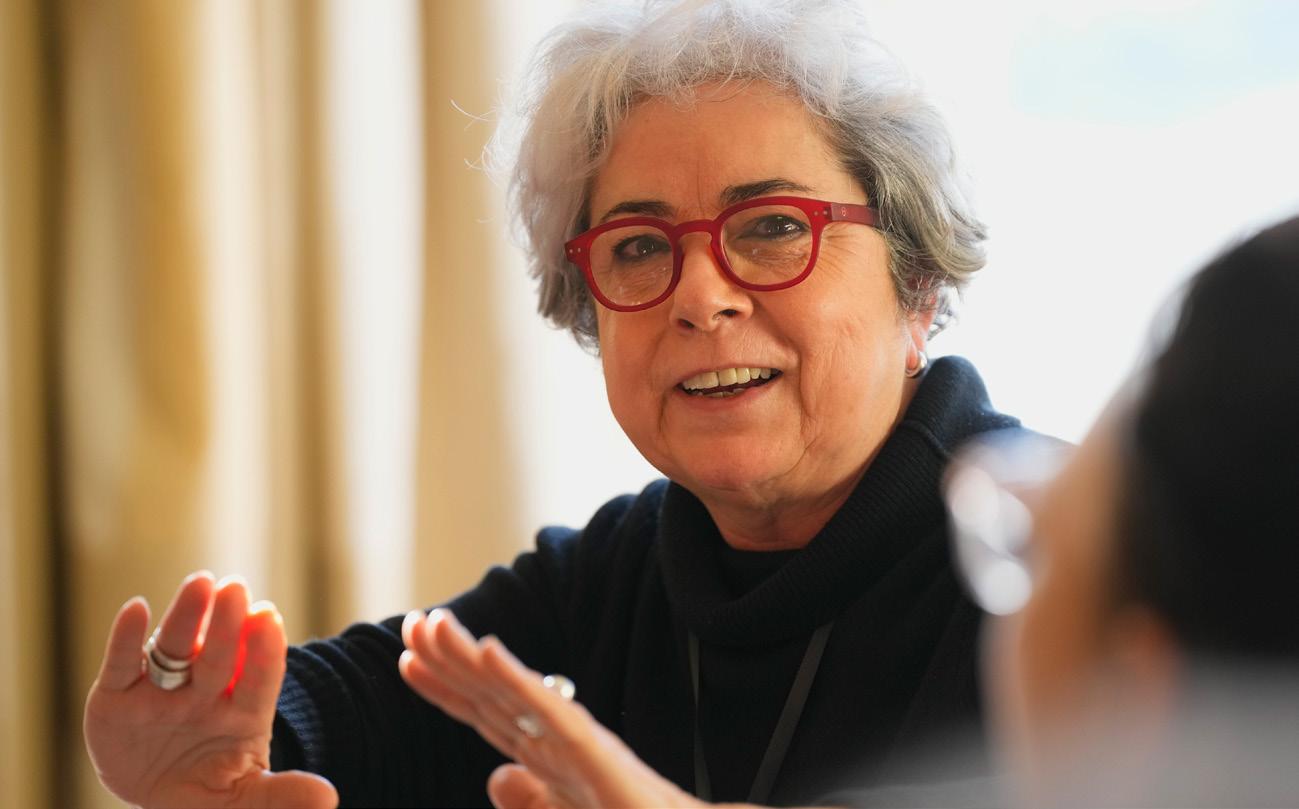
Andrew Wilson: I’m in the process of trying to plan the range that I inherited. There’s shelf space for 900 wines in our biggest shop, but there are 1,400 different wines that you could nominally call the range. So I’m trying to shrink it down to something that is actually “the range” so that I can assess each individual line, so that I have space to bring in new, exciting wines and keep things interesting that way.
Phoebe Weller: We changed a lot last year, because all the prices where people knew how much things cost went up by so much that we were constantly swapping things in. So last year was probably the biggest range re-do. But now everybody’s so used to prices having gone completely bonkers, and they’ve forgotten how much things cost originally, so lots of stuff is actually coming back in.

It’s a scenario that almost every independent wine merchant will encounter at one time or another.
You’re at a trade fair, or perhaps on an overseas trip, and you come across wines that you fall in love with. You think you’d be able to sell them in the UK. But there’s no importer. How are you going to get those bottles out of the cellars and on to your shelves?
The Wine Merchant’s recent webinar, led by Chris Porter of Kukla Beverage Logistics, explained the eight key steps.
1
Find a shipper. “A conversation with a supplier from whom you want to import should happen at the same time as finding a reputable freight forwarder,” Porter explains. Check that they are members of BIFA, the British International Freight Association.
While it is possible for importers to feel they can handle the expense, logistics, paperwork and time involved on their own, Porter says, there are good reasons why most don’t.
2
Get your licences in order. “Any company seeking to import directly with the intention of wholesaling in the UK needs to first register with HMRC’s Alcohol Wholesaler Registration Scheme,” Porter says. The application process can take up to six weeks. You will also need to acquire an Economic Operator Registration & Identification (GB EORI) number, which generally comes through within a few days of application.
Finally, you need to register with your local authority as a Food Business Operator (FBO). If you serve food and are inspected by food hygiene officers, this should already be in place. From January 2024, wine merchants based in England need to be an FBO to apply the now-mandatory labels showing the name and address of the importer.
3
FCA or ex works? You need to decide between the two. FCA, which means Free On Carrier, is the option most UK importers prefer.
“It requires the seller, your supplier, to prepare the goods and export paperwork in a correct and safe state ready for collection,” says Porter. “The collection point can be your supplier’s cellars or premises or another address. Wherever it is, the supplier is responsible for the export packaging cost of the licences and customs formalities up to the point of physical collection by the forwarder.”
If you opt for ex works (now a more common term for ex cellars), you, as the importer, are responsible for those export and pre-collection costs.
4
Be clear on the price. Porter says: “Establish what it will cost to move your goods from A to B. Most forwarders will quote a price per pallet. It is possible to quote per case, for what we refer to as ‘groupage’, ie less than a full trailer or container load. This is put together at a consolidation point, perhaps in France, Italy or Spain, and then moved forward on a weekly basis in transit to the UK with other wines and alcoholic beverages.”

He adds: “Most importantly, understand what it will cost for your customs clearance services. Some forwarders will have third-party customs clearing agents. In Kukla’s case, we have our own customs division, and we’ll show the price of customs administration for their work separately from the freight cost.”

5
Your order and what the forwarder needs to know. Essential details must include your order reference number and the name and collection address of the producer.
“We must also have a copy of your supplier’s invoice,” says Porter. “This must detail the case quantity that’s been ordered, case sizes, the bottle sizes, the alcoholic strength, and the colour.”
He adds: “The address and the destination delivery point in the UK must also appear on your order form to us. Most important of all, perhaps, is the duty status. Is your order to be shipped fully bonded? Is it in a state of excise suspense, where customs duty also has to be paid? Or is it fully duty paid?
Once you’ve told us this and we’ve entered it with HMRC, it cannot be undone without delay and cost implications – and the possibility of fines in really extreme cases.”
The form should also include your AWRS and GB EORI number. If the wine needs to arrive by a certain date, that also needs to be stated clearly.
6
Think about insurance. Mishaps can occur with any movement of goods and it’s a good idea to consider additional insurance cover.
“It’s worth asking your forwarder and your bond what insurance they offer, over and above the standard transport insurance, on what is called CMR terms,” Porter says. “That is a Europe-wide carriage insurance. It will cover most movements, but it does contain an element of risk. It is preferable to ask about taking out all-risk marine insurance – and particularly duty transit insurance.”
HMRC will still demand duty on wines that are lost or damaged on their journey, once details have been logged as goods intended for sale in the UK. Duty transit insurance covers you for this eventuality.
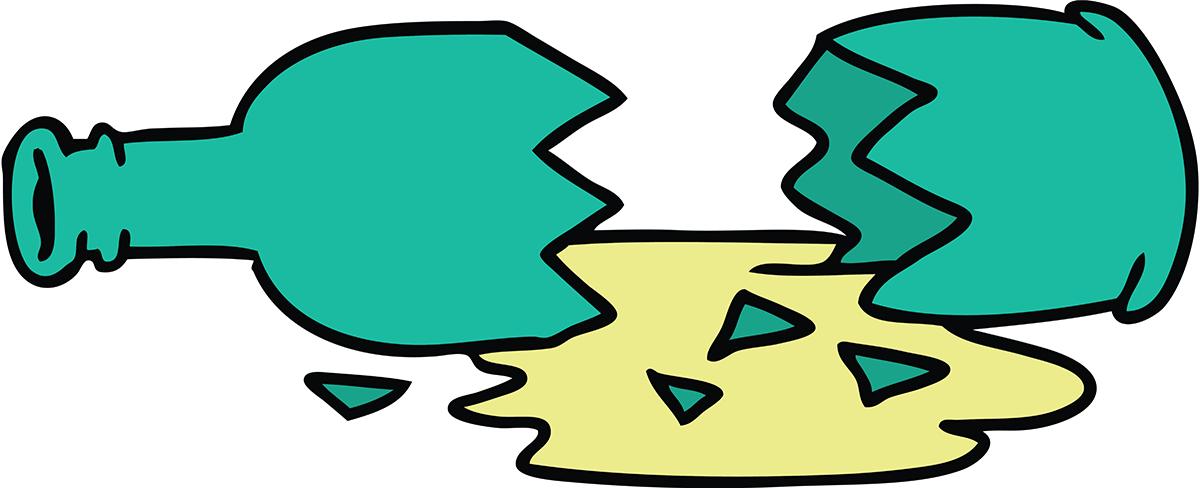
7
Agree collection arrangements. “Once we get a written ready date from your supplier, we can start planning the physical collection of your orders,” says Porter. “We will check the information provided by the supplier to confirm that it tallies with your instructions to us.”
The paperwork involved in this stage sounds onerous but again, a good freight forwarder will take the strain. There will be an Export Accompanying Document and an Administrative Reference Code (ARC number). Another form, called an EX1, accompanies the shipment, allowing the wine to avoid VAT complications on its journey.
“These documents are logged at the EU border, the point of exit,” says Porter. “So, whether that’s Calais or Boulogne, Genoa or Bilbao, that is where that job is closed off in terms of export and where the import is raised as a new job. Those documents are kept on our file, and pinned together with the import paperwork in a ‘virtual envelope’.”
8
The import process begins. The importer has a choice of how duty will be paid. If you take the fully duty paid option, “your forwarder pays the duty on your behalf and raises an invoice for that duty,” Porter says. “You pay that duty through us before we release the goods to your duty-paid warehouse.” Unless you’re part of the duty deferment scheme, no credit is given on “up front” duty required by forwarders.
If you opt for excise duty suspended, which is not quite the same as delivering to a fully bonded warehouse (which is authorised to hold goods in both customs and excise duty-suspended states), the freight forwarder will lodge all details of the shipment with HMRC’s Excise Movement & Control System (EMCS). A movement guarantee must be in place to provide fiscal security during transit.
“This only applies in cases where the warehouse of receipt is not fully bonded but is authorised to store excise-suspended goods,” says Porter. “The customs duty element of the import still needs paying in advance of release to the final delivery point if your bonded warehouse is authorised for excise-only duty suspension. Your forwarder will have a movement guarantee number that you will be able to borrow, effectively, for a small fee.”
Dylan Rowlands
Gwin Dylanwad Wine
Dolgellau, north Wales
“We’ve been importing wine for maybe 15 years. We had a restaurant and we started importing just one or two pallets from a couple of suppliers in Europe. It’s now a full wine business, wholesale and retail. And actually, post-Brexit, our imports have been increasing.
“I would say 25% of our volume is from wines we import, but it’s probably more than that in terms of lines.
“If you’re not shipping container-loads, getting the very lowest prices for entrylevel wines is difficult. With the individual producers that we go to, the price might be the same as from suppliers, but we think we can get better quality at that price. And of course, the wine is then unique to us.
“The majority is France, Italy, Spain. At some point we’re looking at bringing in a bigger shipment from Moldova. When I first went there, because it was outside the EU, it made it more difficult. Now [postBrexit] it’s just like any other country.
“But there will have to be bigger volumes to make the prices work, the transport costs work and everything like that. It would be a bit of a first for us to bring in maybe 16 pallets from one supplier. We usually bring maybe one, two, three pallets from one producer at a time.
“After Brexit there were hiccups and things took a lot longer. I think things have levelled out again. And that’s why I use a freight forwarder, because I do not want to get involved in those headaches.
“We’ve got a duty deferment account now, so wine comes straight to our warehouse.
“Importing your own wine is definitely doable. I think the biggest thing you’ve got to be aware of is the effect on your cash flow, depending on the scale of your business. You’re putting a lot of money out there.
“There are still producers from whom we’ll buy a pallet once a year. We’re talking £5,000, sat in one pile, for wines that are going to take a year to get through – which is a lot of money.”

Dylan Rowlands
“Be aware of the effect on your cash flow”
this is how we do it
Two independents share their experiences of importing their own wine
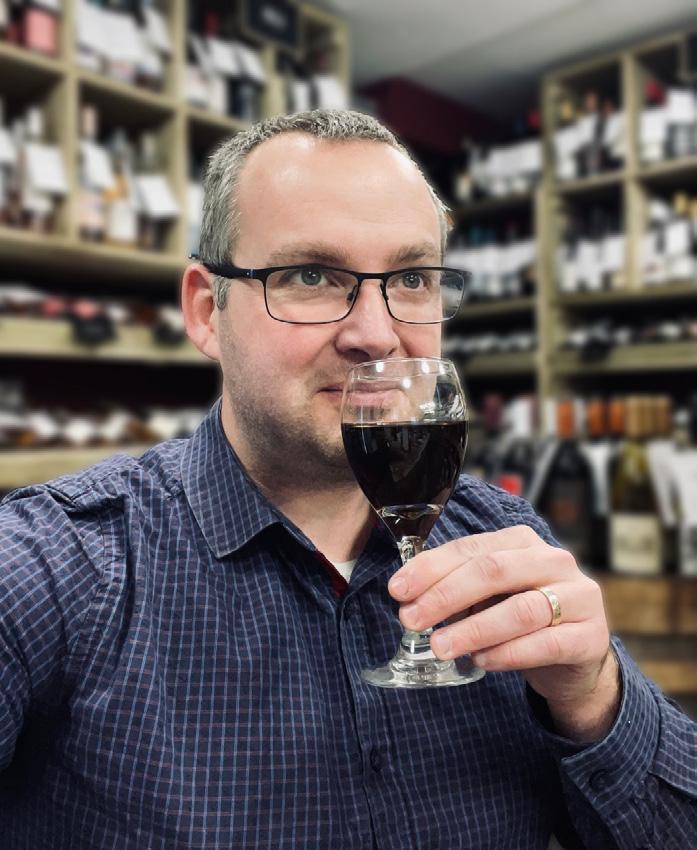
Jamie Lymer
“A generic parcel company lost 72 cases of our wine”
Jamie Lymer
Givino
Frome, Somerset
“We’re fairly new to the game. The company has been going for just over a year now. It was a principle that we decided on straight away to get unique content into the shop. Obviously the way to do that is to import directly yourself.
“We specialise as much as we can in Spanish and Portuguese wines. I did try initially to do it all myself, and it was an absolute failure. We’ve been using a handling company and it’s been fantastic. We did try to use a more generic parcel company that begins with F. Don’t, is all I would say. It’s an absolute nightmare. They managed to lose 72 cases of wine, which they still haven’t found. It’s somewhere in Barcelona, last I heard.
“I’d say we import 38% to 40% of our wines and we intend to increase that. We’re building more shelves in the shop at the moment, because we’ve got two pallets on the way from Spain and Portugal.
“Obviously, at the beginning there were things I didn't know. I wasn’t aware that we have to pay duty and VAT and everything upfront. So there have been a few short, sharp shocks, but once you build that into your business model, it’s easier to plan ahead for future orders.
“It’s been a very steep learning curve in a very short amount of time. But once you’ve done it a few times, you start to get the idea of how it works.
“We get wine delivered straight into the warehouse. We’ve got quite a good turnover rate, because we do wholesale as well. We do shift the products through quite quickly. Shipping to bond is something we’re looking at and we’ve just applied for the duty deferment scheme.
“We went to the London Wine Fair last year and started talking to a couple of Portuguese producers, and we’re importing their stuff now. We’re off to Portugal in a couple of weeks’ time to visit some vineyards that we’ve done some research on that aren’t in the UK at the moment, and we’ll start a conversation if their wines are up to scratch.”
My family doesn’t come from the wine business. My father had a company which made chairs and every day after work he went to Ronchi di Manzano because there was a frasca [an informal meeting place for agricultural workers]. He fell in love with the place, and with nature, and decided to buy the property. He didn’t know anything about wine or about wineries, and he still had his business to run. So he decided to delegate this new challenge to me. I was 24 years old.
I decided to do some travelling because I have always thought there’s nothing better than accumulating experiences. My biggest inspiration is France. I have been impressed by French simplicity and how they embrace tradition, adapting old buildings as cellars that were once shelters for war refugees. This is something I have tried to bring to Friuli: not constructing a cellar in a shed, but digging into our hills to create a cellar out of natural rocks.
I would describe Friuli as Italian white wine heaven. Friuli is a very special region which is influenced by the sea and the mountains, which are both just one hour away from the hills where our grapes are grown. This area was once covered by the sea, so minerality is definitely the main characteristic that distinguishes the wines from our region. The terroir is made up of a special rock called ponca which contains minerals, ocean marl and sandstone. It looks very strong but as soon as you touch it, it disintegrates. It gives the wines structure as well as minerality.
When I came back from my travels, my first decision was to replant all Ronchi di Manzano vineyards – except the ones planted with Friulano, which are the oldest
Friulano
Our most historic local variety, from our oldest vineyards, the only ones that were not replanted. Friulano is a cousin of Sauvignon and can have a similar aroma. It’s our most mineral and complex white wine, and it can age for 10 years. It has a distinctive bitter almond aftertaste. It pairs well with white meat and hams.
ones we possess. I decided to increase density; in this way each plant produces less quantity, but better-quality fruit as each bunch can access more nutritive elements. My business philosophy has always matched that of my family: quality rather than quantity.
In my time in the winery, I have continued to innovate every year. The wine business may be very traditional but it is actually a sector where innovation can happen on a daily basis. This mainly involves cellar technologies, starting from the choice of barriques, tonneaux, big wood barrels and inox tanks to more specific tools such as new filters and pumps.
Art comes more naturally to me than science. The winery has several pieces of art that have been created by a local artist. The image and logo of the winery is based on one of them. The “grape woman”, which was created to depict me, is a statue of a woman that has a bunch of grapes instead of legs. This piece of art has always had an emotional impact on me, even though I see it every day. In 2015, when the branding of the winery was redesigned, I decided to adopt this artwork. For me it’s very important to represent the female-run winery in everything I do.
My daughters joining the business is something I had been waiting for since I was pregnant. When I started out, it was very difficult to elevate myself in a male-dominated sector. It has been a constant fight, and I have felt lonely many times. When I knew I was expecting two daughters, this gave me huge strength and I have always imagined the three of us running the business. As a working mum, I could say my daughters were born in the
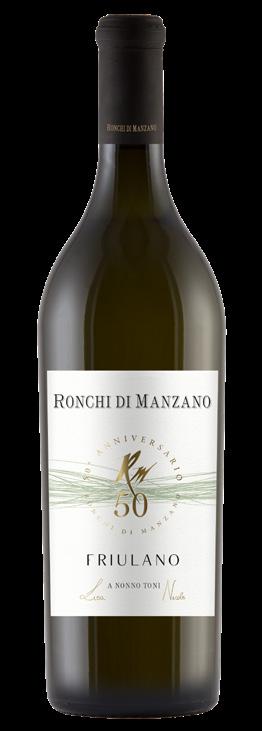
Pinot Grigio
Our flagship wine. It’s very elegant and refined, with an aromatic character that is well balanced by minerality. Soft and fresh, it’s a versatile wine, which can be enjoyed as an aperitif but it also has the structure to pair with fish, vegetables and fresh cheeses.

Roberta has owned and run the Ronchi di Manzano winery in Friuli since 1969, but the vineyards have existed for centuries and are considered to be some of the best in the region. Her two daughters, Lisa and Nicole, joined her a decade ago.
Importer: Vinicon
cellar. I have always brought them with me, to the vineyards, winery and fairs too. Since they were very little, I’ve introduced them to the work; I encouraged them to learn English. They’ve been working with me for 10 years and they have so many ideas and so much enthusiasm. I listen to them, and I make them try everything, even if I know it is an error, because I think they must make mistakes and learn from them.

Pinot Grigio Ramato
This goes back to old traditions. It’s macerated on the skins for 36 hours which gives it its copper colour and completely different characteristics. It has more floral aromas, but still very good minerality, and a more complex taste. You can almost feel the tannins from the skins.

The independent wine community is still reeling at the news of the launch of the Wine Merchant crossword.
Yes – we gave in, in the end. Well done.
Take a photo of your completed grid and send it to claire@winemerchantmag.com. The first correct entry drawn out of the fedora will win a bottle of Ver Sacrum Monastrell, courtesy of the nice people at Ucopia Wines.

Ver Sacrum is one of the quirkiest wine producers in Mendoza and here’s what Ucopia boss Laurie Webster at Ucopia has to say about this month’s prize.
“This is simply one of the prettiest red wines we have ever tasted, with swathes of tantalising red fruits throughout the tasting experience, bags of crunchy red apple skin character and staggering length. It completely flies in the face of what most people would expect from Argentina – a joy to taste and drink.”
Laurie isn’t prone to exaggeration, so this is definitely a prize worth winning. Who knows – maybe soon you’ll be a Ver Sacrum evangelist yourself.
Answers to questions on page 4 1.
March winner
Congratulations to Jim Cope of Vino in Bruton Street, Edinburgh, who is the winner of the first-ever Wine Merchant crossword.
In addition to the immortality that this bestows, he also wins a bottle of Oliver Zeter Pinot Noir Reserve, courtesy of our friends at Delibo Wine Agencies.
Solution to Crossword No 1

Nestled in the Corbières-Fenouillèdes park, Raphaël’s 8ha of biodynamic vines produce results that justify his midlife decision to embark on a change of career
Importer: Jascots
Raphaël Colin grew up in “the privileged environment of the Pyrénées-Orientales, between the sea and the mountains”. Although his family were not in the wine business, they traded in fruit, vegetables and olive oil, and as a youngster he was exposed “to the pleasures of eating and drinking well”.
After 14 years living and working in Marseille, Raphaël felt the lure of his Catalan homeland and, at the age of 35, reimagined himself as a winemaker. At the end of 2018, during a visit to a vineyard in the Agly Valley at the foot of Corbières, he took the plunge and adopted eight hectares of vines, which he farms organically and biodynamically.
It is, he says, “a setting of pure nature”. He adds: “We are at an altitude of 400m, but located in a circle formed by much higher mountain ranges.” The freshness this provides blends perfectly with the hot southern French sunshine.
The Corbières-Fenouillèdes park which encompasses the vineyard provides a
Domaine Blanc Plume
Sporange 2021
RRP £22
100% Sauvignon Blanc. A skin-contact Sauvignon Blanc with bright fruit flavours of young green asparagus, baked apple, blood orange, apricot skin and lemon zest.
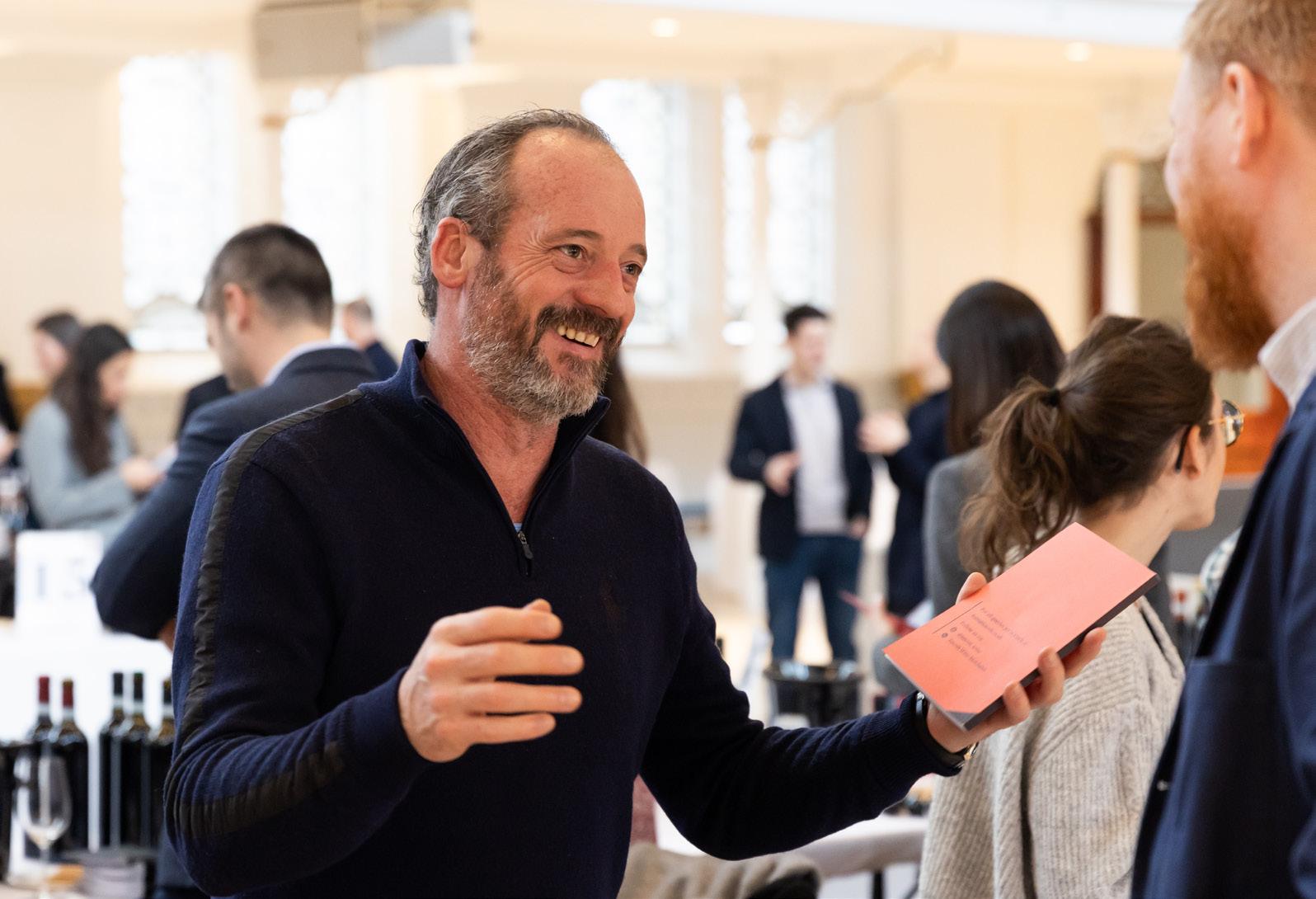
terroir “rich in in hedges, green landscape, woods, forest, wild animals – a diverse fauna and flora with which we must learn to cohabit, that we need to protect,” Raphaël says.
“We benefit from a working environment that is as magnificent as it is restrictive. The winters are very harsh, the summers are very hot and dry, and the north wind, the Tramontana, does not make it easy to work outdoors. Not to mention the wild boars that ogle our grapes and the birds that also take their share of the loot before the harvest.”
Domaine Blanc Plume has various soils and microclimates. On the foothills of the Corbières massif, on calcareous soils, the plots have high humidity. “The atmosphere is almost oceanic,” Raphael says. These conditions suit Chardonnay, Sauvignon Blanc and Merlot perfectly.
Further east, the soils are brown schist, and plots are warmer. Red wines thrive here as the stones slowly release the sun’s heat during the night.

Domaine Blanc Plume Rouge
Beton 2019
RRP £32.60
30% Syrah, 30% Merlot, 20% Carignan, 20% Grenache Noir. An intense nose of cinnamon, baking spices, morello cherry and garrigue with a velvety palate of supple tannins.

“But no two years are the same,” Raphaël says. “The climate is becoming more and more changeable. I am currently preparing my sixth harvest. After experiencing frost, hail, drought and high humidity which activates mildew, each vintage has its share of surprises in store for us. It’s up to us to know how to remain humble, to know how to adapt.”
He’s a devotee of concrete eggs for fermentation and ageing, appreciating their micro-oxgenating effect. “Red wines are silkier, white wines more fluid in the mouth,” he says. “They seem lighter, very airy, and express the minerality of my soils.”
For Raphaël, the tenets of biodynamics are “obvious”. He says: “Viticulture must be respectful, organic and biodynamic to allow for the most natural winemaking possible. The lunar calendar is there to help me choose my activities. This is also what biodynamics is all about: not imposing oneself on nature. It’s all about adaptation, observation, reflection, resilience.”
Domaine Blanc Plume Rouge
GR-36 2020
RRP £19.80
63% Syrah, 37% Merlot. A full-bodied inky red with dark flavours of wild blackberries and blackcurrant jam followed by hints of garrigue, crushed gravel, Catalan charcuterie and aromatic clove.
A Marlborough vineyard


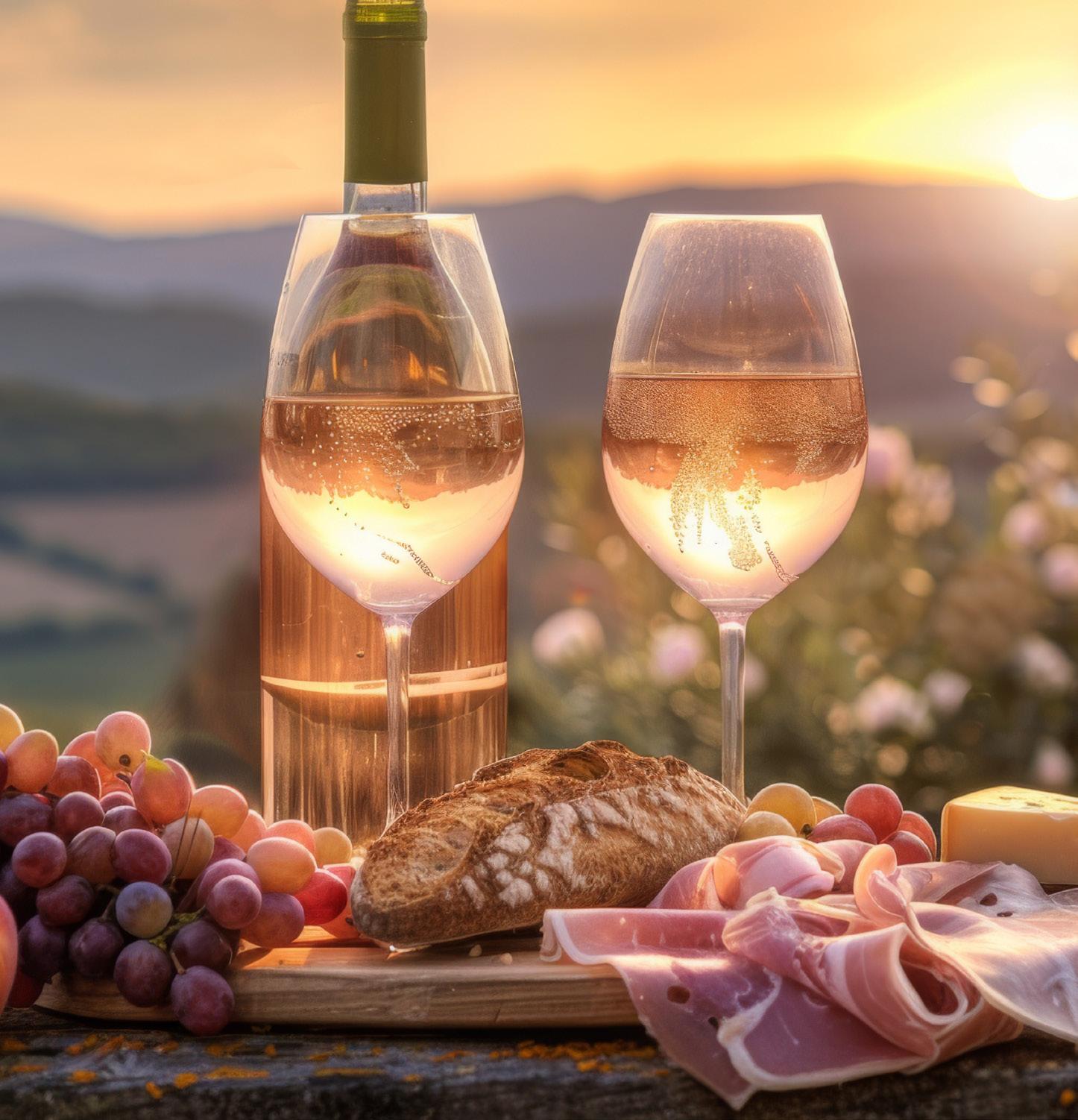
Four independent merchants tell us how rosé sales are doing in their businesses
e do have customers who will buy rosé all through the year but in terms of sales volume it is very seasonal. We sell a lot of rosé when we get a nice spring and a good hot summer.
The paler Provence style is the most popular but we do have a couple of deeper coloured ones that we force upon people! Seriously, it takes a bit of persuasion to get them to try anything with colour. There’s one or two that we really rate but they are definitely a hand-sell. We have a great Spanish one that we’ve been doing for a couple of years, Llumí Rosat Rosé from Celler Alimara. It’s a fabulous wine. It’s a hand-sell but people come back for it.
Rosé is a little bit like Champagne in that it’s still very brand-focused. People come in and want Whispering Angel, they want that logo. They like to take pictures of it for Instagram: the sun shining, the pale rosé.
We stocked Whispering Angel in the past but I just find that you’re always going to struggle making a margin on it and you’re not going to get any loyalty, as people will just buy it when they’re in Waitrose and probably get it a bit cheaper.
It’s an easy thing to stock it, but a bit lazy. It’s important to have other options that people can get behind – that’s the key. There’s plenty of stuff out there but you have to get the balance right. I find it still needs to be a good-looking product.
Summer is definitely the big push for rosé, but we sell it throughout the year. It’s definitely a growing category.
We had a big Mother’s Day display, and that was particularly popular for us. We always have a rosé on the Enomatic and in the summer we’ll have two.
At the moment we’ve got about 12 to 15 rosés on the shelf and that might go up to 24 in the summer.
We have a Portuguese rosé and a Spanish rosé but I would say probably 99 out of 100 rosés we sell are French. We’ve got some Languedoc stuff but most of it is Provence.
The Miraflors that we get from Walker & Wodehouse comes in a frosted bottle with a Vinolok on top, and it’s the bottle that sells it as opposed to the locale. The other couple of Pays d’Oc ones we have to really push because people naturally seem to go for Provence.
We’ve tried with Australian rosé, Sancerre rosé and Rhône rosé but they really don’t move. It’s a real hard slog to try to push anything other than Provence.
It’s that pale style people want. So if you’ve got a Tavel rosé, which is that much deeper pink, people won’t pick it up. Even though it’s dry rosé and it’s perfectly good, people just don’t want to know. We cater to our customers’ tastes, I guess.
Because we’ve got the bar element, I can say that although we definitely have men who will have a glass of rosé, there’s definitely more women who drink it. I can’t give you an accurate figure but probably 85% of those drinking rosé in our bar are women.
Where we struggle with rosé is with Champagne. Crémant rosé will sell, Cava Rosado will sell, but not rosé Champagne. I think that’s primarily down to price. We’ve got Laurent-Perrier rosé on at around £75 and Bollinger rosé is probably not too far off that, maybe £65, so it just becomes very expensive.
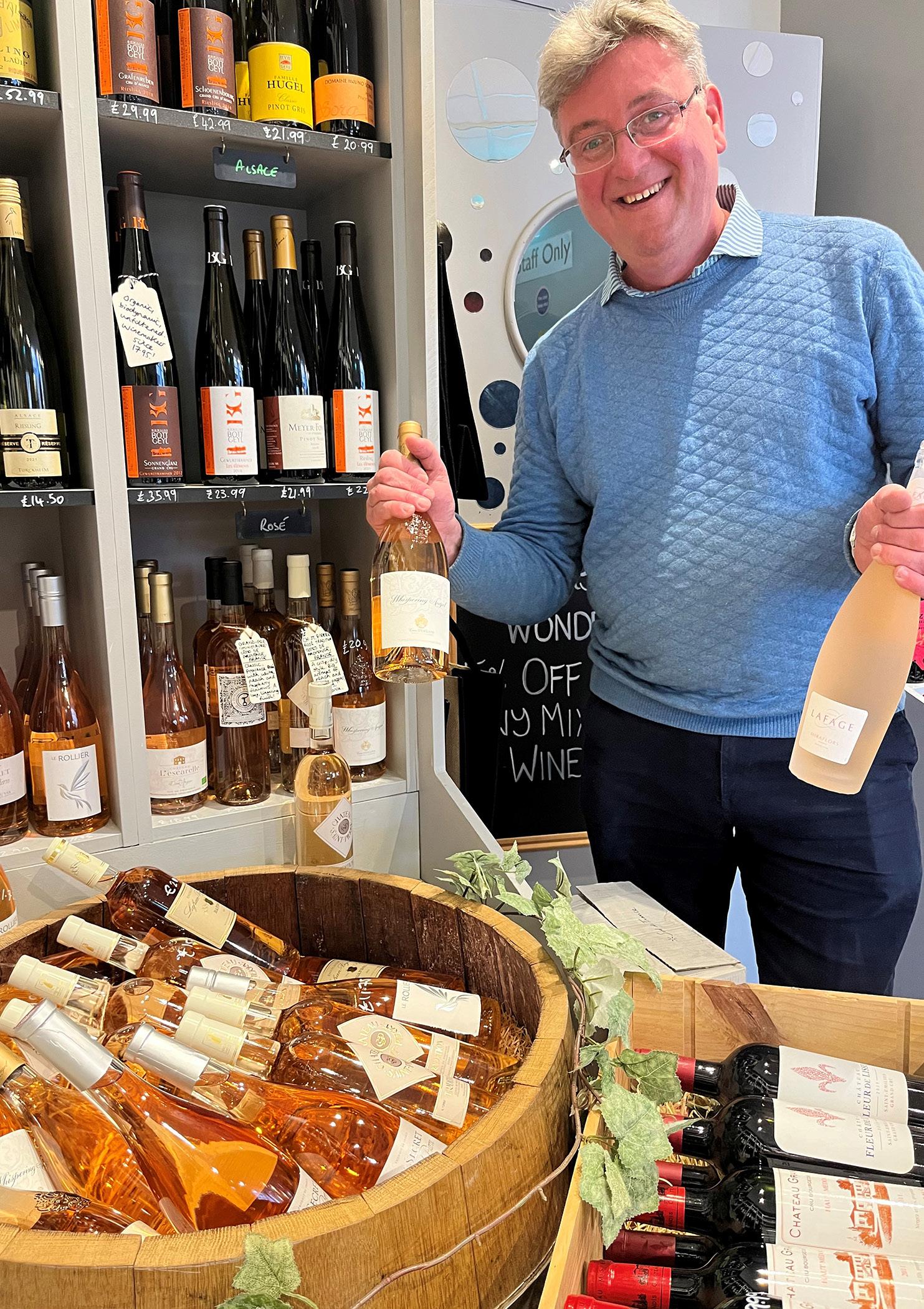
It’s that pale style people want. If you’ve got a Tavel rosé, they won’t pick it up “
We definitely see seasonal swings in terms of sales, so during the colder months we probably reduce rosé to about three or four lines out of 100, and then as it starts to hot up we have about seven or eight different rosés. We normally have two rosés on by the glass as well.
We have our pale-and-dry category, which is a people pleaser and one we know that everyone likes to drink. But I really like to push fuller, bolder styles
of rosé as I think it’s also such a fantastic opportunity for wine pairings. As you go up the colour spectrum, you’re getting much more flavour and can pair with some spicier dishes.
If you have a bottle of rosé it also works really well across a meal. it straddles both fish and meat dishes quite nicely.
The rosé category on the whole is not looked at very seriously, but I think it’s a very serious wine and it’s important to show some variety and reassure
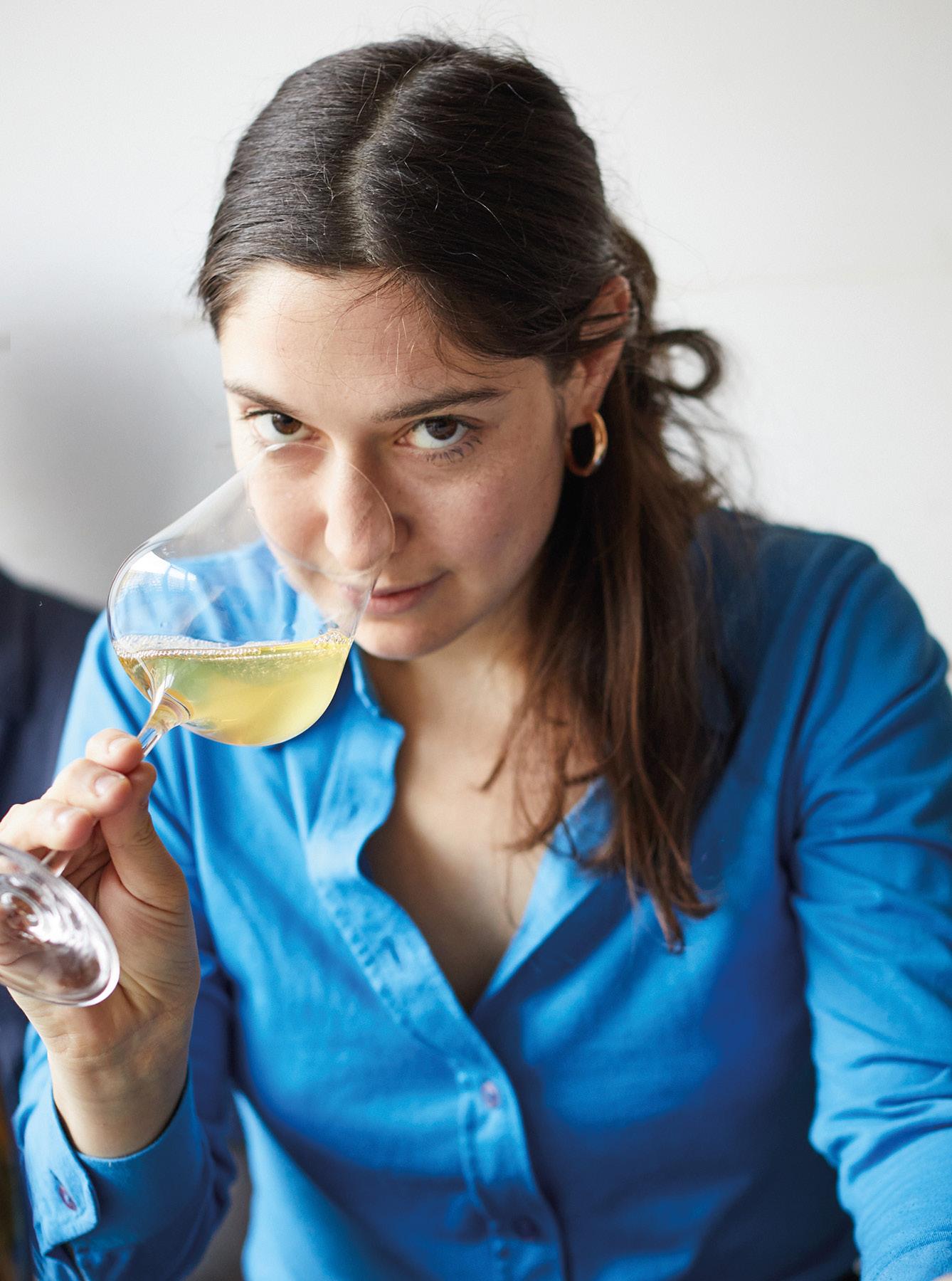
people that those darker styles might not necessarily be sweet.
Rosé can also be part of the trend for chilled reds. It’s great if someone wants a lighter red: have they considered that a darker style of rosé might achieve the same thing?
For a darker rosé, I really love the Vini Rabasco Cancelli Rosato. It’s a Montepulciano and definitely a fuller style, almost with some tannins, and it works really nicely with all fish dishes.
On the lighter side of the spectrum I really like the Can Sumoi La Rosa, which is from Pepe Raventós’s still winemaking project in Penedès. It has a really delicate herbaceous character in the background. It still fits into that pale-and-dry category, but I think it has a little bit more intrigue than something from Provence that people might be used to.
If you look back 10 years or so, it was a very female-dominated category, but I think by approaching it as a light red wine, we’ve managed to get a lot more guys on board.
We’ve got a rosé tasting booked in so we can introduce people to the different styles. As I’ve been talking to customers about the tasting, I think the general feedback is that they think the darker the rosé, the sweeter it will be. I think it’s a category where people are scared to try new things.
People want the pale southern French rosé, not necessarily from Provence, but they definitely don’t want dark. We have Minuty, and people really love it.
For our tasting we’ll have some sparkling in there and hopefully an English rosé, one from Abruzzo … just ones from all over so we can show off the different styles and flavour profiles.
Aline Gutowski released her first vintage in 2016. Her aim is to make wines which reflect the very best of Provence using old vines in some of the most treasured terroirs across the appellation.
Importer: Top Selection
Aline Gutowski was born and raised in Provence, but her winemaking only began after a career in banking and the birth of her children.
“I decided to return to my roots and challenge the notion, at that time, that rosé wasn’t a ‘real’ wine,” she says.
And so Maison Gutowski was born, crafting rosés that are now at home on the menus of fine-dining restaurants the world over. But the story began in the dirt.
Fascinated by the “mosaic of soils available to me” around the Massif des Maures, Aline focused on plot selection, meticulously seeking out the optimal combination of grape varieties and soils.
Broadly speaking, schist brings minerality and a graphite note, while limestone contributes acidity. The palette of grape varieties includes Grenache, Syrah, Cinsault and Rolle.
The aim was to create a boutique winery that respects local tradition, but at the same time seeks to refine it. It was also to offer a credible and authentic alternative to big-volume and heavily marketed Provencal rosés.
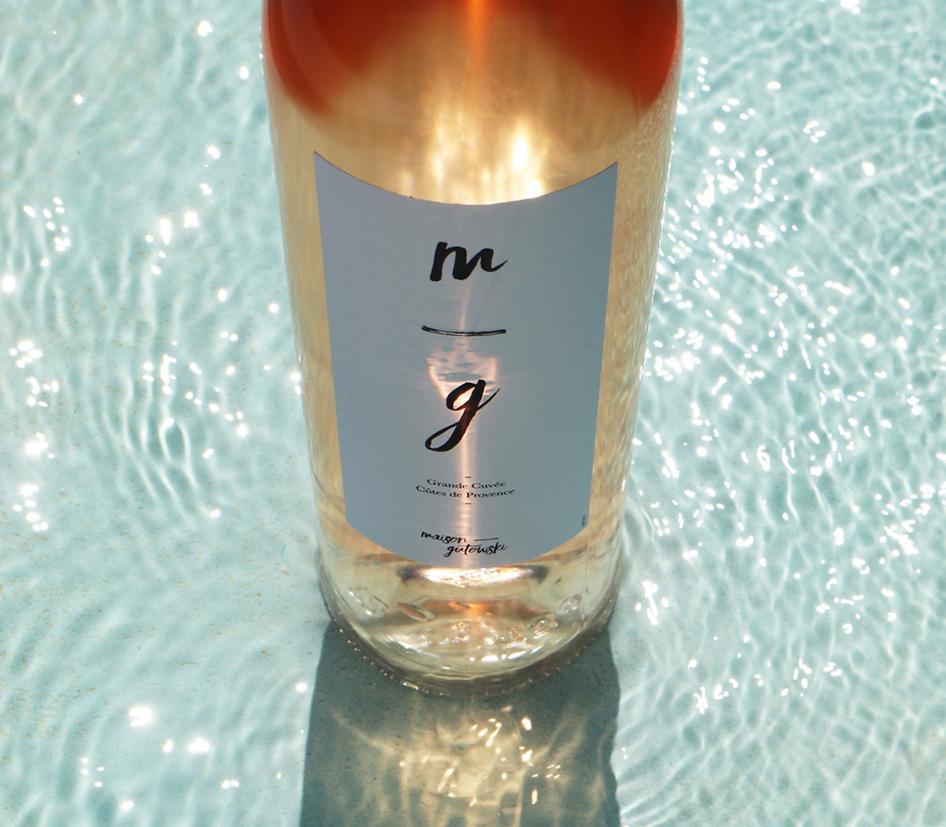
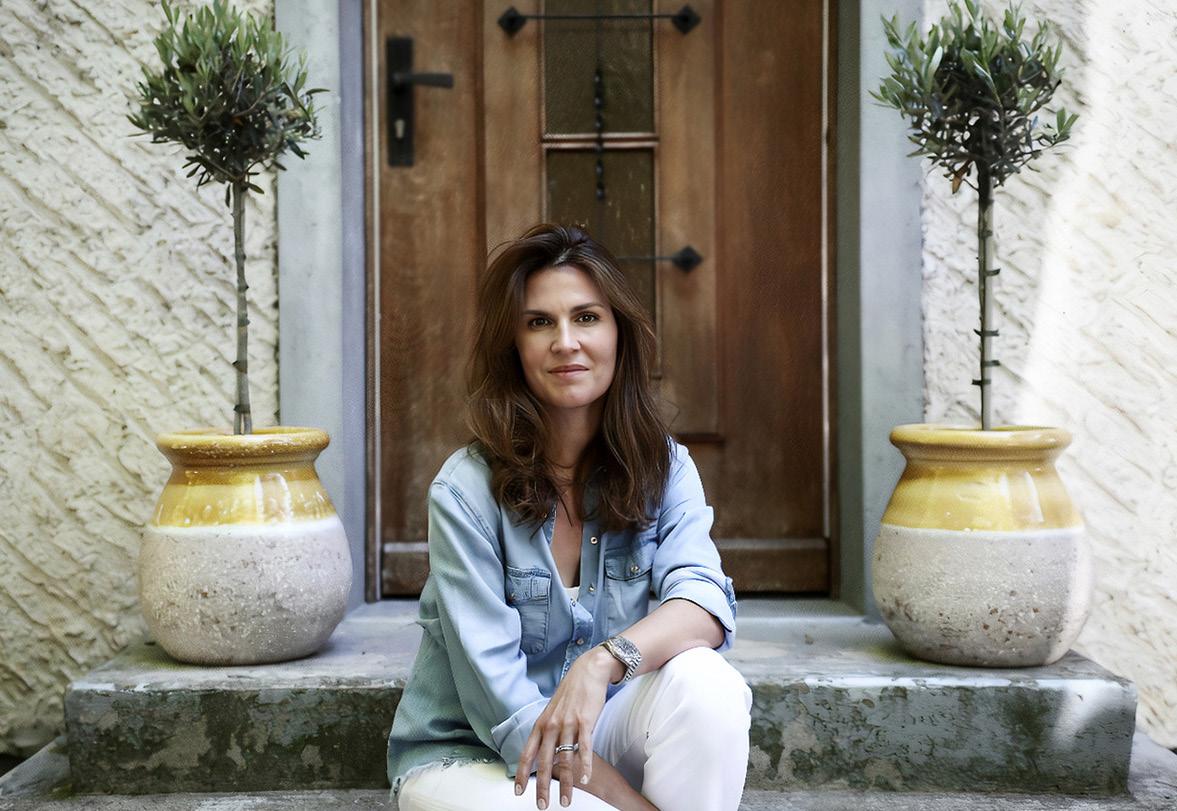
“I was drawn to rosé for its freshness,” Aline says. “My challenge was to infuse more character and complexity while preserving that coveted Provencal freshness craved by rosé enthusiasts.
“We spent our first three years trying to achieve what was for me the perfect balance: an enticing floral nose, a delicate texture featuring white fruit aromas on the palate, a crisp acidity, and a long finish with subtle complexity.”
This goal was achieved with precise vinification techniques, including careful temperature control during fermentation. “Additionally, we’ve extended lees ageing compared to traditional methods, though we refrain from over-stripping the lees to avoid a flabby character,” she says. “This approach allows each grape to contribute its own subtle intensity to our wines.”
Mindful of pressure on the water supply due to reduced rainfall – and the fact that sudden downpours can erode the soil – Maison Gutowski has reduced tillage and allows grass to establish a vegetative cover.
Aline explains: “It aerates the soil, captures carbon, retains humidity in the summer, and transforms into natural fertiliser when the soil is tilled. It also enhances soil aeration, allowing water to infiltrate for better absorption rather than run off.”
The house style is recognisable even if vintage conditions vary. “If there are significant natural variations in certain years, we strive to smooth out the vintage effect by working on the blend,” says Aline. “This way, our wines remain true to their profile.
“For this vintage, there was greater temperature variation between hot days and cooler nights. As a result, there is a higher fruit aroma compared to the previous year, which is a very good thing.
“The blending adds more depth to the wines. I like the idea that each element – terroir, agriculture, variety, weather, vinification – can contribute to the wine. It’s up to us to craft it precisely so that these notes remain subtle and our blend stays true to its taste year after year. That’s why our customers remain loyal to us.”
An IGP Mediterranean where some plots are based at a slight altitude (400m) on a clay-limestone soil, particularly rich for the vine. It has a very flattering nose with intense aromas of yellow fruit (peach, apricot) and citrus. A light and dynamic rosé, with little touch of sweetness.
It's our flagship cuvée, the one where it all began. With a majority of Grenache, as well as Cinsault, Syrah and Rolle, you will find a complex and elegant bouquet with floral aromas mixed with notes of vine peach. Silky mouth feel with a smooth texture and red berry aromas accompanied by a beautiful minerality and a long and delicate finish.
The wine is organic, and the parcels are cultivated using biodynamic methods. Made from old vines, with a large majority of Grenache, but also Cinsault and 10% Rolle, you will find an expressive floral bouquet mixed with notes of white fruits and herbs of Provence. Delicate work with the lees brings more complexity to this wine, with a hint of saltiness. Perfect with food.
As the wine world’s attention swings towards the annual big reveal of Bordeaux’s latest en primeur campaign, David Williams looks at what we can expect from soon-to-be-launched 2023 wines from across France, as well as picking out some of the best recent vintages worth stocking in 2024

Much of the coverage of Bordeaux’s 2022 vintage marvelled at the supposed disconnect between the freshness and quality of the wines and the infernal heat that marked so much of the growing season.
The vintage has already acquired a reputation as a 21st-century great to challenge such classics as 2010 and 2016 (and, in the more hyperbolic assessments, such legendary claret years as 1961 and 1990). Despite being a relatively small crop (which is no bad thing for holding prices and avoiding oversupply at the lower end), the quality was generously distributed across the sub-regions and price points.
With the en primeur hype machine just beginning to whirr into action as The Wine Merchant went to press, it was too early to say whether 2023 will match 2022 for quality (although, as ever, much of the talk coming out of the region so far has been largely upbeat).
What is clear, however, is that volumes are down, with the culprits this time being late-spring frost; hail; rampant mildew after above-average temperatures were followed by heavy rain in spring (Merlot was particularly affected); and extreme summer drought, which led some areas (Pessac-Léognan, Pomerol and St-Emilion among them) to take the unprecedented step of permitting irrigation in mid-August.
While we wait for the 2023s to emerge, the 2022 reds are beginning to appear in the market, meaning buyers now have the choice between the generosity of the 22s and the more classically proportioned products of the cool 2021 – a vintage described by many commentators as a nostalgic throwback to pre-climate crisis times, and which also included some excellent whites.
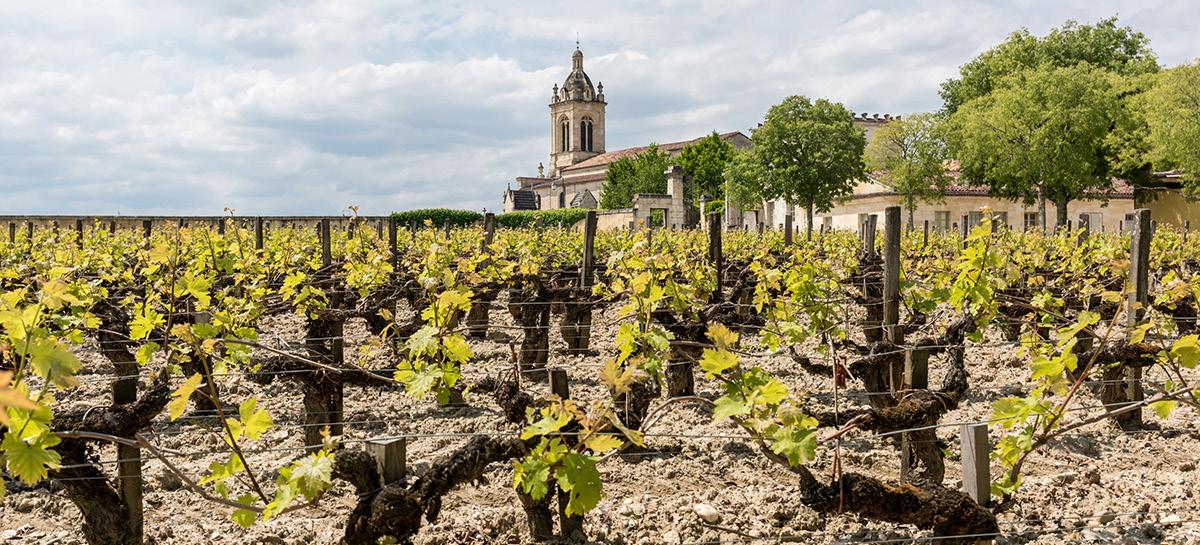
The 2022 vintage unveiled in January in the UK was very much a success for Burgundy: a return to abundance, and abundant quality, after an extremely tricky 2021 of widespread frost – and the challenges of coulure, mildew, oidium, and botrytis – brought enormous variations in the style and quality of the wines, which were made in tiny quantities.
2023 was another year of high volume, with the French Ministry of Agriculture reporting a jump of around 8% in production in Burgundy and Beaujolais (which, for official French statistical purposes, are generally rolled into one).
But it seems unlikely that the wines will have quite the rapturous reception afforded to their predecessors, with the Pinots in particular struggling with the extreme spikes into the high 30s°C during the summer.

Chardonnay, however, seems to have thrived, and the ample volume points to bargains in reliably better-value sites such as Mâconnais, Hautes-Côtes de Beaune (has a single French region benefited more from rising temperatures?), and, for Gamay naturally, the Beaujolais crus.

Growers are happy to play it cool

The idea of what constitutes a good vintage – or rather, which type of vintage conditions are considered by growers to be the most conducive to making great wines – is changing all over the world.
Certainly, in traditionally cooler climes such as Champagne, there’s no longer the straightforward equivalence between “good” and “sunny and warm”. These days a good year, at least for those who crave the fine acidity – the nerve and verve – that is such a defining characteristic of the world’s best sparkling wines™, is as likely to equate “good” with a “mild” or “cool”, if not wet, growing season.
When looking back over the past decade in the region, for example, many growers have started to talk fondly of 2013 – an exceptionally cool year which failed to garner that much attention when many of the vintage wines were released, but which is increasingly viewed as a potential long-term great for lovers of classically styled Champagne.
Indeed, many in the region believe its wines will outlast those produced in 2012, the universally admired, and generally highest-rated vintage of the 2010s (and, along with 2008 and 2002, one of a trio at the top of the 21st-century hierarchy).
As for more recent widely available vintages, classicists may well prefer the cooleryear nerve of the 2014s over the riper 2015s, while the warm, generous 2016 and 2018 very much have the edge over the rainy and rot-ridden 2017. And while the 2023 vintage wines will not be appearing for some time yet, it looks like a year in which producers struggled once again with rot after a cool, wet August.
Extreme, highly variable, and patchy are the words I’ve heard used most by growers and suppliers about the 2023 vintage in the Loire.
The problem, unlike the drastically reduced, frost- and hail-ravaged 2021 for example, wasn’t quantity. It’s more a matter of quality: unlike the ample and widely hailed 2022, 2023 is highly variable from sub-region to sub-region and grower to grower, with the Chenin Blanc and Cabernet Franc heartland around Anjou, Saumur and Touraine particularly suffering from the extremely damp second half of the growing season, which brought widespread mildew and called for regular treatments and careful selection at harvest. These issues were much less pronounced for the Sauvignon Blancs of the Central Loire (Sancerre, Pouilly-Fumé et al), which had a drier July and August, and in Muscadet, where the earlier-picked Melon reached ripeness in an early-September bout of hot weather before heavy rains kicked in.

Muchof the discussion of the most recent Rhône vintages is an echo of what’s being said by growers on the opposite side of France.
As in Bordeaux, 2022 in the Rhône was a head-scratching affair, in which soaring temperatures that reminded many growers of the famously hot 2003 somehow produced wines that are marked by freshness and moderation rather than the excessive (and excessively dry) tannin, alcohol and jammy flavours that made the 2003 wines such a trial.
According to growers in the region, the difference with the 2022s (which had their en primeur release earlier this year) can be explained by three factors. First, producers have learned how to make more balanced wines in extreme heat, with most (though not all: there is still many a porty 16.5% abv headbanger to be found in the southern Rhône) reining in the extraction and bringing forward their picking times.
Second, and no less important, the vines themselves have simply adapted to the hotter conditions. And finally, growers in the south are adapting their blends, with sun-loving Mediterranean varieties such as Grenache and Mourvèdre taking a greater share, as well as Cinsault for acidity, at the expense in many cases of Syrah.
The 2022 vintage has brought some seriously good value, sumptuous but balanced Côtes du Rhône and CdR Villages reds – not to mention some bargain fine wines – onto the market.
As for the 2023s, there’s an element of wait and see, and the local generic body, Inter Rhône, is talking in optimistic terms of both quality and quantity. However, without the winter rainfalls that most growers believe played such a key part in maintaining the freshness of the 2022 wines, drought and water stress, as well as similar heat spikes to 2022, made this an exceptionally difficult year, filled with what leading producer
It turned out to be a bumper year for Alsace, up on the similarly ample 2022 after a small, challenging, cool, wet 2021, despite some issues with powdery mildew. The quality of the 2023s look likely to be on a par with the 2022s across the region’s varied varietal palate, although it remains to be seen if the wines will match 2019, which is widely regarded as the best of Alsace’s vintages since the run of fine, ripe years at the end of the 2000s.
The Jura had an even bigger boost than Alsace: the harvest was up by a remarkable 35% on 2022, according to the French Ministry of Agriculture, and by an even more remarkable 64% up on its five-year average, with growers reporting abundant quality in red and white. Further south, Savoie was reportedly saved by September rains rehydrating the grapes after a tough year which featured late-spring frost, widespread hail and July and August


According to the International Organisation of Vine & Wine, the global 2023 harvest was the lowest in 60 years.
Languedoc-Roussillon – the largest region in the world’s largest producing country – played a significant part in that reduction, with a 15% drop in its annual production versus the five-year average.
The problem, as it was across southern Europe, was one of drought and waterstress, most notably in the south of the region. With berries already small after a
long dry growing season (and winter), the arrival of a heatwave in late August meant many bunches dried out completely.
While some in the region have talked up the beneficial effects of such a dramatic fall in output in a region that has long struggled with issues of over-production, most are, like their peers in the Rhône, thinking hard about the grape varieties and clones that have the long-term potential to survive in a future of extreme heat and drought punctuated with unpredictable hail and late frosts.
Elsewhere across the south, Provence looked to have weathered the drought in terms of quantity, with production roughly on a par with its five-year average – although producers in the region have found both 2022 and 2023 a challenge when it comes to maintaining the freshness essential to its signature rosés. Much of the south west (Cahors, Madiran, Gaillac, IGP Gascogne …), meanwhile, endured the same set of problems as Bordeaux, with mildew particularly problematic and leading to widespread reductions in yield.
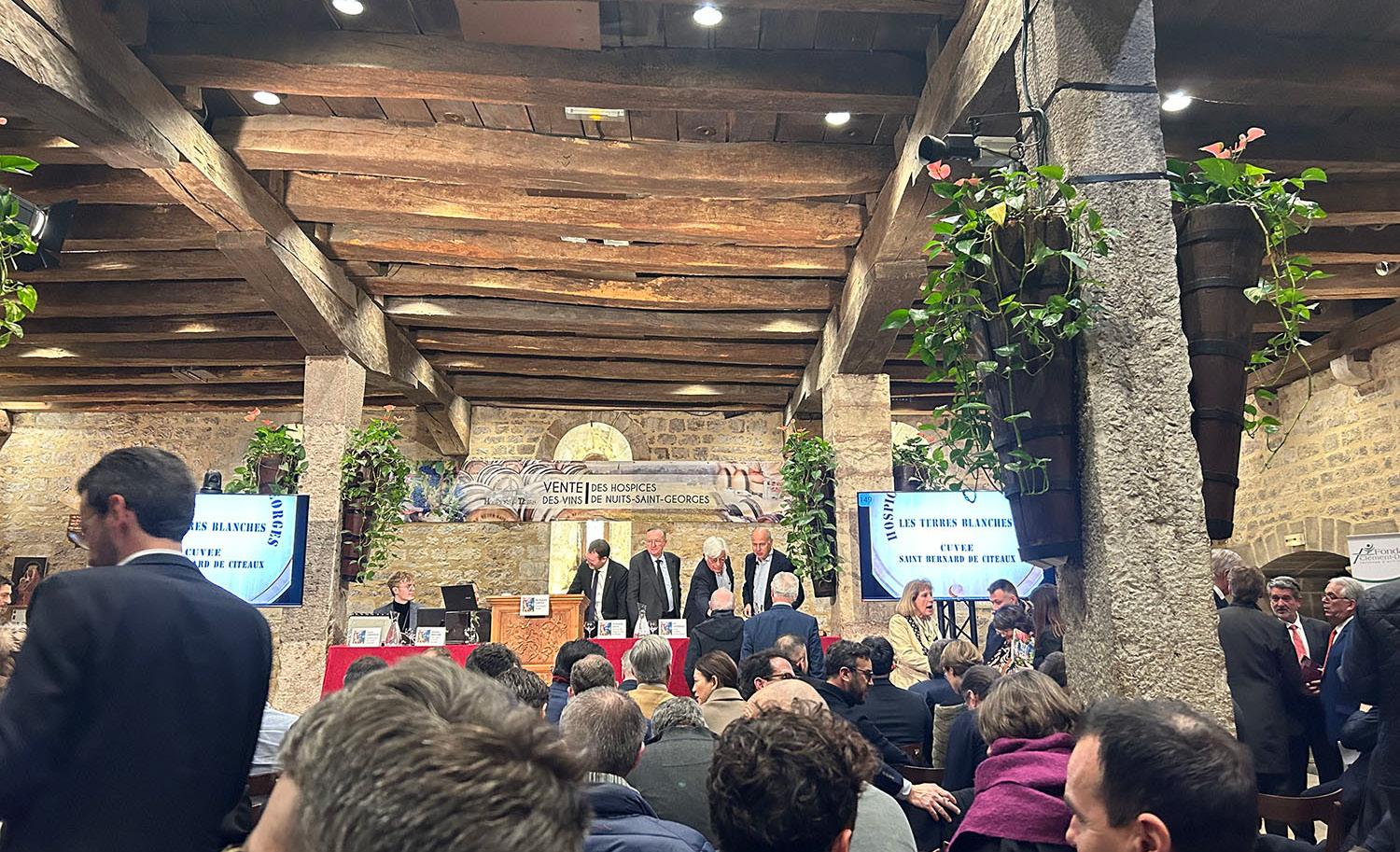
The 63rd edition of the Hospices de Nuits-Saint-Georges Wine Auction took place last month at the Château du Clos de Vougeot, Burgundy.
Founded in 1270, the hospices own 12.5 hectares of donated vineyards, most of which are in the Nuits-Saint-Georges Premier Cru appellation, and the funds raised from the auction are used to maintain the local hospital.
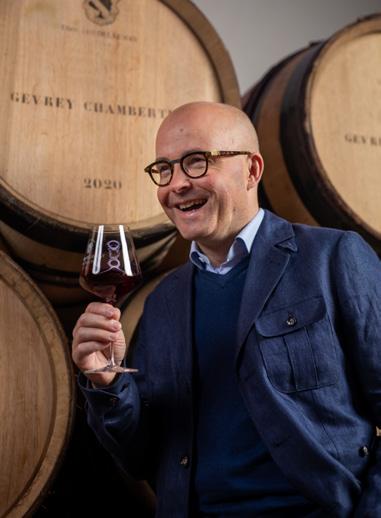
The auction is live streamed to make it accessible to a wider international audience and,
over the past four years, there has been a growing interest from a more diverse group of buyers.
For those lucky enough to attend in person, the auction, selling a total of 150 pièces across 19 different cuvées of the 2023 vintage, began as all good charity events should: with lunch.
Dignitaries and benefactors from the local community mingled with potential bidders and trade press, while waiters, weighed down with ornate silverware served an equally impressive lunch.
Speeches were made, followed by a rousing rendition of Le Ban Bourguignon and a (perhaps half serious) caveat that all proceedings should be completed by 4pm in time for the France v Wales Six Nations
• Jean-Marc Moron, technical manager of the estate, describes the 2023 vintage as “exceptional in terms of identity”, adding: “It will delight those in a hurry, and those who have the patience to wait until the wines reach their peak, in 10 or 20 years’ time.”
The 2024 auction had a total sale value of €2,281,500 versus the record €3,603,000 achieved in 2023. The charity barrel fetched a record €68,330 compared to last year’s €64,580.
rugby match that afternoon.
In contrast, the atmosphere was businesslike in the auction room, where we sat with Laurent and Catherine Delaunay of the Delaunay Vins & Domaines group.
The family has a long history with the hospices, as Laurent’s great-grandfather, Edouard Delaunay, was frequently the sole buyer and seller of the Hospices de Nuits wines.
Now Laurent (pictured left) continues the philanthropic work through his support of the auction. He bids for wines for the Delaunay group and on behalf of clients, and ages them in his cellars at Château Charmont. This service allows professional buyers and private collectors to purchase a few bottles en primeur.
• Merchants can buy at future auctions by working with a Burgundy négociant to buy on their behalf.
It is possible to register directly at the auction and buy privately. This also requires the engagement of a négociant. Delaunay will do this for an all-inclusive fee of €4,500 per barrel, which includes ageing the wines for 12 to 18 months as well as bottling and labelling.



Discover Pays d’Oc wines that work for any occasion
Independent merchants find the Languedoc-Roussillon more interesting than any other region of France, according to this year’s Wine Merchant reader survey.
The survey also revealed the importance of finding good wines that sit on the shelf for less than £15. On both these measures, the L’Autantique range from Foncalieu is an attractive proposition for indies.
The name is a play on words – a blend of Autan, the warm wind that helps define weather patterns in the Languedoc, and authentic. These may be uncomplicated wines for everyday drinking, but they are a faithful interpretation of both variety and terroir.
Anne Calas of Foncalieu says: “The range was launched in 2017, for the 50th anniversary of Vignobles Foncalieu. The name reflects the values that our co-operative has cherished since 1967.
“Our wines are true to themselves. When creating these cuvées we wanted to express our pioneering spirit. The L’Autantique range has a fruit-driven profile and it’s made to be accessible for everyone. It’s a no-brainer bottle that can be opened for any occasion.”
Lanchester Wines ships six L’Autantique wines – three reds, two whites and a rosé –and they’ve proved a hit with indies across the UK. All are classified as IGP Pays d’Oc.
Foncalieu is ahead of the game in terms of its environmental credentials. Almost 90% of its vineyards have some form of green accreditation (mainly HVE3, Terra Vitis or organic certification) and all its wines are certified as vegan.
Sustainability is at the top of the Foncalieu agenda and all surplus glass, cardboard, paper, wood and plastic used in the production process is recycled.
Foncalieu is one of France’s most admired co-operatives, run by a collective of 800 growers in the south of France and which has invested in modern winery facilities to produce a broad spectrum of wines.
L’Autantique Cabernet Sauvignon
Dark fruit flavours of blackcurrant (cassis), black cherry, blackberry with notes of green bell pepper, spice, tobacco, wood and vanilla. Well-rounded tannins and a long lingering finish.
L’Autantique Chardonnay
Hints of white button mushroom on the nose with a palate of golden apple, pear and quince. Not overly oaked. This Chardonnay is an explosion of fruity and floral flavours combined with a lovely fleshy feel on the palate.
L’Autantique Merlot
Red fruit aromas alongside floral hints. A palate of dark red fruits infused with a little vanilla. Garnet red colour. The wine rolls out intense, complex flavours of ripe red fruit and spices.
L’Autantique Sauvignon Blanc
Primary flavours are citrus-led with lime and green apple, cut grass and notes of green pepper. A wine with powerful aromas of exotic fruit (lychee and mango) and citrus (lemon and grapefruit).
L’Autantique Syrah
A big-bodied, dry red wine with a deep purple hue. A velvety elegance on the palate which is backed by big fruit and crunchy spice. A charming bouquet of blackcurrant, cherry and lilac. Silky and delicate with a liquorice finish.
L’Autantique Syrah Rosé
A nose of fresh raspberries, white cherries and hibiscus. Notes of red berries, pomegranate, and lemon zest leading to a long, tart finish. A very fruity sensation on the palate.
L'Autantique is exclusively available to the UK trade via Lanchester Wines Visit lanchesterwines.co.uk or call 01207 521234



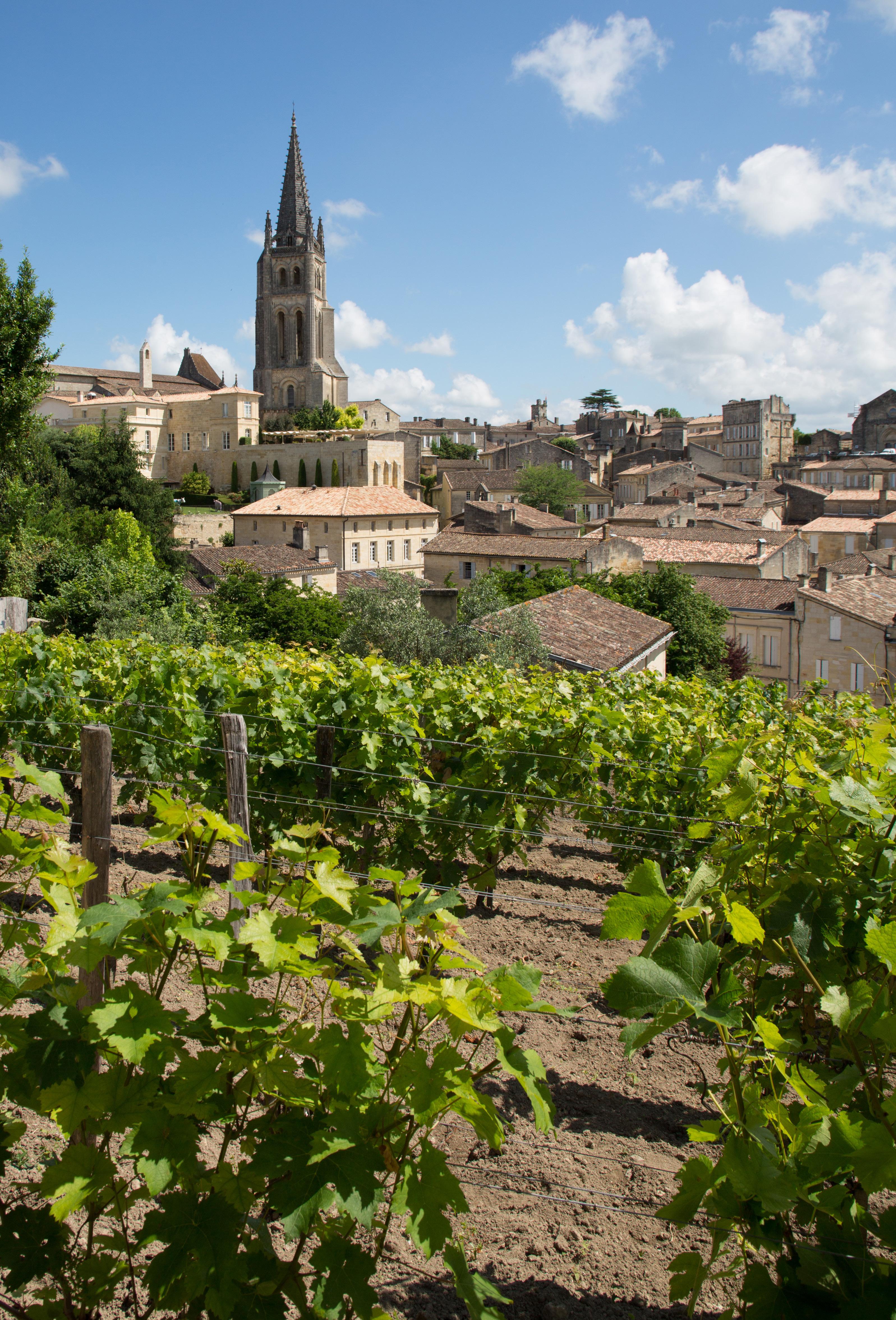 A vineyard in St Emilion
A vineyard in St Emilion
The Languedoc-Roussillon region covers just over 27,000 square kilometres of the south of France of which 3,000 square kilometres are vineyards; approximately three times the vineyards of Bordeaux.
Les Grands Chais de France (GCF) owns 15 properties in the region (accounting for around 10 square kilometres), a third of which are organic.
This privileged position follows the growth of the company started 40 years ago by Joseph Helfrich, who created the group, and today continues to be a story of a family driven by a passion for wine and the terroir.
“This unique position allows us to showcase a collection of wines from one region that is varied enough to be interesting,” says Chris Davies, GCF’s head of on-trade and independents.
GCF’s winemaker for the area, Florence Delabre, has been a winemaker in the south of France since she was 22 and has exceptional insight into the diverse region.
“Founded in the time of the Greek trading posts, this wine-growing area is consolidating its place among the greatest vineyards in the world, presenting exceptionally diverse terroirs, with no fewer than 56 grape varieties,” she says. “Its sunny climate, with its strong Mediterranean influence, gives the wine consistent quality from one vintage to the next.
“The region has built its reputation on the fullness and roundness of its red wines which express themselves differently depending on whether they are planted in schist, limestone, clay, granite or sandstone soils. An extraordinary palette of terroirs! And let’s not forget those chilly, mountainous terroirs, conducive to great white wines for laying down.”
1. Château des Jaume 2020, Languedoc-Roussillon/Maury (£18.95)
2. Domaine Plan de l’Homme Khi 2020, LanguedocRoussillon/Terrasses du Larzac (£18.95)
3. Vignes Centenaires 2021, Languedoc-Roussillon/Fitou (£16.95)
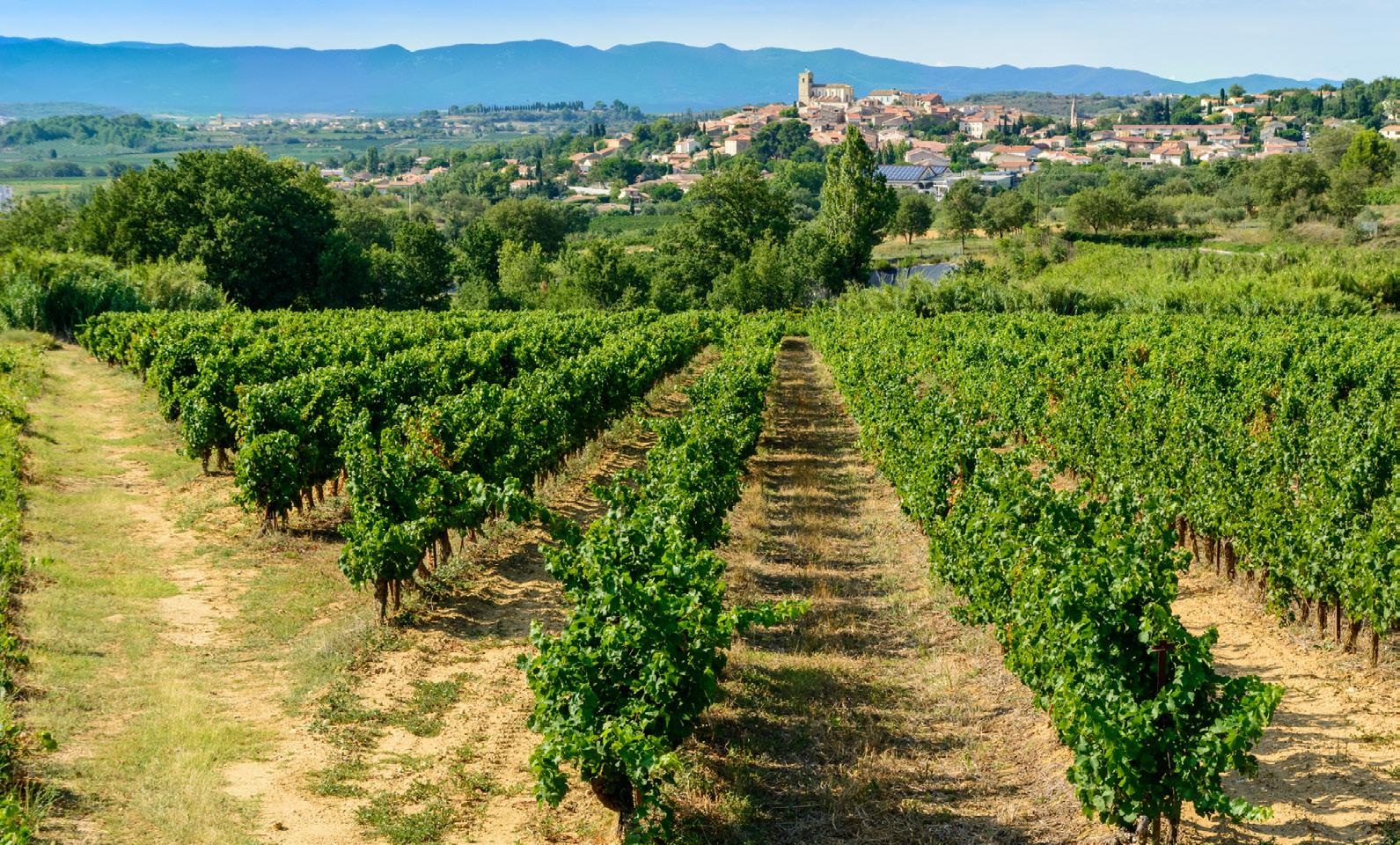
To sample any of the wines from GCF’s extensive range, please contact chris.davies@lgcf.fr
Published in association with Les Grands Chais de France
Style: Citrus and exotic vin orange
Recommended wine: Domine de la Baume Vin Orange Capucine Increased aromatics due to skin contact resulting in a complex nose with beautiful notes of citrus fruits, tangerine and exotic nuances. Pairs perfectly with world cuisine.
Style: Prune and chocolate (served chilled)
Recommended wine: Château de Tholomies Médaille Caisse Bois
Peppery vanilla, sour cherry and prune accompanied by notes of black tapenade and chocolate. Ripe tannins on the palate and notes of roasted coffee. Serve slightly chilled, ideally with roasted meats or stronger cheese.
Style: Almond, butter and vanilla
Recommended wine: Château de la Tuilerie Grenache Roussanne
A beautiful golden yellow colour with brilliant reflections. On the nose a fresh bouquet with hints of acacia, fresh almond, fresh butter and vanilla. Smooth and full in the mouth, finishing with a pleasant woody note.
Style: Fresh pale pink rosé
Recommended wine: Côtes de Thau Cap d’Agde
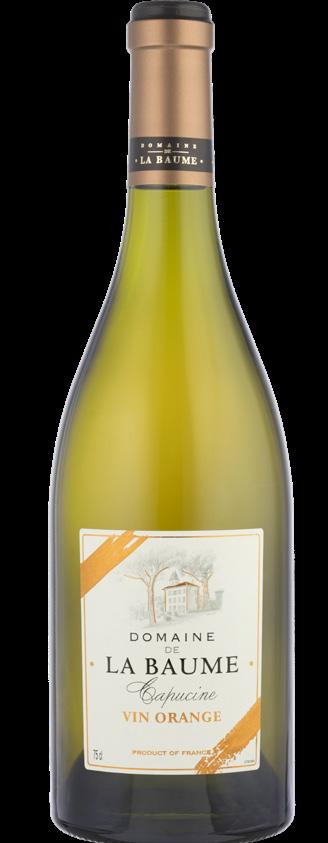
Beautiful pale pink colour. Intense and fresh on the nose with beautiful fruit aromas and pepper. Well-balanced freshness on palate. Excellent for apéritif or with salads.
Style: Herbs and liquorice, biodynamic and vegan
Recommended wine: Château de Tholomies Minervois Bio Vegan Medaille Garnet red, this charming wine reveals blackcurrant, thyme and rosemary aromas finishing on dark chocolate. The palate is full and crisp with a blast of fruit and liquorice.
1. Domaine de Tholomies Chardonnay 2022, Languedoc Roussillon/IGP Pays d’Oc (£13.95)
2. Château Belles Eaux Les Côteaux 2021, Languedoc Roussillon/Languedoc (£14.50)
3. Désir de Rose 2023, Languedoc Roussillon/ IGP Côtes de Thau (£11.95)
4. Château de la Tuilerie Grenache Roussanne 2022, Rhône/Costières de Nîmes, (£13.95)
5. Domaine de la Baume Capucine 2022, Languedoc Roussillon/Vin de France (£13.95)
6. Domaine de la Rouvière 2022, Provence/ Côtes de Provence (£14.95)
I’m a No Nonsense kinda girl. Actually that is not true. I’m an absolute Nonsense fest. I love Nonsense! Moon cycles! Natural wine! Concrete eggs! Mozart Chocolate Cream Liqueur!
But up until recently I have had No Nonsense nails. Not No Nonsense as in these will take no nonsense, kapow – agh, my eyes, my eyes! No, No Nonsense as in flat slip-on bulbously toed shoes – clogs if you will, plastic clogs best because they keep the endless fucking cloud dumps out – watertight if you will, and although they make you look like a clown and go clomp shuffle clomp shuffle clomp you know that you can have three or four different colours of wine with your lunch (leaves and cheese and Japanese seeded kievs) and will not fall over when you get up to go for a pee. Heels? Heel no! I remember when I came back to the shop after the Hellish Glassford Street Debacle (never has the phrase These Gays They’re Trying to Murder Me been more apt) wearing heeled half faux-cowskin ankleboots. You going to be OK in those? No Nonsense Jill asked me, as she lugged a case of Augustiner up the stairs. No, No Nonsense Jill, I wasn’t, I just didn’t want to tell you because I don’t like looking
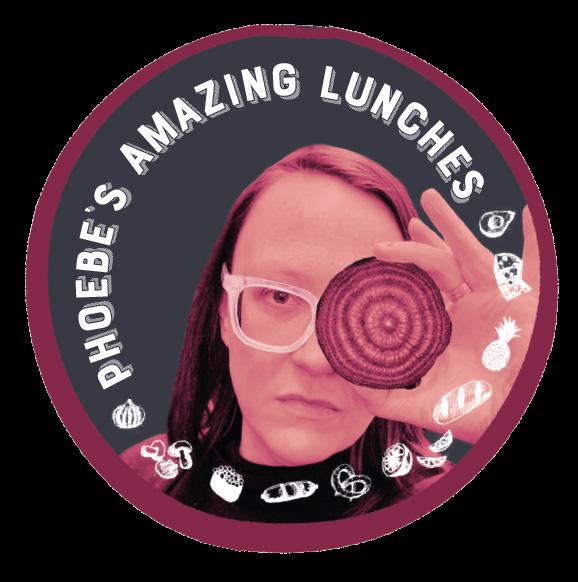
Phoebe Weller of Valhalla’s Goat in Glasgow has gone all pointy and sparkly. She can no longer type, but at least there’s some good news on the plantar fasciitis front
sparkly (not me, the nails), with different iterations of the same design on them, or little pictures of playing cards or flames or flowers or just encrusted with jewels. I never thought I could, and then somehow I had and then somehow I made them pointy and then lo and behold they were goldenpurplepeach, like a particularly enthusiastic sunset. A pointy and sparkly sunset – I can’t take my eyes off them.
Alike a tit, although I can see why you think that might be a thing I like. Ah, the great departed No Nonsense Jill, now sitting on a comfortable tussock in Kincardineshire inhaling deeply on her great robotic fist of a vape, barely discernible through the cloud of Bloodsukka Donut Shake recently exhaled from her sugary lungs.
I have long complimented customers not only on smelling nice (who smells nice? I say accusatorially like someone has trumped (not that one) and everyone looks ashamed while I go round sniffing them) but also on their talons. I like your nails, I puff, longingly, all pointy and
nd yes, it makes things difficult. I can’t, for example, type: my cat is taking dictation for this (handful of Dreamies for you, Pepina, if you can standardise the seemingly erratic but entirely sensible capitalisation!) nor tie my shoelaces. And yes, yes, I am aware of the non-sensical addition of shoelaces into this clog-heavy Amazing Lunch. Alas, it was recently pointed out to me that the plastic clogs were possibly aggravating my plantar fasciitis, encouraging my chilblains and were an excellent breeding ground for tinea unguium, so I am now clod in very No Nonsense Gore-Tex® Wallabees with a chunky, cleated Vibram® sole, which complement the sunset nails perfectly. Until the tinea unguium sets in above the waist.


My journey to moderate drinking may be a marathon rather than a sprint
I’m now at an age that can be described as in my fifties – mostly because I am, now, in my fifties.
As with many folk of a certain age, I feel time’s winged arrow at my back and I’m trying to prevent it hitting its target quite so soon.
Recently I’ve got back into running and last year took on the London Marathon for the third time. I trained harder, smarter and better than I had previously, and in doing so achieved a PB and a hernia. A PB attracts a nice bit of Strava kudos; a hernia attracts the surgeon’s knife.
Before said slicing and dicing, I had to go for a pre-operation chat and the usual health questions were asked. “Do you smoke?” “No.” “Have you ever smoked?” “No.” “Do you drink?” “Yes.” “How many units a week?” “Well, I don’t know. Maybe 40-45 … how many units are in a bottle of wine?” “Well, how many glasses are in a bottle of wine?” “I don’t know, it depends how big your glasses are.”
The long and short of it is we got nowhere and I was ordered back for further blood tests. I’m not sure if they were worried about me bleeding out or whether they wanted to fit a little bag-inbox tap to me.
I did do a little research as to how many units are in a bottle of wine and it turns out I drink about 70 units a week. Way, way above the recommended dosage and probably a cause for concern. But, in the way of the modern man trying to talk himself back down from the ledge
of abstinence, I consoled myself with the knowledge that I never drink to get drunk, I don’t binge, I only drink for flavour and I never drink during the day.
These days we never have a bottle of wine open on the counter for customers to try, something that used to be commonplace. When my father ran the business, he would always have something open for tasting. Then again it was not unheard of, and alarmingly regular, for him to consume three bottles during a working day.
He retired to France at the ripe old age of 47 and shuffled off this mortal coil at the age of 65. The cause? Alcoholism. So maybe I should pay a little more attention to the units and drink a little less. But I am a man, and we are woefully undeveloped in the heeding-the-lessons-of-our-forebears department (see all wars for further details).
So I’ll keep running and keep drinking, but I’ll also keep clear of getting too high on my own supply, at least during the day
Rob Hoult is the owner of Hoults in Huddersfield
My father retired to France at the ripe old age of 46 and shuffled off this mortal coil at the age of 65. The cause? Alcoholism





There isn’t an easier cocktail to make than the Screwdriver. It is alleged to have emerged among Americans working in the Gulf oil industry, who sneakily stirred vodka into their orange juice with the tool because it was all they had to hand. Vodka and OJ remain the sole ingredients today, though using other more conventional kitchen or bar implements to blend them together is perfectly acceptable. By its nature, the Screwdriver can be cloyingly sweet to those not inclined that way, so the addition of Aperol, Campari or similar can bring a centring bitter refreshment to the classic pairing.

5cl premium vodka
2.5cl Aperol
Orange juice
Soda (optional)

Combine the vodka, Aperol and juice in a long glass over ice. For an extra refreshing fizz, make the non-alcohol element a 50:50 juice/soda mix.

The event promises winemaker-led tastings and seminars and a wide array of Bordeaux wines presented alongside street food and music.
Visitors can taste red, white, rosé, sparkling and sweet wines as well as test their tasting skills at the Ecole du Vin-run Bordeaux Casino, and explore Bordeaux’s varietals at shot stations.
For more information about the event and to register, contact teambordeaux@ cubecom.co.uk.
Wednesday, May 1
Market Halls (Oxford Circus)
9 Holles Street
London W1G 0BD
Importers and producers will present their latest releases and vintages from across Spain’s regions and DOs for the 36th edition of this annual event.
In London, around 50 Spanish wine specialists will be pouring 1,000 wines. Educational masterclasses will form part of the programme.
The Edinburgh event will feature around 200 wines.
For more information and to register for either tasting, contact winesofspain@ otaria.co.uk.
Tuesday, May 14
The Pelligon
43 Bank Street
London E14 5NX
Monday, May 20
The Balmoral Hotel
1 Princes Street
Edinburgh EH2 2EQ
A chance to taste over 100 Italian wines from a wide range of Italian producers.
All wines on show are from independent family-owned estates, showcasing indigenous varieties vinified using production methods that focus on local traditions and sustainability.
Ten producers will attend personally: Castello di Neive (Barbaresco), Enzo Boglietti (Barolo), Giacomelli (Colli di Luni, Liguria), Aldo Rainoldi (Valtellina, Lombardy), Pojer e Sandri (Vigneti delle Dolomiti, Trentino), Primosic (Collio/ Oslavia, Friuli), Valdicava (Montalcino), Vignamato (Castelli di Jesi, Marche), Antonelli (Montefalco, Umbria) and Ciavolich (Colline Pescaresi, Abruzzo).
For more information and to register, contact masi@fortyfive10.com.
Tuesday, May 14
The Swan at The Globe Theatre
21 New Globe Walk
London SE1 9DT
Twenty Canadian producers will be pouring their wares from the regions of British Columbia, Ontario and Nova Scotia.
Masterclasses will be co-presented by wine writer Jamie Goode and Janet Dorozynski, trade commissioner for Canadian wine, beer and spirits.
For more information and to register, contact anny@westburycom.co.uk.
Tuesday, May 14
Canada House
Trafalgar Square
London SW1Y 5BJ
Producers include Château Pichon Baron, Château Pichon Lalande, Château Suduiraut, Château La Gaffelliere, Château Beychevelle, Château Lafon Rochet, Château Grand-Puy-Ducasse, Château Branaire Ducru and Château Brane Cantenac, alongside exclusives Prélude à Grand-Puy-Ducasse, Château George 7, Château Moulin Rouge and Château Daugay, among many others.
For more information and to register, contact katyas@davy.co.uk.
Friday, May 17
Haberdashers’ Hall
18 West Smithfield
London EC1A 9HX
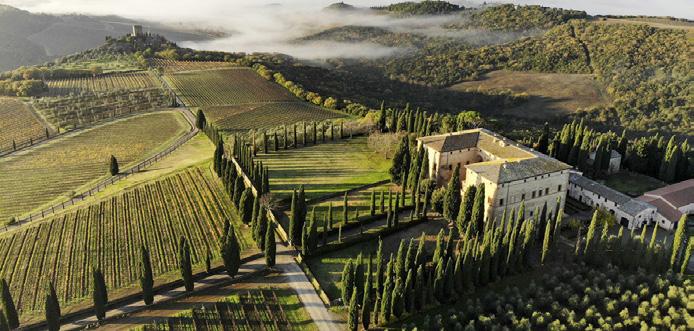
The Argiano estate in Montalcino
This event will showcase premium, artisanal wines from across Italy produced by family growers.
Highlights include Argiano, Fratelli Berlucchi, Cortonesi, Azienda Agricola Michele Reverdito, Di Giuseppe, Mauro Pavia, La Rivolta and Casa D’Ambra.
For more information and to register, contact vanessa@thormanhunt.co.uk.
Wednesday, May 15
67 Pall Mall
London SW1Y 5ES

There are still some bursaries available for independent wine merchants who want to visit the London Wine Fair this year.
The show will be at Olympia in Kensington from May 20 to 22.
Each bursary will include three free-entry tickets (worth £49.50 each), giving merchants and two colleagues access to the fair across all three days. In addition to entry, the tickets will allow access to masterclasses and panel discussions as well as walk-up theatres.
Up to £100 in travel expenses will also be awarded with each bursary.
By visiting the London Wine Fair this year, merchants will be joining over 10,000 drinks industry professionals who will be
tasting wines from over international 400 exhibitors.
This year's Wine Merchant Top 100 winners will be unveiled, with all 100 wines being poured by the editorial team over the three days of the show.
There will be a range of interactive masterclasses and panel discussions, and this year also sees a new digital networking and show planner platform.
There will also be the chance to witness the Judgement of London, a homage to the late Steven Spurrier’s landmark Judgement of Paris Tasting of 1976. A collection of wines curated by Ronan Sayburn MS and Sarah Abbott MW will be tasted by a panel comprising some of the industry’s most discerning palates. Apply for bursaries at london-wine-fair-2024.reg.buzz
The Links, Popham Close
Hanworth Middlesex TW13 6JE
020 8744 5550
info@richmondwineagencies.com

@RichmondWineAG1
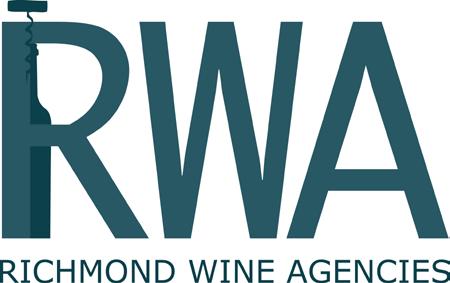
Richmond Wine Agencies are delighted to introduce to you the wines of our new agency: Bodega Estampa.
RRPs £12-£28
With over 20 years of winemaking expertise, Estampa are a renowned family-owned producer situated in the heart of Colchagua Valley, founded in 2001 by Miguel Gonzales-Ortiz.
Sustainability is at the heart of Estampa’s operations: it adheres to Chile’s sustainability codes relating to vineyard management, process and production, and community engagement.
We would like to highlight in particular their Italian influenced Inspiracion range:
• Inspiracion Nebbiolo Bodega Estampa 2021
• Inspiracion White Blend Fiano Vermentino Greco Bodega Estampa 2021


28 Recreation Ground Road
Stamford
Lincolnshire PE9 1EW 01780 755810
orders@abs.wine www.abs.wine


@ABSWines Trade Tasting
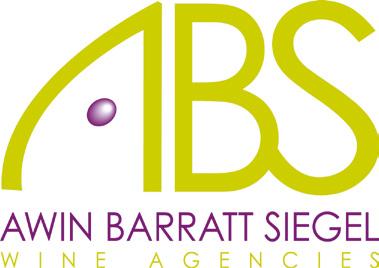

12:00 – 17:00
Tuesday 30th April ICA, London
Don’t miss the ABS table at The Big G, where we will be pouring a hand picked selection from across our German range, covering all price points. Featuring wines from Dönnhoff (Nahe), Stodden (Ahr), Gunderloch (Rheinhessen), Guntrum (Rheinhessen), Johner (Kaiserstuhl), Fürst (Franconia), Schnaitmann (Württemberg) and the entry level WALT range.
For more information contact your Account Manager












12-14 Denman Street
London W1D 7HJ
0207 409 7276
enquiries@louislatour.co.uk
www.louislatour.co.uk
@louislatouruk

Mulberry House
Parkland Square
750 Capability Green
Luton LU1 3LU
01582 722 538
sales@hnwines.co.uk
www.hnwines.co.uk



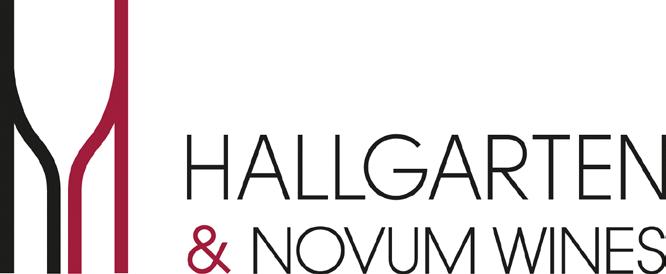
The newest addition to the Botanicals Collection. Each wine is named after the common colloquial name of the meadow plant dominant in its respective vineyard block creating a new dimension for fine New Zealand wine. They are wines that truly breathe of their place.
Evocatively named after the dominant pasture plant found in the vineyard, we continued that theme with Snake’s Tongue, one of many common names used for blue borage, Vipers (snake’s) bugloss (ox-tongue).
Unquestionably Central Otago, through a Pyramid Valley lens.
Delightful floral notes of lavender and violets followed by crunchy strawberries, cherry tomatoes, and orange wedges. Medium-bodied with refreshing acidity and velvety fine tannins. Very precise and well-framed wine with great finesse and elegance. 96 Points. Jamessuckling.com
For more information, please contact sales@ louislatour.co.uk or scan the QR code.

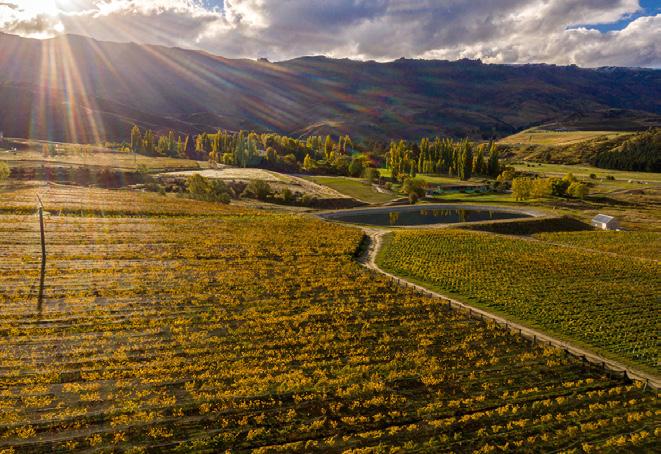

The Woolyard
52 Bermondsey Street
London SE1 3UD
020 7840 3600
info@mentzendorff.co.uk
www.mentzendorff.co.uk

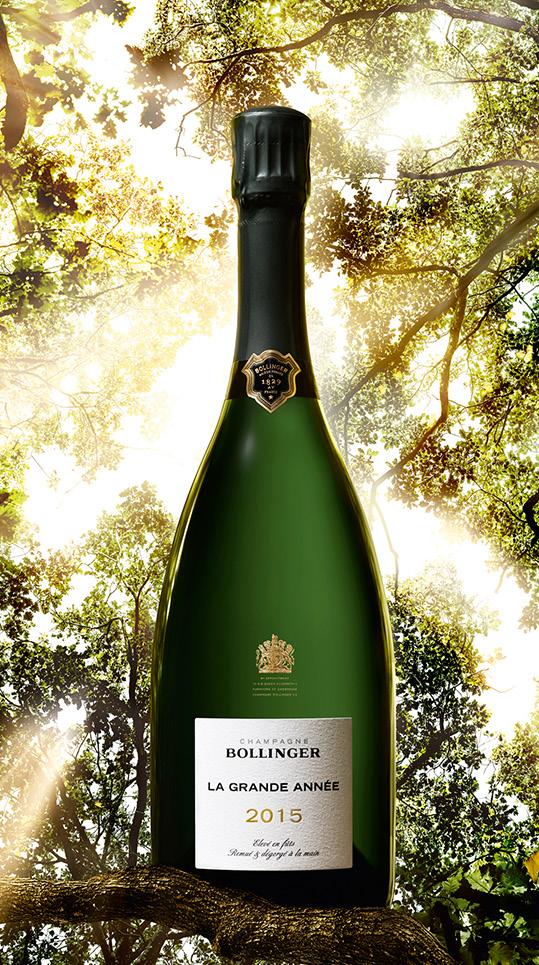
buckingham schenk
Unit 5, The E Centre
Easthampstead Road
Bracknell RG12 1NF
01753 521336
info@buckingham-schenk.co.uk
www.buckingham-schenk.co.uk




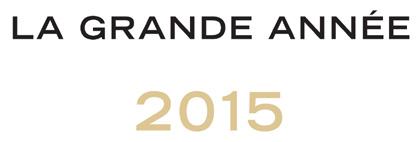
Champagne Bollinger is delighted to announce the launch of the prestigious La Grande Année and La Grande Année Rosé 2015. These two exceptional cuvées, from an outstanding year, are showcased through the Bollinger savoir-faire:
“2015 expresses more of the soul of a Bollinger vintage than any other year. More opulent, more powerful, it exalts Pinot Noir. Uplifted by maturation in wooden casks, this champagne reveals the characteristics of an exceptional year.”
For more information, please contact your Mentzendorff Account Manager

Hailing from Campania, a territory rich in indigenous grape varieties, Corte del Golfo has selected those that have been recently rediscovered to create some of the most unique and interesting Italian whites.
Corte del Golfo has selected three outstanding native white varieties from Campania that best represent the highest quality: Falanghina, Coda di Volpe and Greco di Tufo. Chosen by our winemakers for their fruity notes and minerality, these wines also come complete with an artistic, art deco design to their labels which accentuate the feel of a truly special wine.
4 Pratt Walk, Lambeth
London SE11 6AR
0207 735 6511
www.thormanhunt.co.uk

@thormanhunt
sales@thormanhunt.co.uk
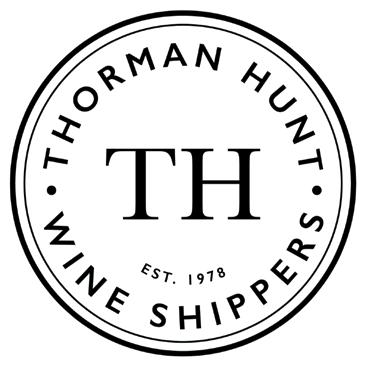
New Bank House
1 Brockenhurst Road
Ascot
Berkshire SL5 9DL
01344 871800
info@hatch.co.uk
www.hatchmansfield.com

@hatchmansfield
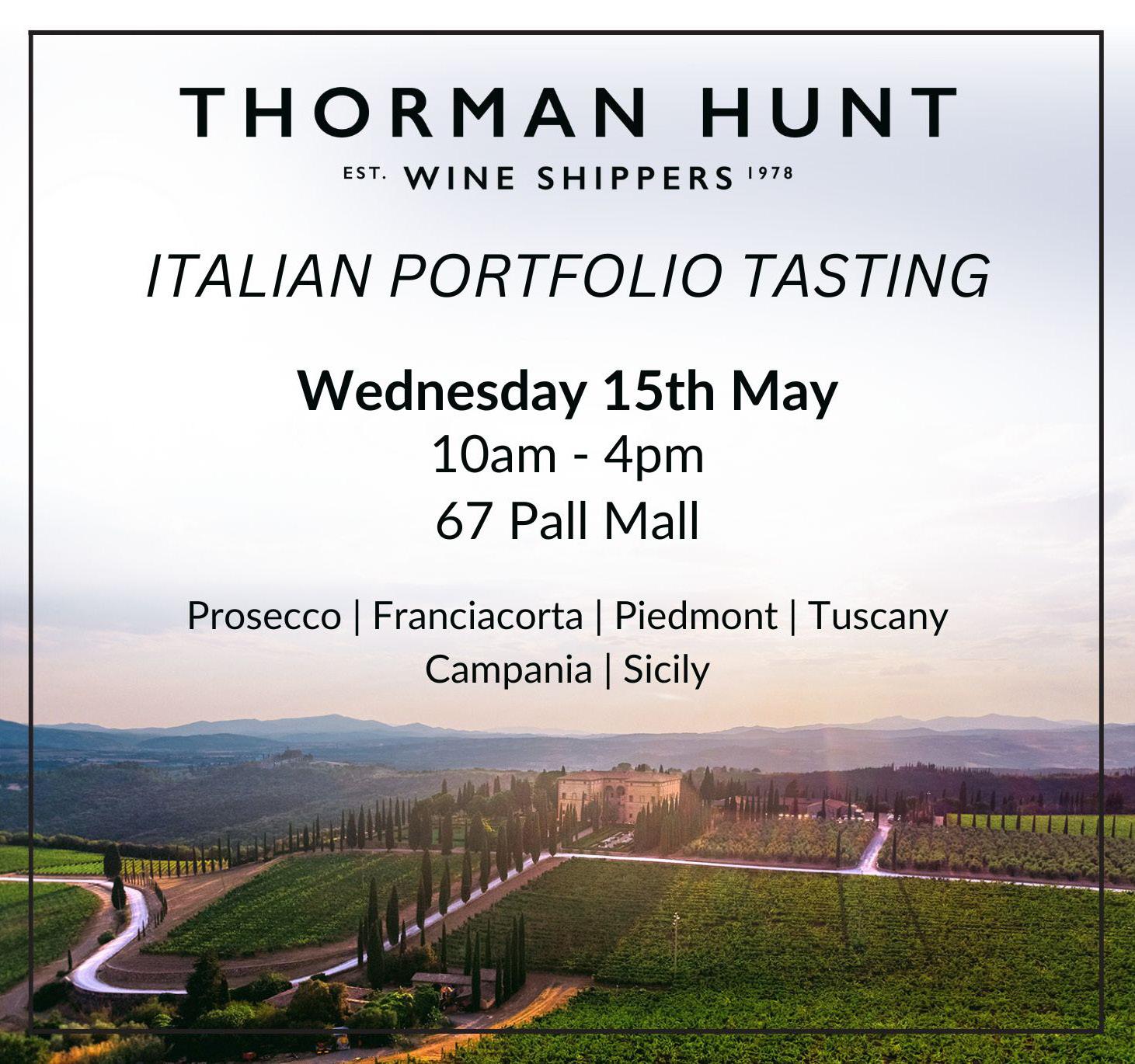

Once again we are delighted to be supporting the London Wine Fair, the UK’s biggest drinks trade event.
Join us and our winemakers on STAND D40 FROM 20th - 22nd MAY and taste through an exciting array of wines from our premium portfolio.
Fells House, Station Road
Kings Langley WD4 8LH
01442 870 900
For more details about these wines and other wines from our awardwinning portfolio from some of the world’s leading wine producing families contact:
info@fells.co.uk www.fells.co.uk

@FellsWine

je_fells
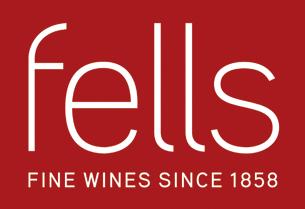
109a Regents Park Road
London NW1 8UR
0207 449 1665
orders@walkerwodehousewines.com www.walkerwodehousewines.com


@WalkerWodehouse
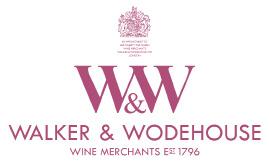

Champagne Lallier, the prestigious Champagne house, owned by Campari Group, has joined Walker & Wodehouse’s portfolio of wine producers. Champagne Lallier will be exclusively wholesaled to independent merchants through Walker & Wodehouse.
Nestled in Ay, in the heart of Champagne’s Grand Cru region, Champagne Lallier was founded in 1906. Now led by Cellar Master, Dominique Demarville, previously chef de cave at Veuve Clicquot, he focuses on making the most of the area’s brilliant terroir, utilising generations of knowledge of the Lallier team to create the perfect balance of purity, freshness, intensity and depth.

Lallier’s innovative Réflexion range brings a fresh perspective on Champagne each year, and embodies its creative winemaking philosophy which is driven by nature and curiosity. Unlike a traditional Non Vintage Champagne, it expresses the individual character of the year’s harvest, whilst still staying true to the Lallier signature style. R.020 Brut Multi-Vintage cuvée is Dominique Demarville’s first blend as Lallier Cellar Master and General Manager.
For more information, please contact your account manager.
The Old Pigsty, Rose Cottage Church Hanborough OX29 8AA
01993 886644
orders@delibo.co.uk
www.delibo.co.uk
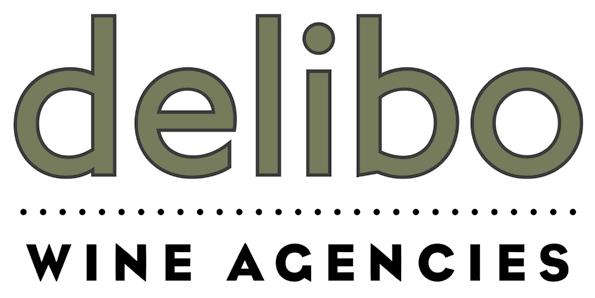

The computer system for drinks trade wholesalers and importers
16 Station Road Chesham HP5 1DH
sales@vintner.co.uk
www.vintner.co.uk



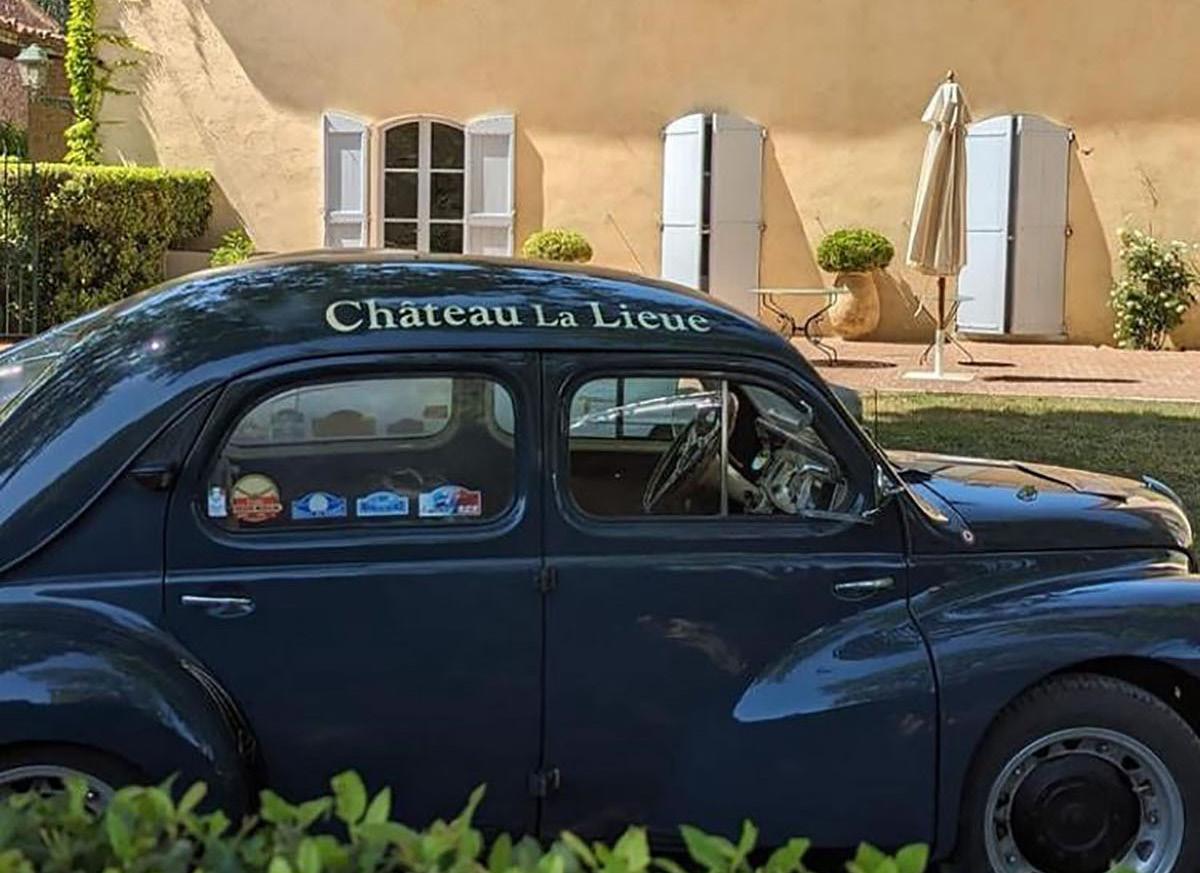

Provence rosé is a crowded category – we go further to bring a family and range of wines that give you the edge.
Hidden away in the heart of the Var for five generations, the Vial family have been quietly perfecting their vineyards and wines since 1876. The results are breathtaking.
Certified ORGANIC since 1998, leading the way, aiming to create perfect harmony with their land, Julien Vial and Delibo are excited to present the 2023 Vintages of La Lieue under the contemporary La Lieue label and the Cuvée Tradition. Be a step ahead of the competition and be part of this amazing family story …magnums arriving soon … exciting!

020 7720 5350
order@libertywines.co.uk
www.libertywines.co.uk


@liberty_wines



23 Cellini Street
London SW8 2LF
www.topselection.co.uk
info@topselection.co.uk
Contact: Alastair Moss
Telephone: 020 3958 0744


@topselectionwines
@tswine

There has been genuine growth in the popularity of rosé wines in recent years, with a significant increase in market share in the off-trade since 2019. Here, we highlight just three of the exciting premium rosés now available from the 2023 vintage.
The certified-organic Château La Verrerie Luberon Rosé is made using the saignée method by Valentine Tardieu-Vitali, who ranked in Le Figaro Vin’s 50 Best Winemakers of France 2023. A blend of Grenache, Cinsault and Mourvèdre with a perfumed nose and crisp acidity, it is aged on lees for three to six months to add texture to the palate.
Can Sumoi is a collaboration between Pepe Raventós of Raventós i Blanc and his childhood friend, Francesc Escala, located in the Baix Penedès of their native Catalonia. Their certified-organic ‘La Rosa’ is a lively blend of 60% Sumoll from the villages of Capellà, Fidel, Prat and La Torra at 600 metres above sea level, and 40% Xarel-lo from Torrent de la Casa and La Costa, at 300-400 metres in the Montmell Mountains. Silky textured and delicately floral, it is a distinctly Mediterranean rosé.
Hailing from Maldonado on the Atlantic coast in southern Uruguay, Bodega Garzón’s Estate wines offer superb value. Their Pinot Noir ‘Rosé de Corte’ is elegant and expressive with intense strawberry and cherry aromas, refreshing acidity and a distinct minerality – a perfect pairing for the new season’s lighter dishes.

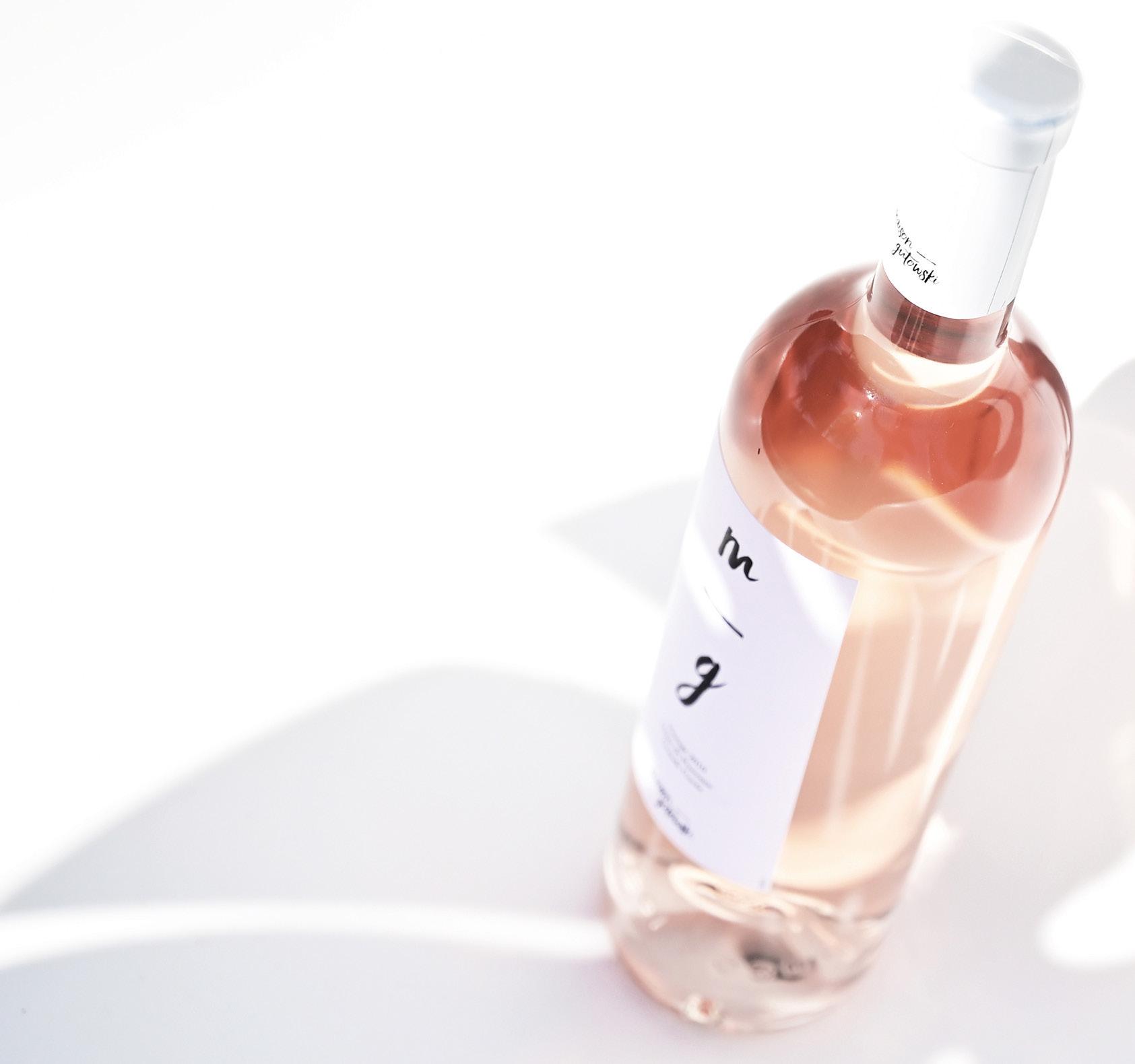
M–G Grande Cuvée AOC Côtes de Provence
Stand out from the crowd with the award-winning M–G Grande Cuvée. A beautifully expressive rosé made from selected old vine parcels and bene tting from extended lees ageing.
Contact us now for samples and further details.
BUY 6 CASES GET A 7th FREE

O er ends June 30th.
O er valid across the whole Maison Gutowski range.
“My vines are my heroes. I’m totally in awe of them all”Katie Jones
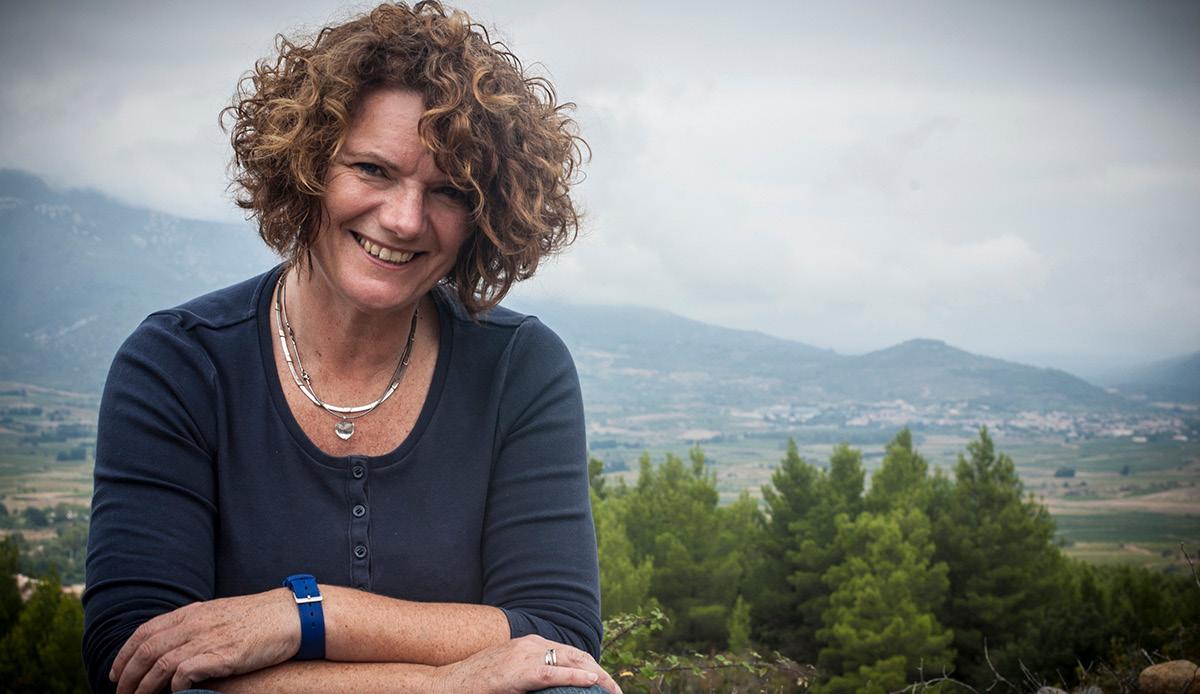
Katie moved from England to the south of France in the early 90s, working in sales and marketing for the Mont Tauch co-operative before buying her own vineyards and setting up Domaine Jones in 2008, where she makes wines in a converted train shed.
What’s the first wine you remember drinking?
Lutomer Laski Rizling, although I’d prefer to forget. It was during my student days at Hull University. I studied European studies after not knowing which subject to drop after A-levels. Paul Heaton from The Housemartins lived just around the corner from me. The Laski Rizling was one of the very few wines available at Grandways supermarket.
What job would you be doing if you weren’t in the wine trade?
It would be something very French. I’ve spent more of my life in France than I have in the UK and I became a French national in 2022. I could have studied pharmacy and
taken over my dad’s chemist in Ashby de la Zouch or taken over my mum’s perfumerie, both of which greatly inspired me in my winemaking career.
How do you relax?
Walking my Cairn terrier, Ashby, through my vineyards. He’s named after my hometown in Leicestershire.
What’s the best book you’ve read recently?
Jean de Florette was a source of inspiration for my own little adventure in the back of beyond in rural France. I’ve read it so many times. I never thought that I would actually live my own Jean de Florette tragedy with the village turning against me. I’d always thought I’d be more a Manon des Sources with my herd of goats on the hillside.
Give us a Netflix recommendation. Has to be Barbie!
Do you have any sporting loyalties? Wales in the Six Nations. I’m half Welsh.
I live in the heart of rugby country here in France and I was at the France v Wales match in March. As always, the Welsh anthem brought tears to my eyes.
Who’s your favourite music artist?
Nino Ferrer for one song, Le Sud, all about the beautiful place I call home.
Any superstitions?
I used to have, but not anymore.
Who’s your favourite wine critic?
Brad Horne (Wine Time London) for determination, Helen McGinn and @ Mannydoeswine for making me smile.
What’s your most treasured possession?
My late husband Jean Marc’s favourite vineyard planted by him with Carignan on a hill overlooking Tuchan. It has a big rock in it used for my virtual tastings during lockdown, and where I used to sit with Jean Marc and admire the amazing scenery. It is my special place. Rather than making a red wine, I made a blanc de noirs in 2023 which I think would have made him smile and say, “that’s so Katie”.
What’s your proudest moment?
Putting Domaine Jones on the map with my virtual vineyard rambles during lockdown. I started in April 2020 and four years later we are about to get going again. The rambling community has been an amazing support to me throughout all the challenging times. We have a lot of laughs.
What’s your biggest regret?
I never regret.
Who’s your hero?
My old vines. I’m totally in awe of them all.
Any hidden talents?
Crocheting granny squares has recently become an obsession. But it may be shortlived as I have just bought an old house in Port la Nouvelle, the nearest town to Tuchan on the Mediterranean coast, and am about to embark on an ambitious restoration project.
What’s your favourite place in the UK?
Ashby de la Zouch. Did you know it’s the home of Hula Hoops?
If we could grant you one wish …
That my old vines could talk. I would love to hear about everything they have seen over the past century.
